Addis Ababa
We find ourselves wandering through a nascent city with tumultuous history, inside a country of profound cultural heritage, the cradle of mankind located in the Horn of Africa.
A Man Praying outside Holy Trinity Cathedral
We are unsure about how wealthy their material life is, but certainly they possess an enriched mental life, which sustains them in this mundane world.
On these days in March of 2019, this website came into existence; five years later, it has seen a significant journey, amassing a big amount of information which I can’t even recall myself. However, my present stance might have diverged from its past, as I have other ‘children’ to attend to. Drafting plan, packing, setting off, editing photos, writing a blog - rinse and repeat - it’s an arduous procedure and no longer a simple voyage. That entire procedure resembles a handcrafted gift in this era of AI.
The flight departing from Saigon-HCMC heading towards Addis Ababa with a layover at Changi, Singapore, and in that short transit time, lots of memories were rewound as I cherished the good old things: it had been the airport that I had to get up at 4am to ride a cab to, lounging on the seats along carpeted passages, dashing through the yellow information boards over the travelator; and also, the early Christmas trees Singapore had been decorating since October. I was taken back to a day in March of 2020, when COVID was about to rampage through the world, at that time in front of MRT platform walls were the posters advertising about Ethiopian Airlines hopelessly calling for travelers, and finally almost four years later, my ‘African Dream’ could be realized.
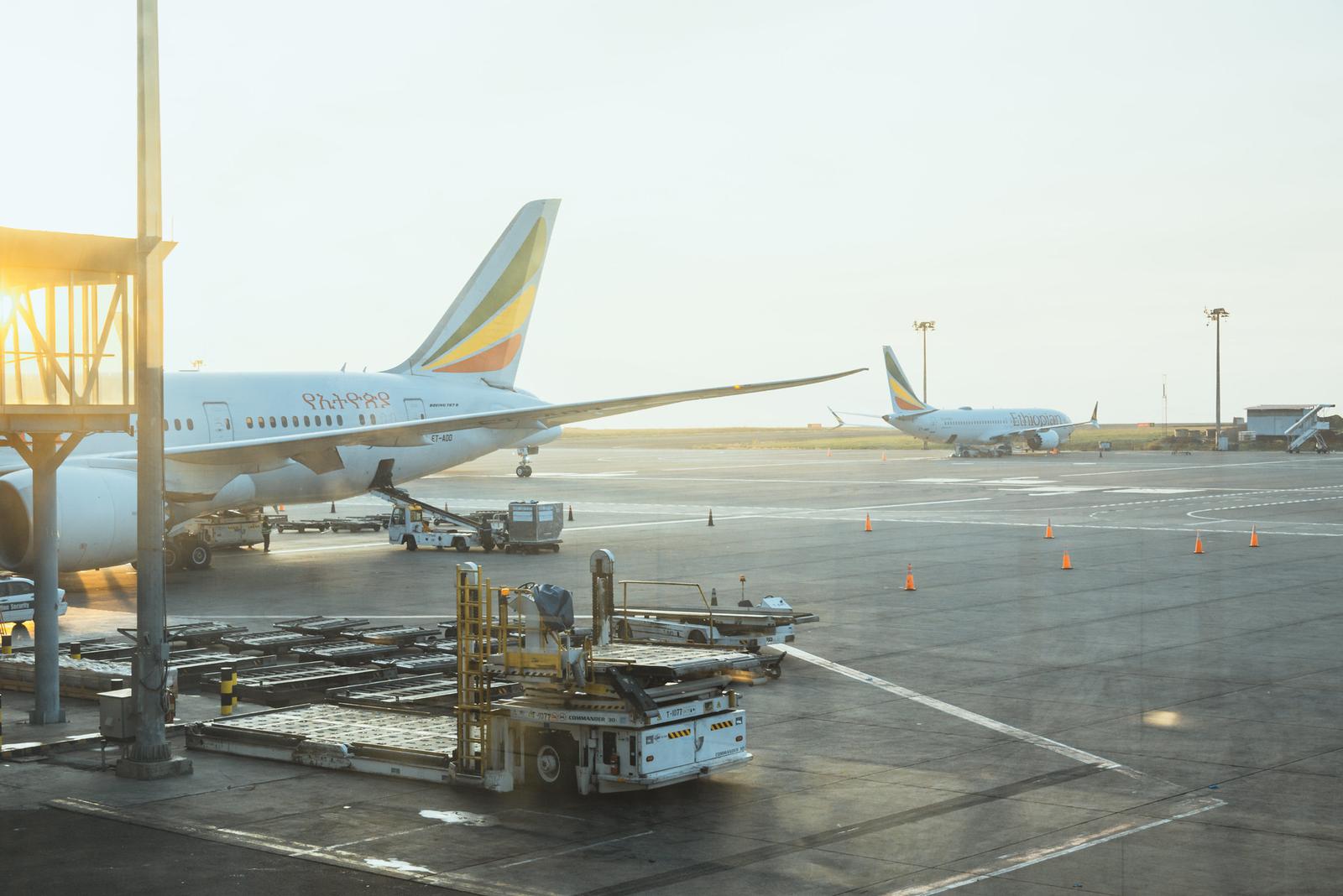
That lengthy flight was not filled with passengers, allowing me to stretch out across an entire seat row, while I was gazing at the cabin full of green. Finally the plane touched down at Bole in an autumn morning in November, after a long night. As Ethiopian Airlines is Africa’s flagship carrier, the immigration gates were uncrowded and hassle-free, contrast to the bustling transit zone. Money exchanged, a new SIM card in hand, and the journey began.
After a few initial uneasy hours evading the overpriced taxis or complaining with the receptionists who struggled with English, eventually I managed to check in and settle down. The cool Ethiopian highlands climate melted away my fatigue thankfully.
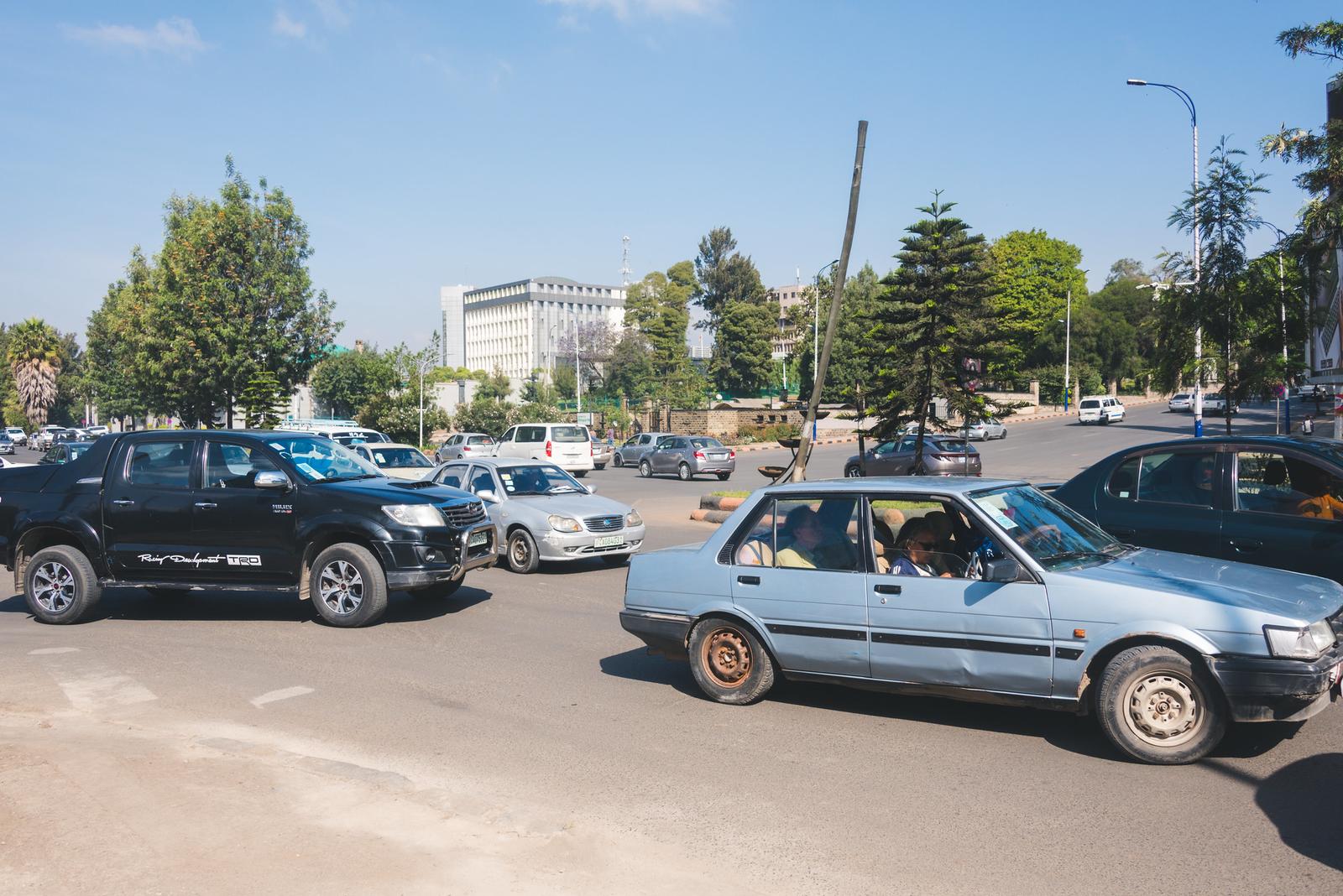
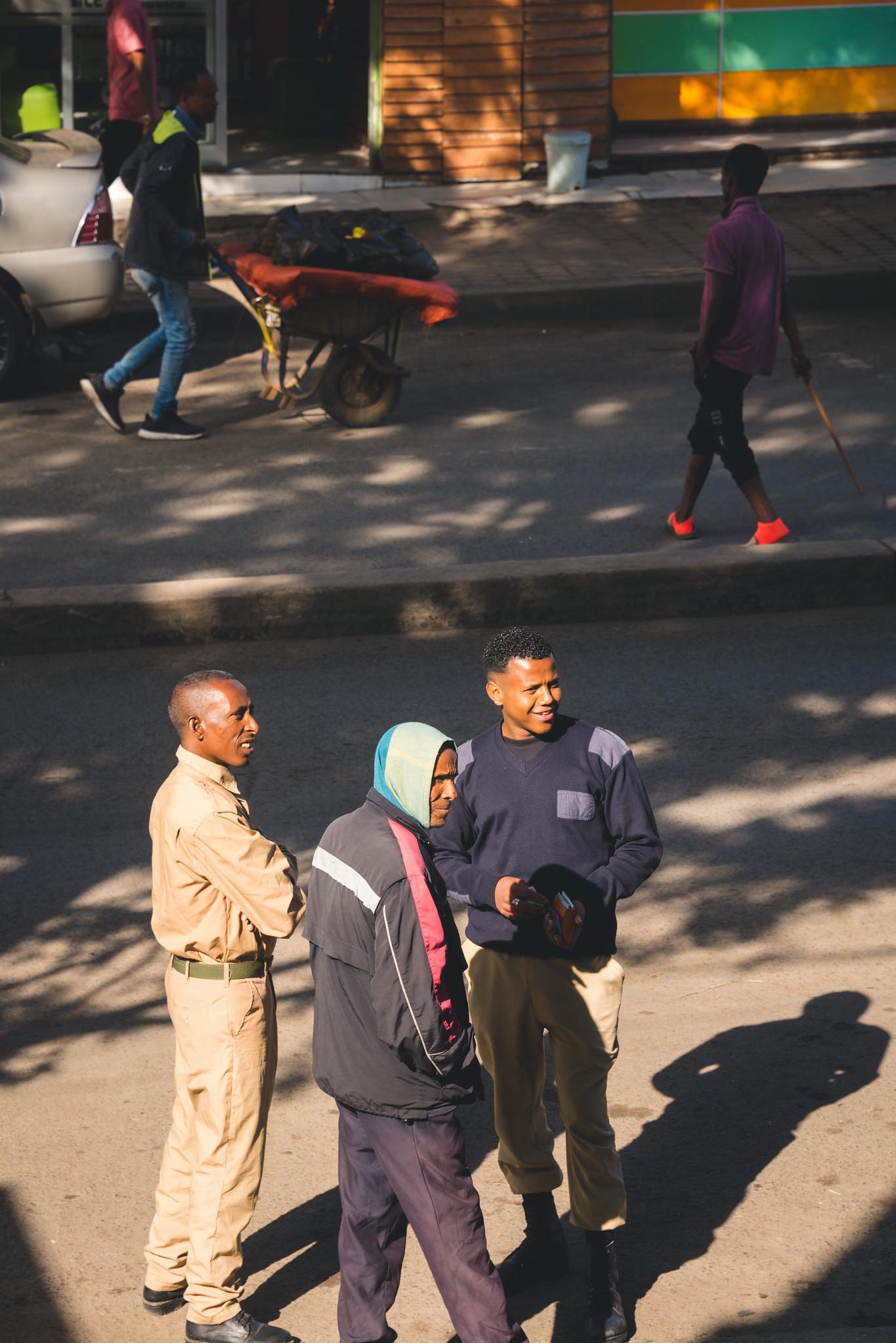
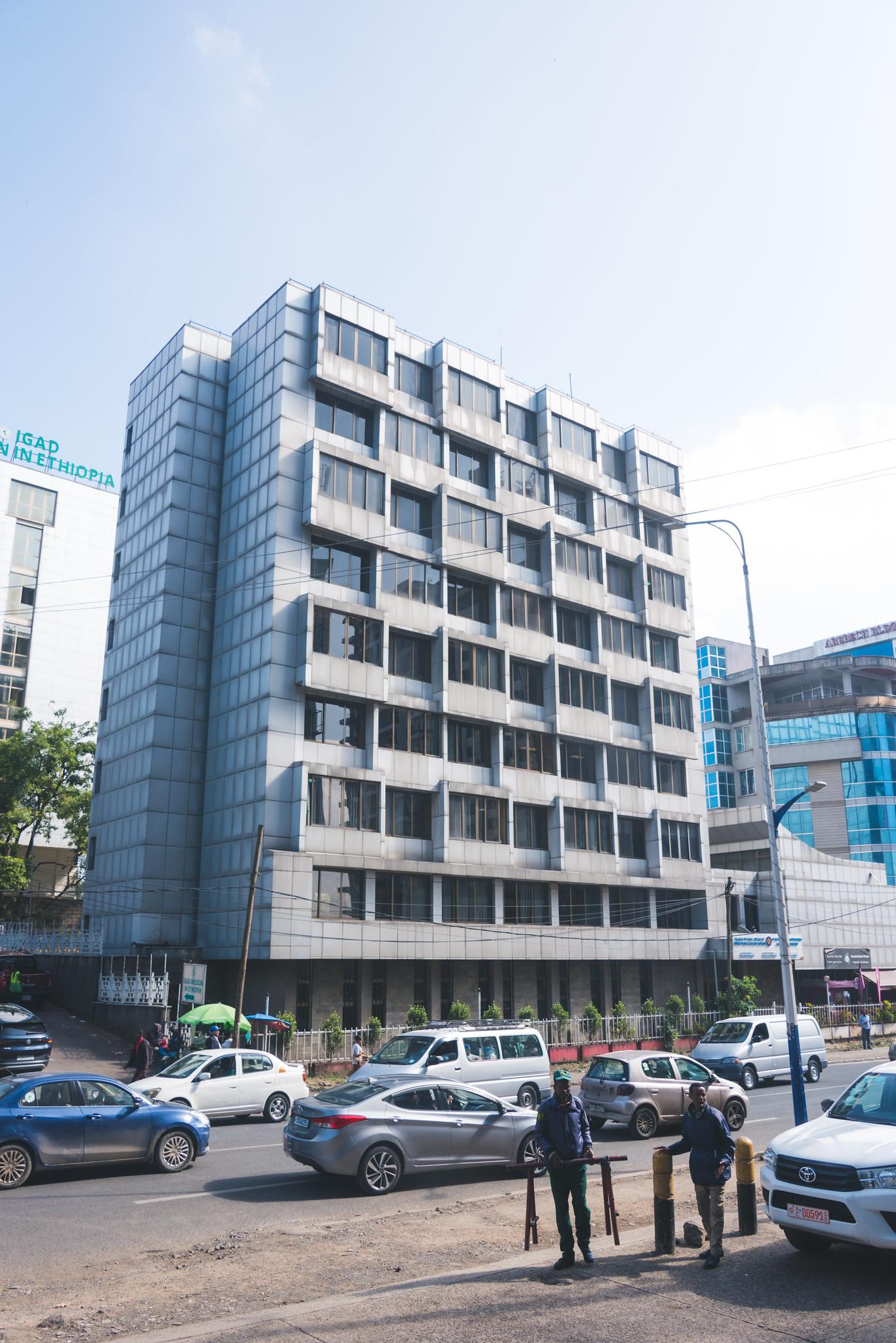
The first thing in my mind was to ride a taxi to the downtown area to complete my registration for the Danakil land tour, after that I would take a stroll around this city. It’s such a wise decision to book taxis via the Ride app from the beginning (despite the drivers’ having the same navigational inability), as the fares would be much cheaper than the regular taxis trying to rip you off.
While strolling, I encountered a guy who claimed to be from the conflict-ridden Tigray region, as he offered to be my free tour guide (although it wasn’t free at all, and somewhat annoying to be accompanied by a stranger). In Addis Ababa, if you happen not to have an African look and walk alone, you can catch everyone’s attention. The scarcity of tourists on the streets makes you stand out, and if you’re an Asian, you’ll be addressed as ‘China’.
The Churches in Addis Ababa
Saint Estifanos Church
The young man guided me towards Saint Estifanos Church after wandering along Menelik II Avenue - the main street at the heart of the city, near Meskel Square. Similar to the other churches here, once stepping inside its sanctuary, all the clamor outside fell away. Though this church isn’t very renowned, it gave me the initial glimpse into the spirit of this land: a country with devout people solemnly offering their morning prayers, and the women with white netela (ነጠላ) draped over their heads.
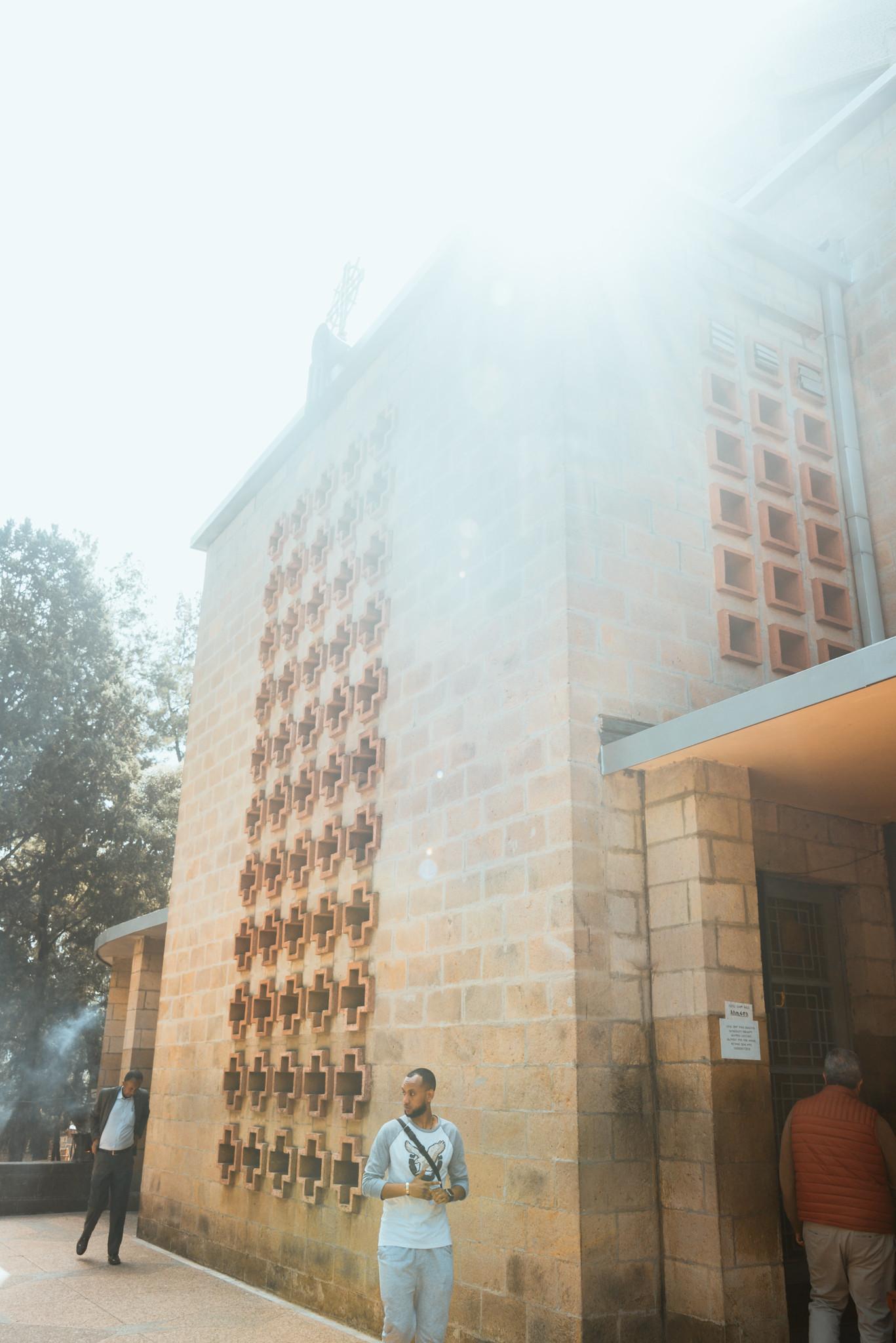
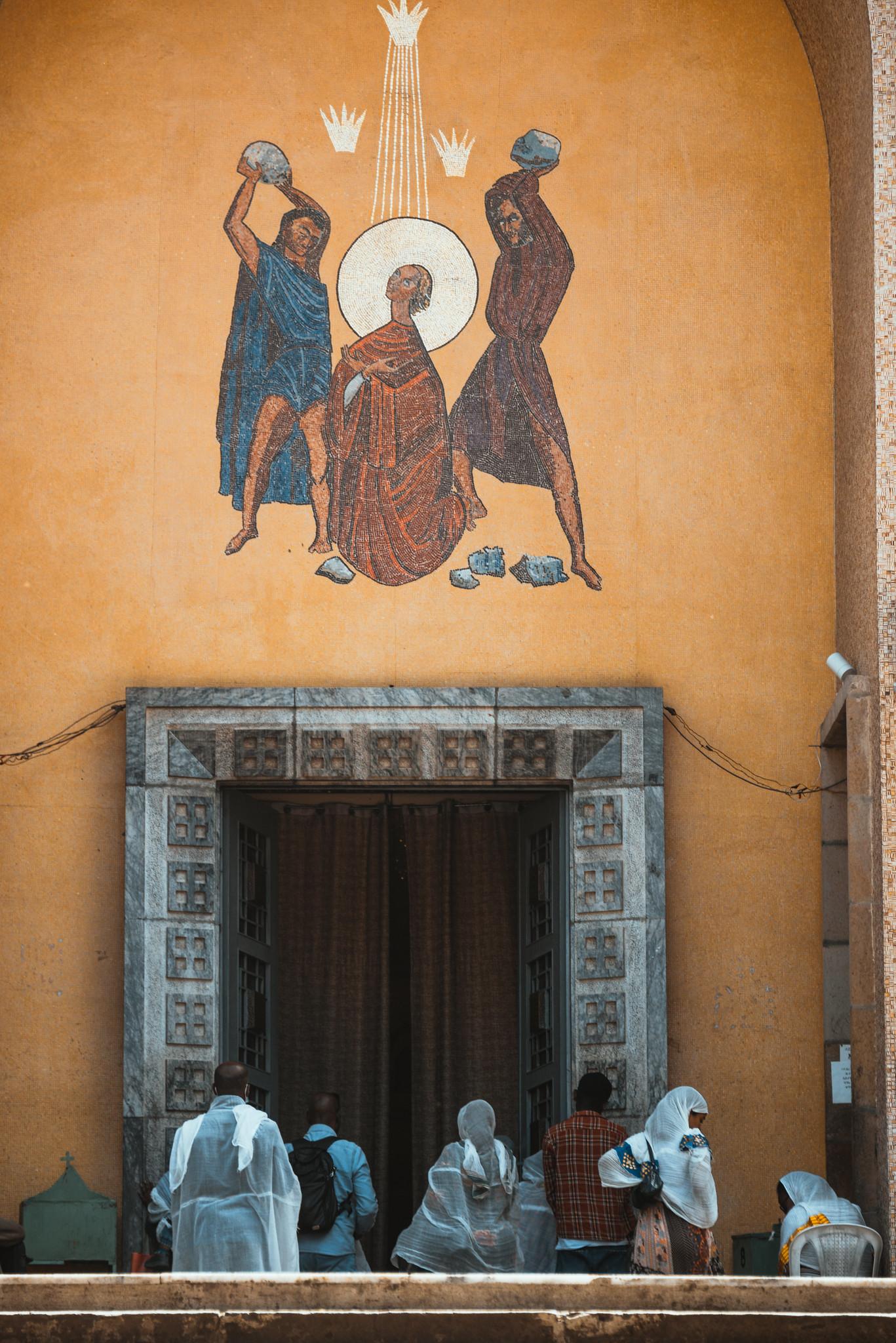
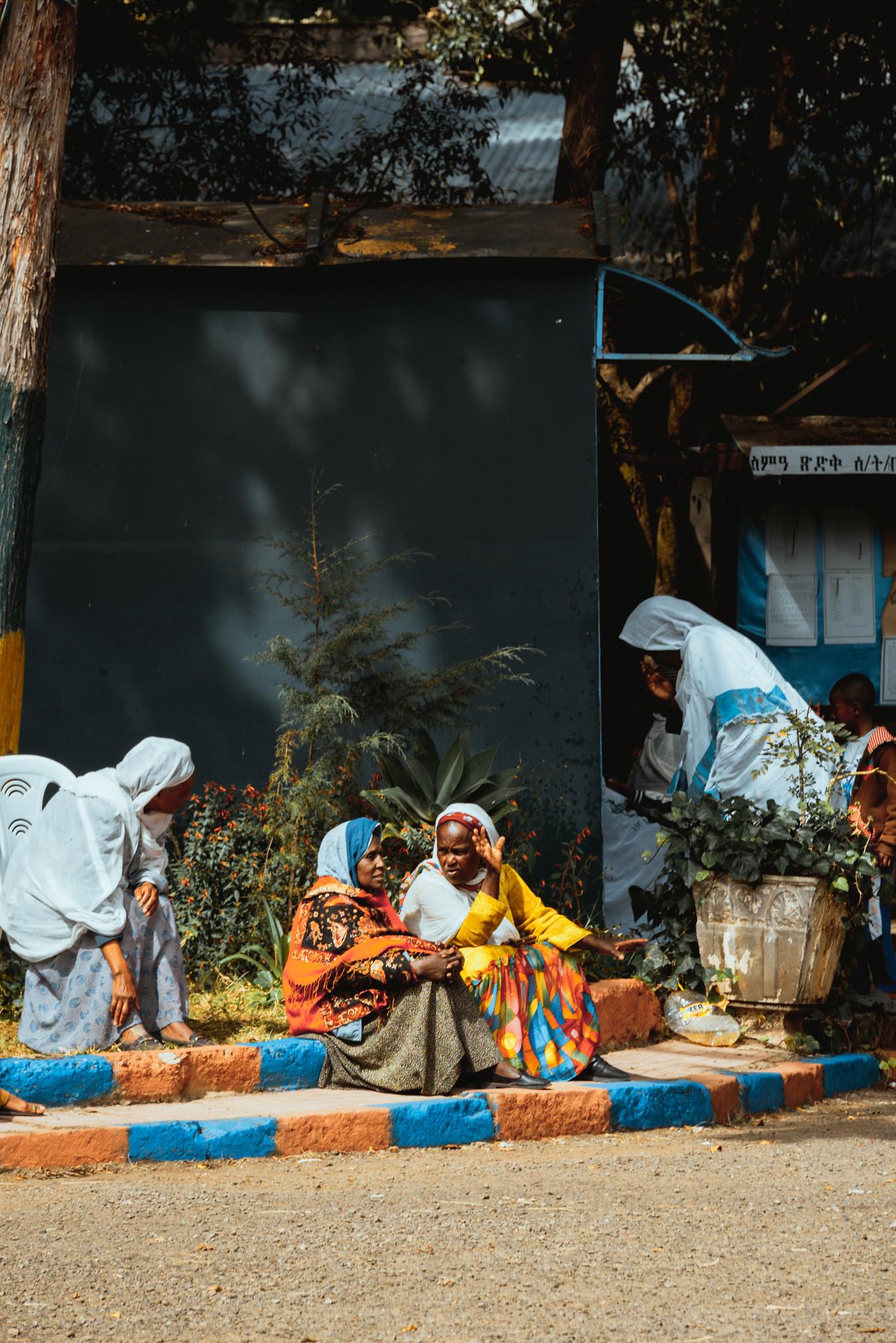
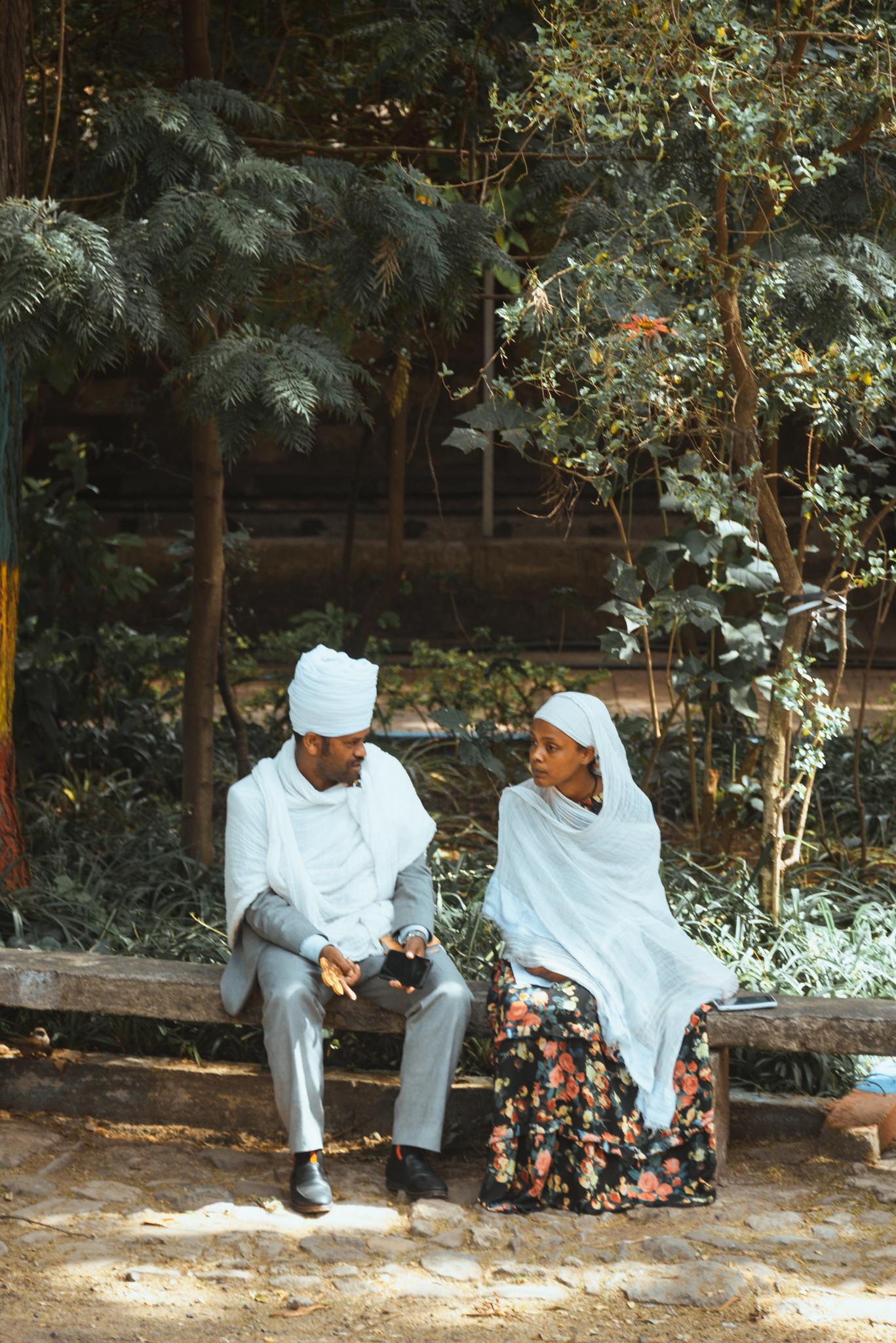
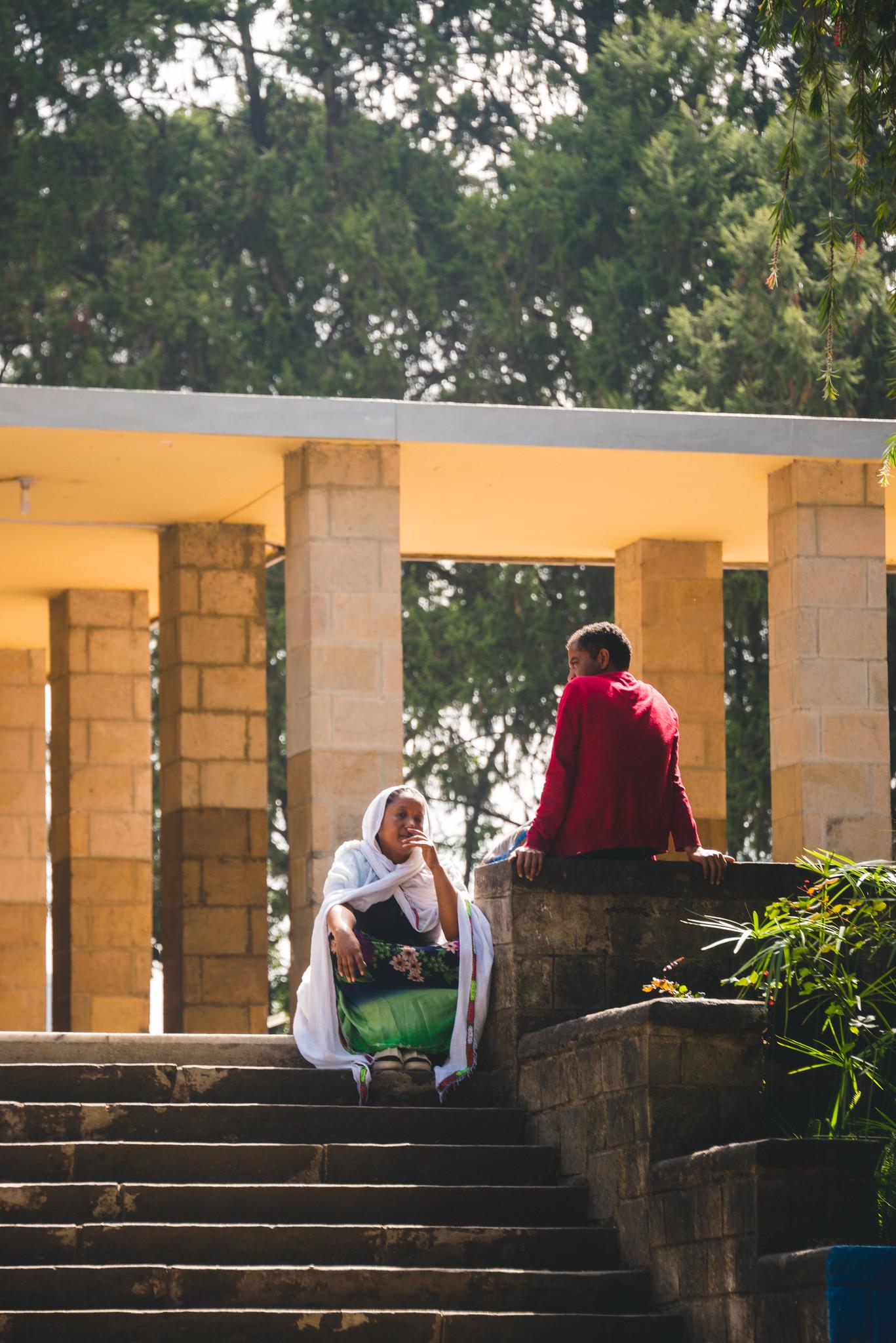
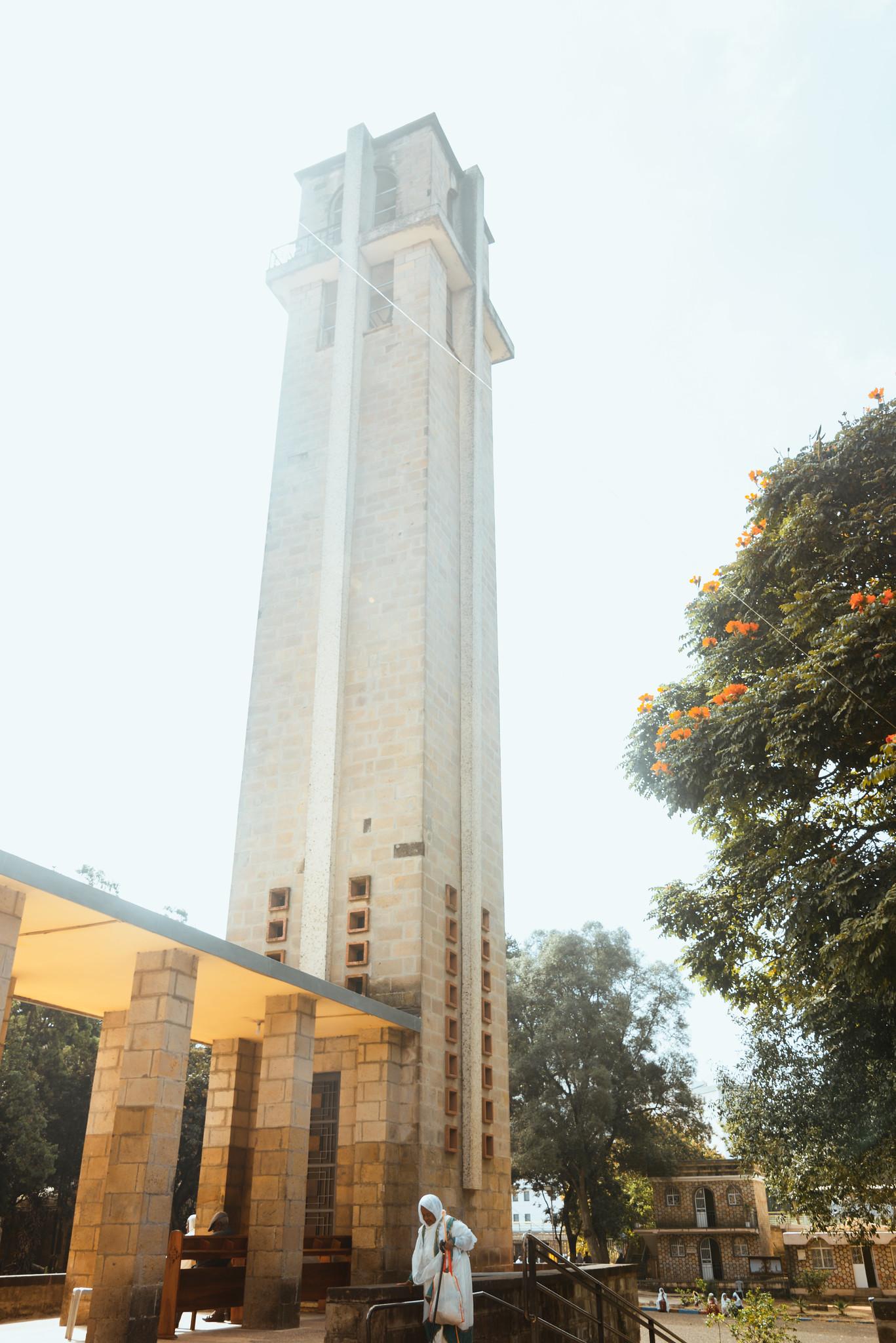
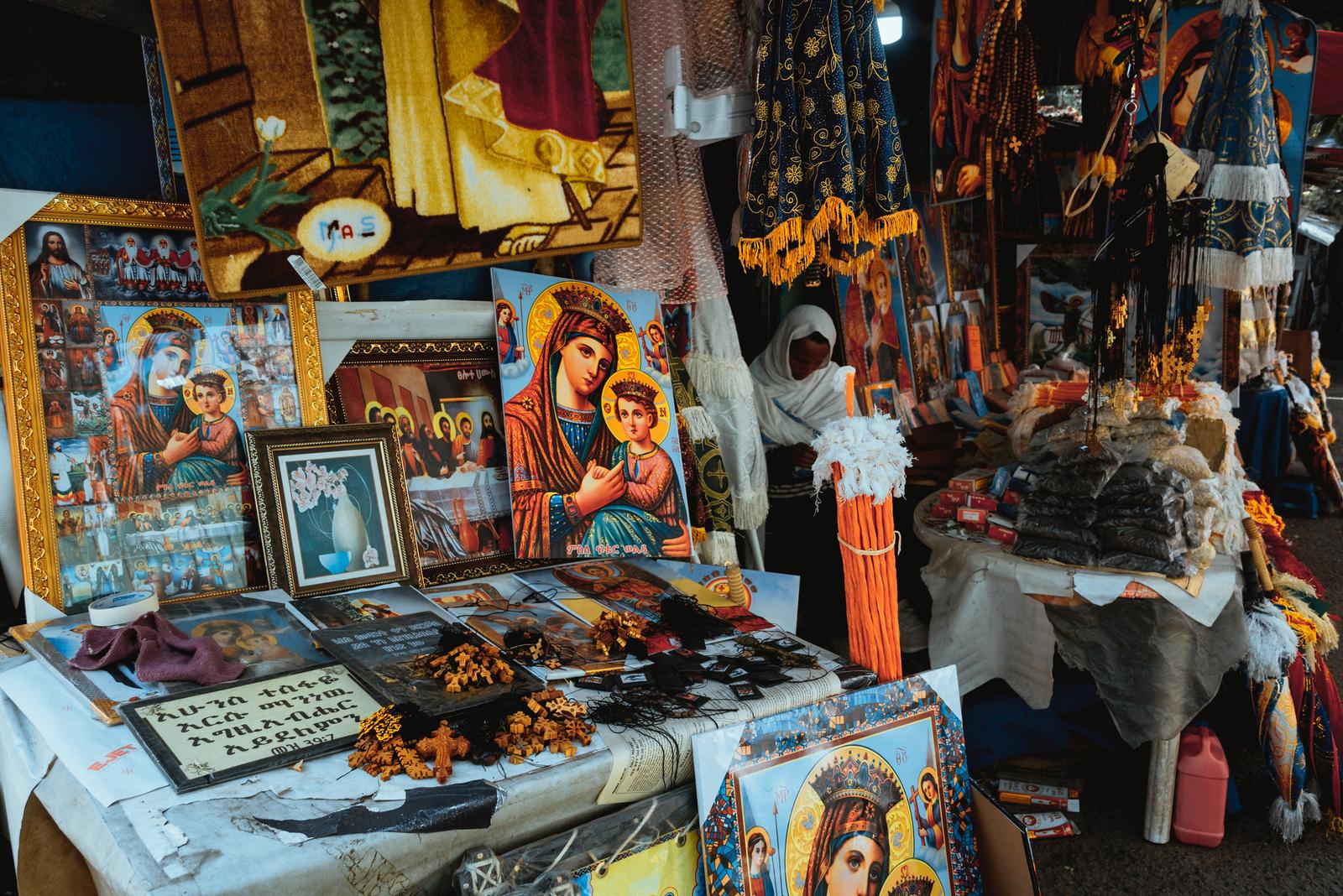
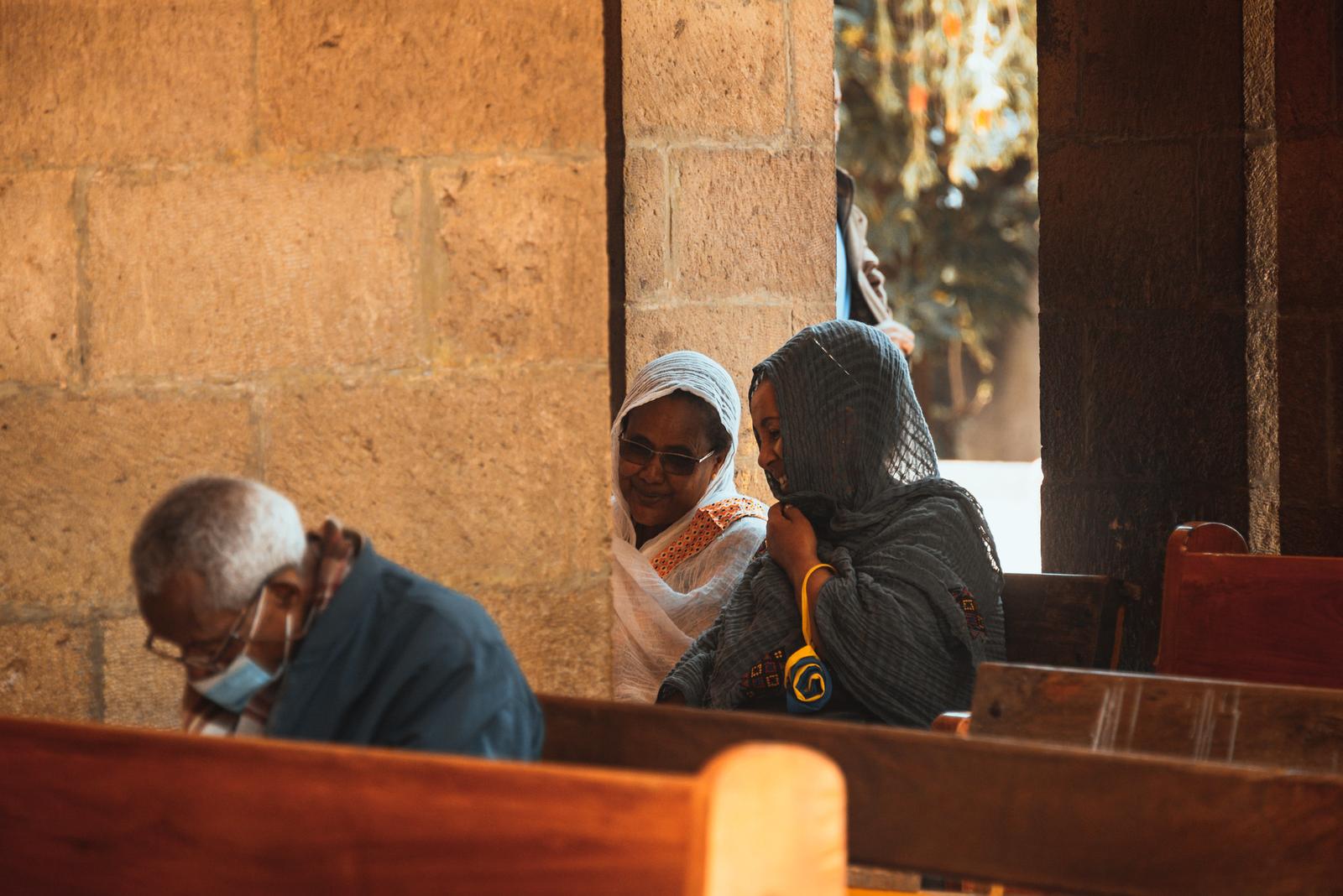
Beata Church
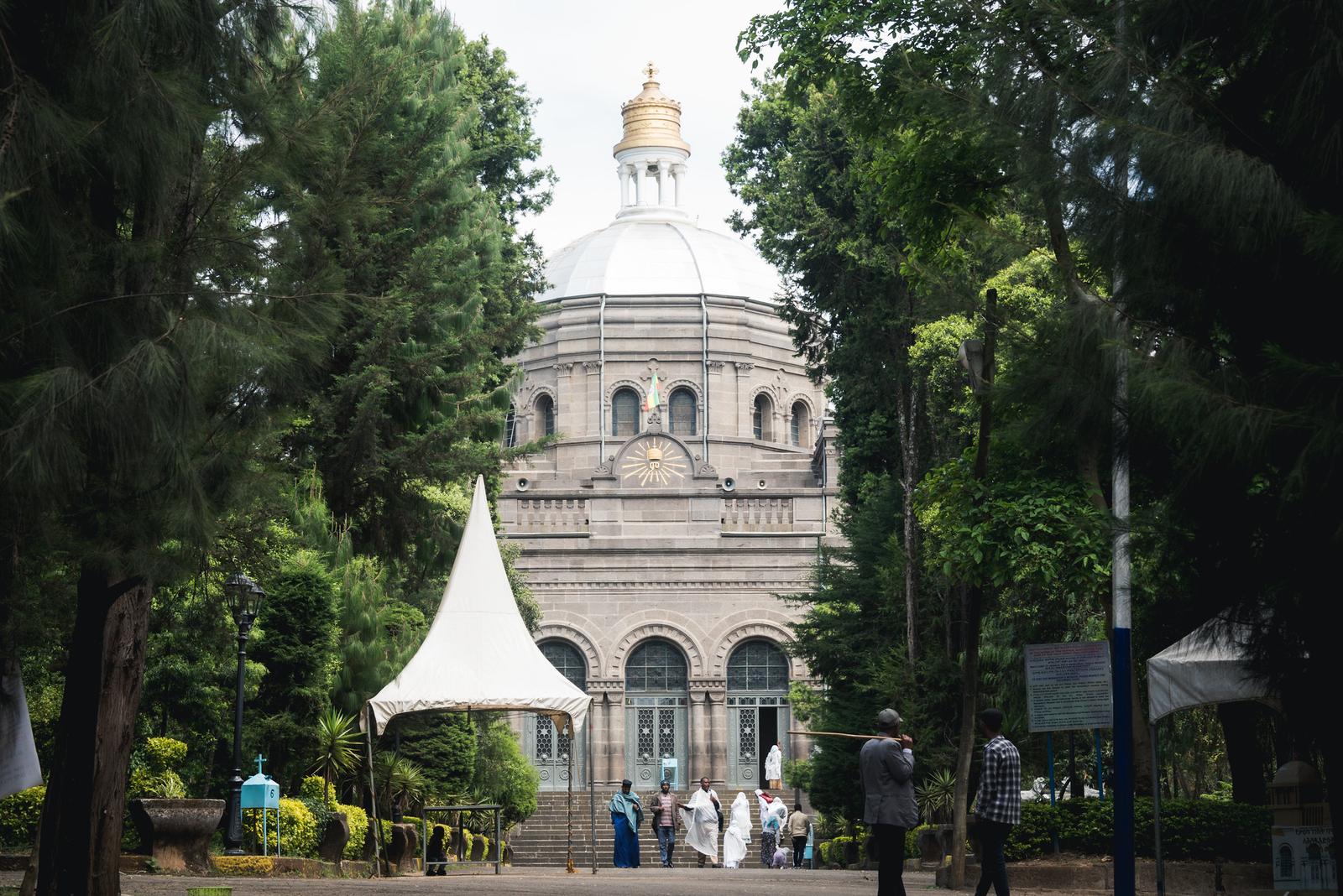
I was back on the street, walking uphill towards Beata Maryam Church (Ta’eka Negest Be’ata Lemariam). As the church is right next to the governmental buildings, you aren’t allowed to take photos of the premises along the entrance path, but only able to do that once getting inside the church.
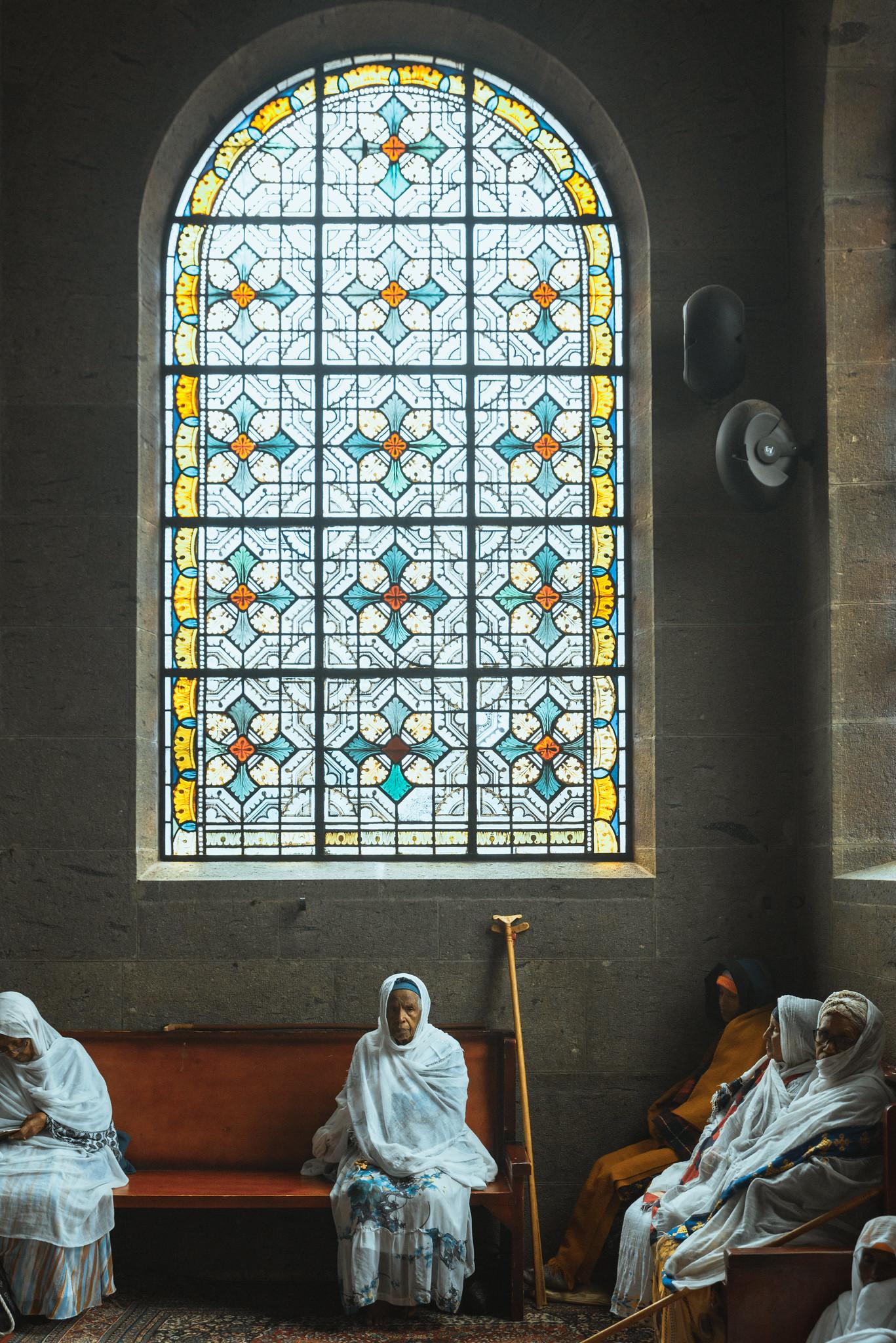
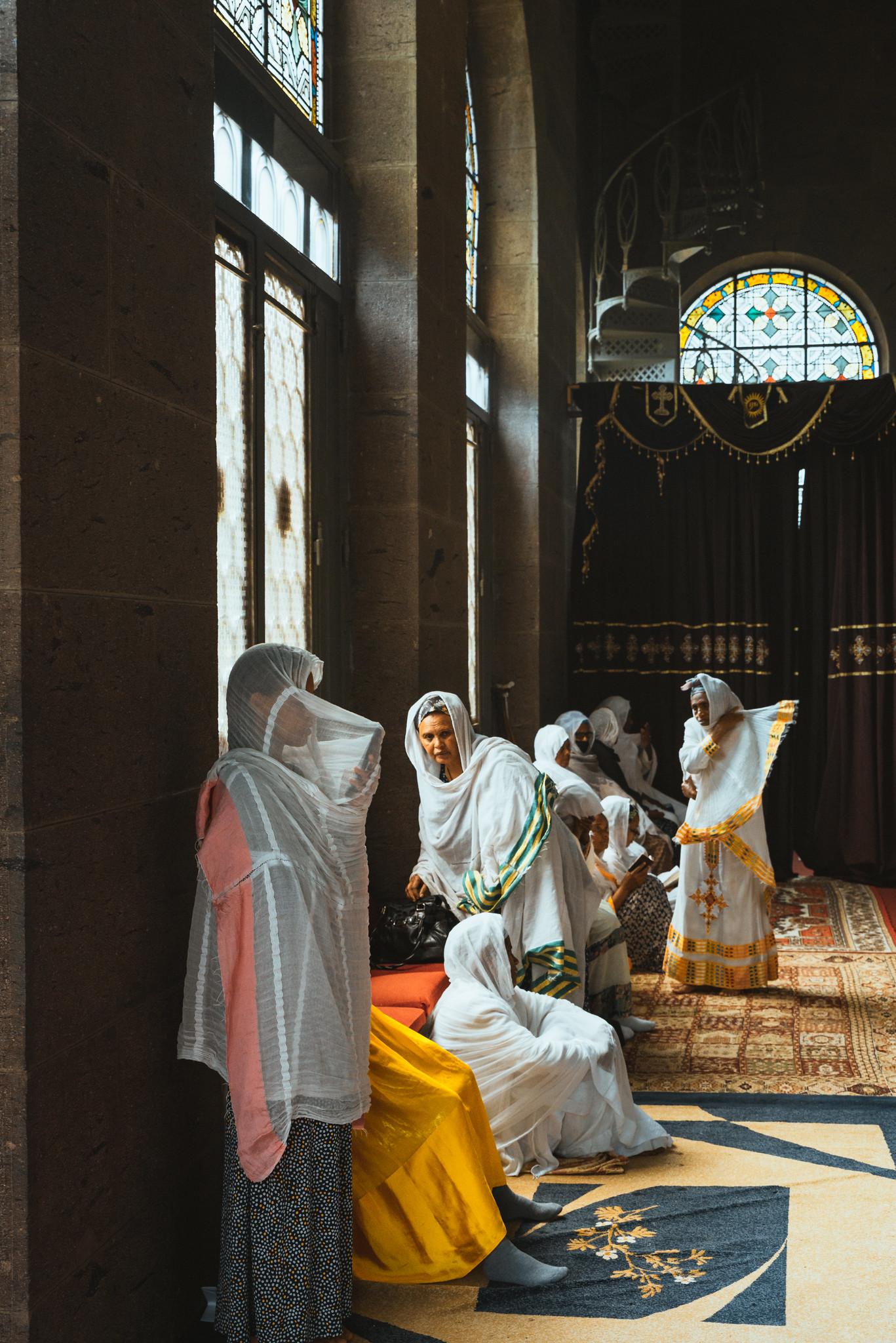
The ambience was uniquely solemn and mystical, with incense smoke perfusing the sanctuary, the murmuring of prayers, and the sounds coming from a traditional religious ceremony along the hallway.
Incense plays a significant role in Ethiopian Orthodox rituals, making churchgoers feel as if they are reaching to the heaven and the angels.
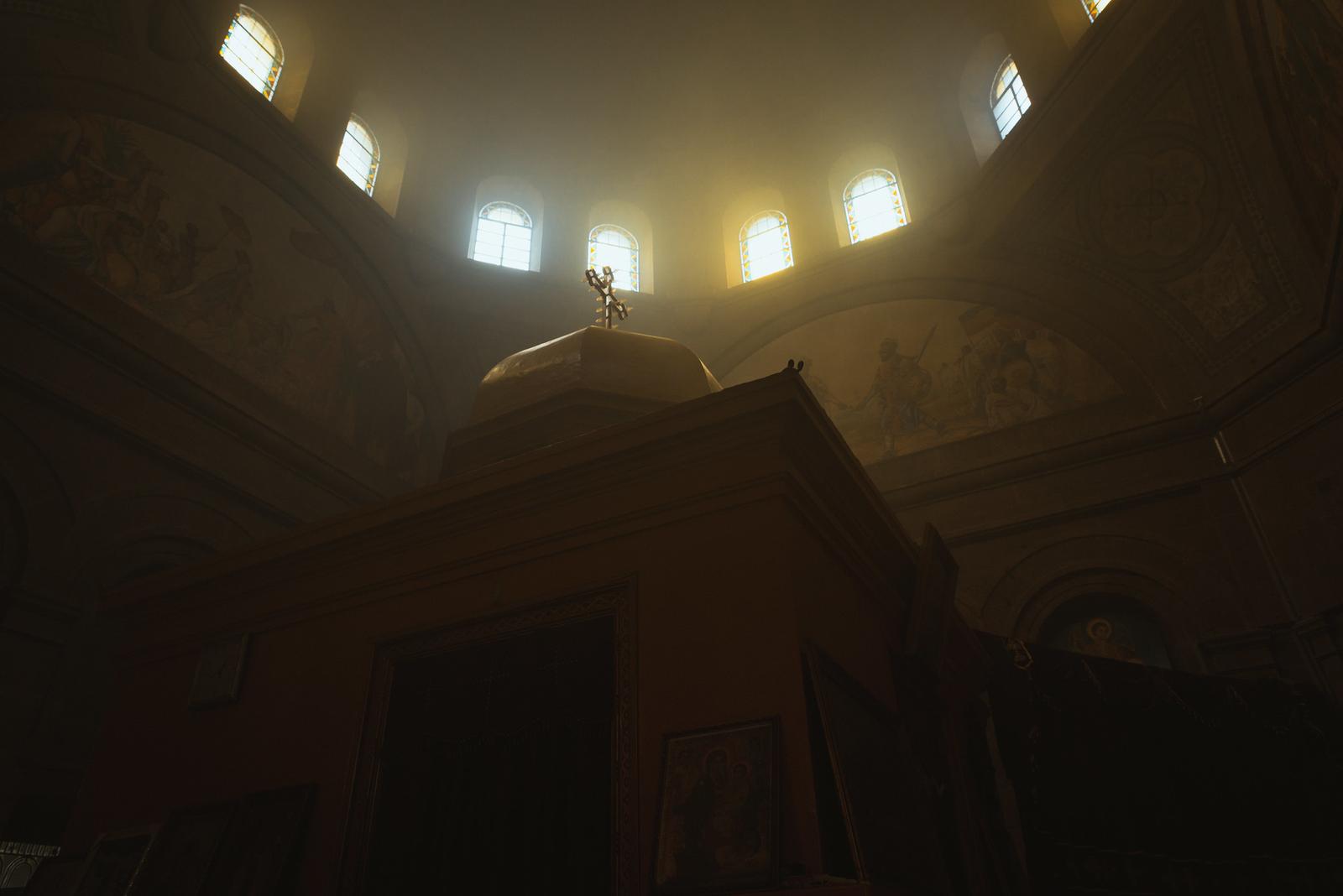
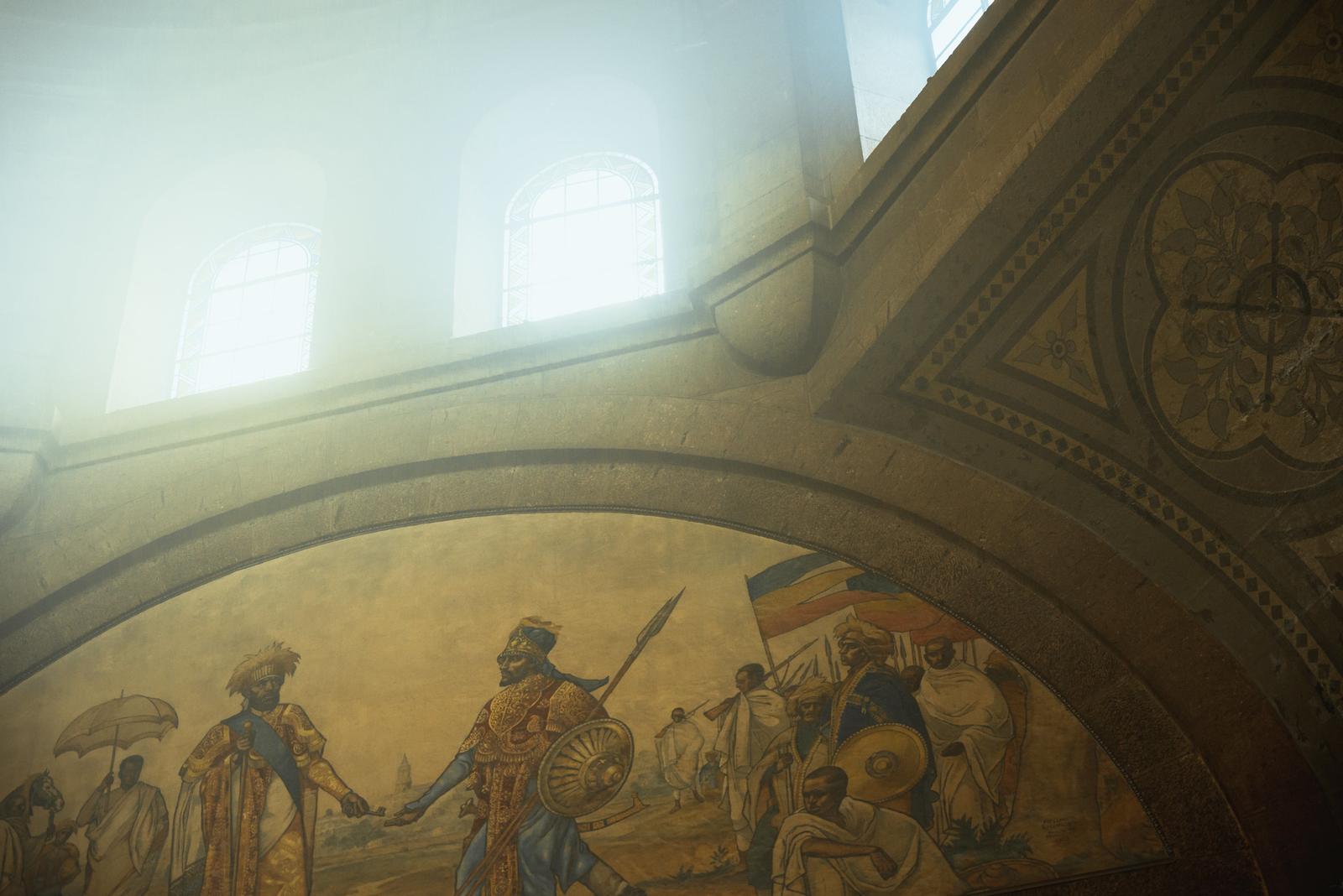
The underground chamber of Beata Church serves as the resting place for Emperor Menelik II and his consort Empress Taitu, as well as Empress Zewditu and Emperor Haile Selassie’s daughter, Tsehai Haile Selassie. If you have claustrophobia, it’s not a good idea to visit this crypt.
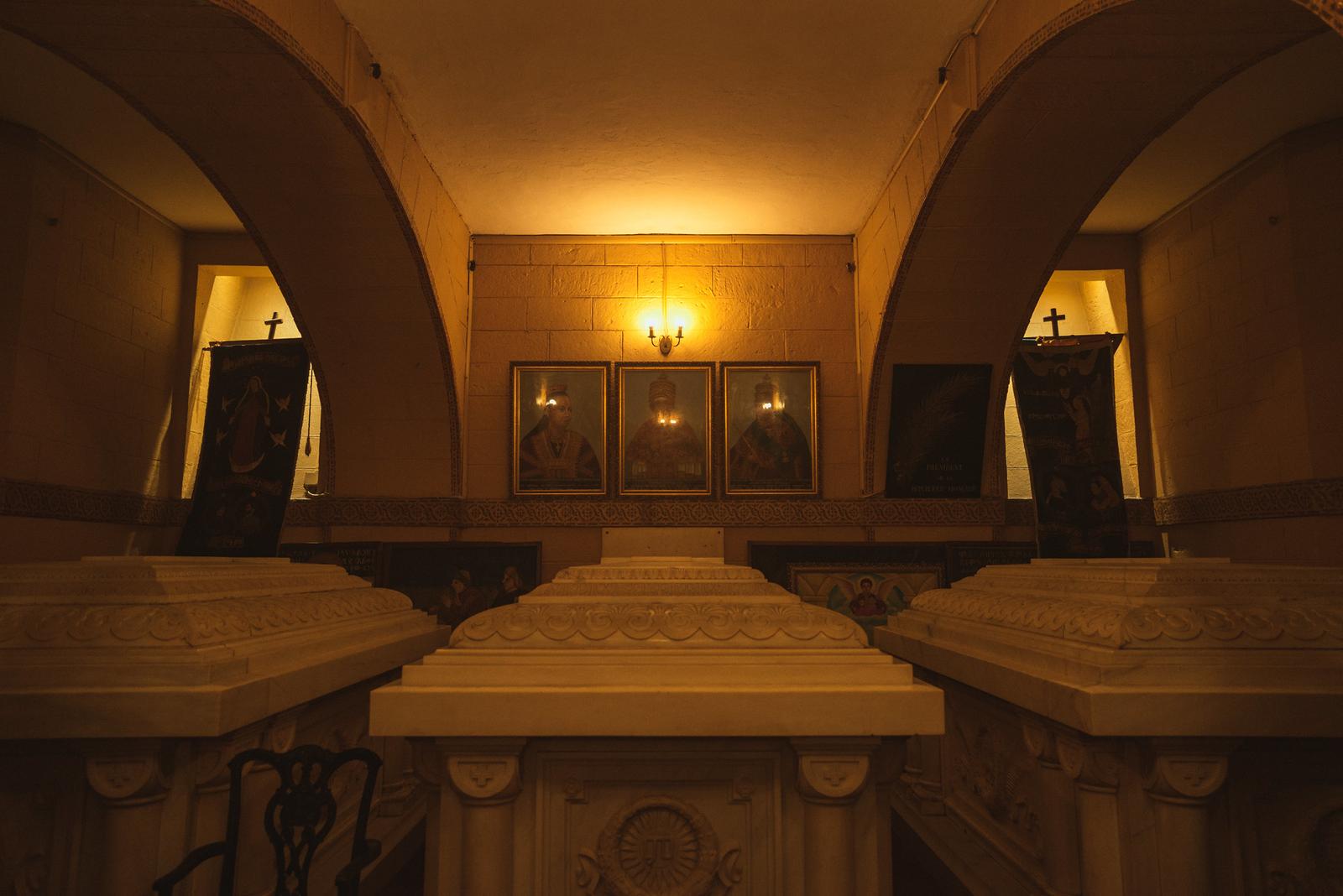
The man escorted me along the chamber’s aisles, then through the slender hallway where church officials were conducting a ceremony with prayers whispered in harmony, paired with the sound from the Ethiopian drum kebero (ከበሮ) and the tambourines, yet they weren’t distracted by me - the solitary Asian visitor.
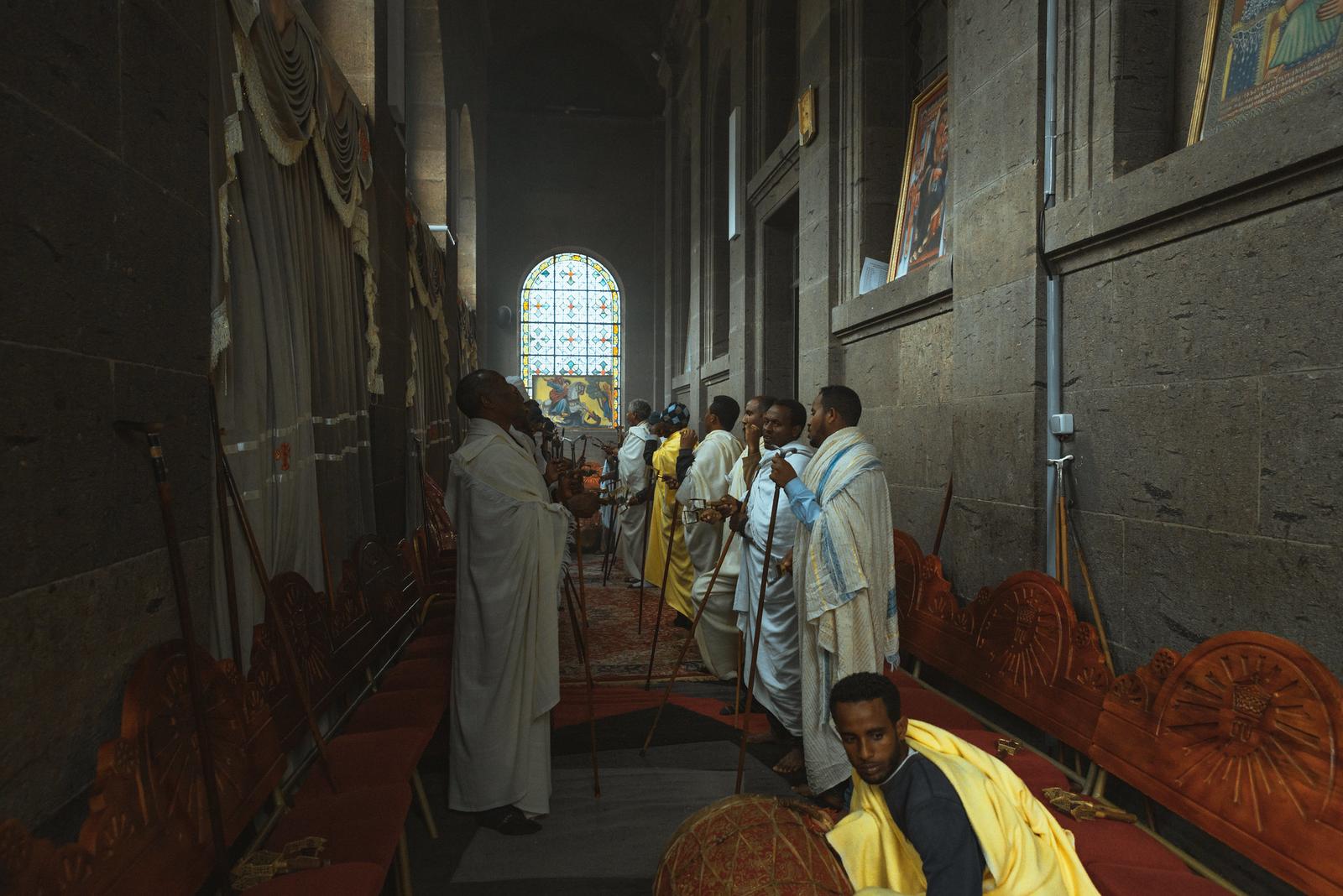
Holy Trinity Cathedral
The highest ranked of all Orthodox Tewahedo churches in Addis Ababa and the most famous one in this capital, Holy Trinity Cathedral (Kidist Selassie), was constructed in 1942 following Ethiopia’s victory over Fascist Italy. At the time I arrived, it was undergoing renovation.
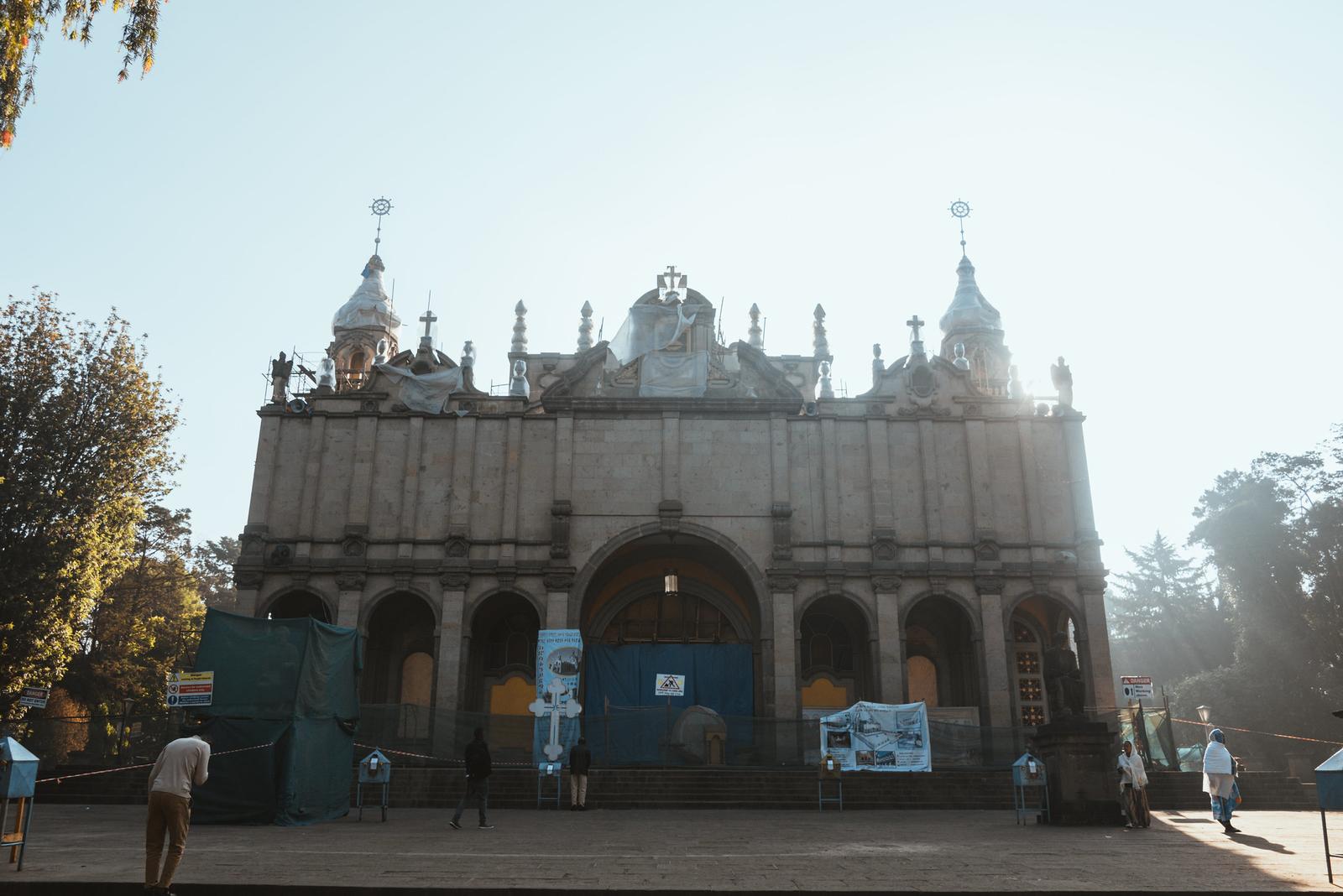
It was a pristine morning on my second day in Ethiopia, when the students were going to school. Walking alone without being disturbed was the most wonderful feeling to a solo traveler. I took a Ride cab to the place but the driver didn’t know the direction, so he dropped me in an alley behind cathedral, near a military post. Should you meet a soldier, remember to smile and answer honestly that you’re visiting the church for travel intention only, and they’ll be happy to show you the road without troubles.
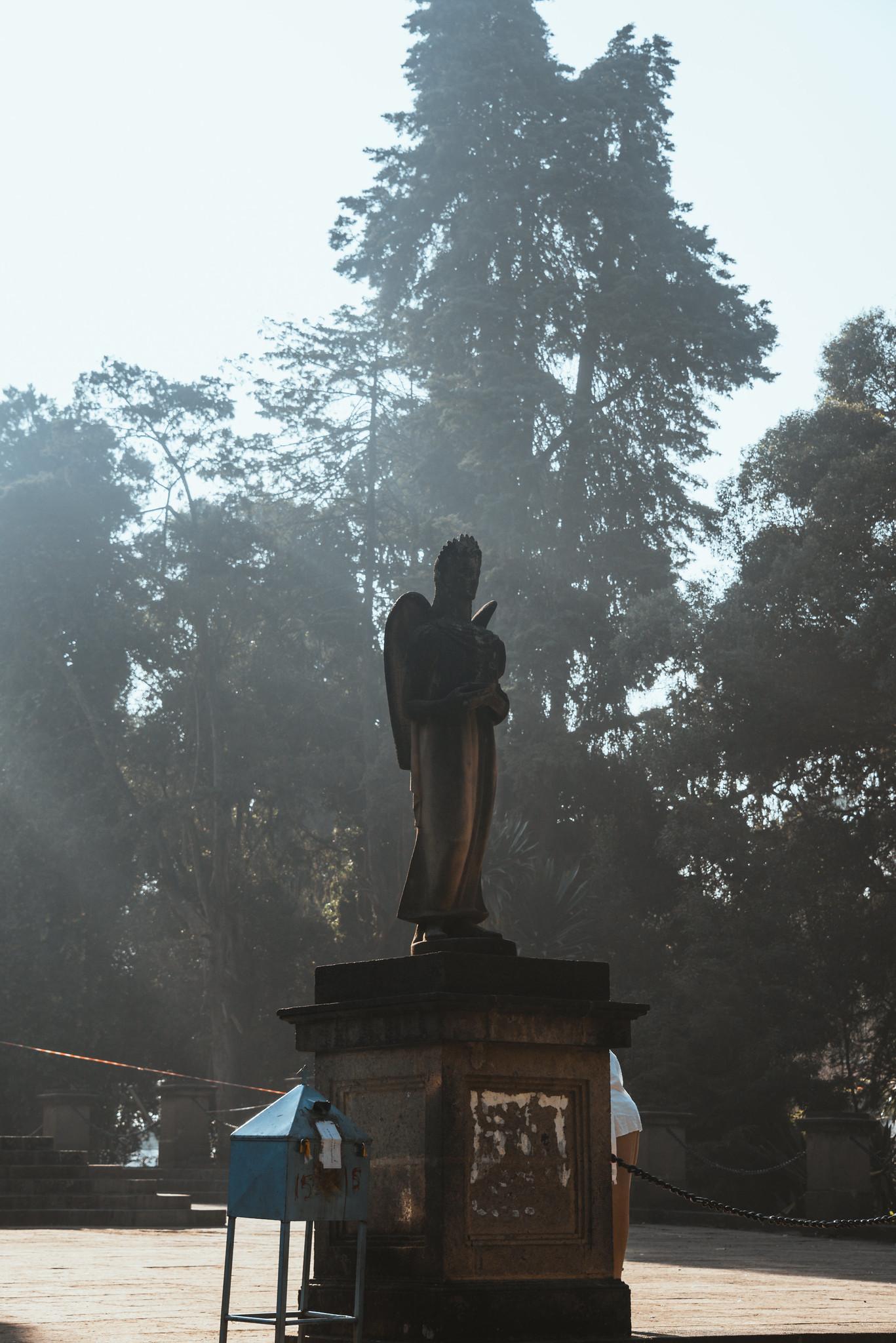
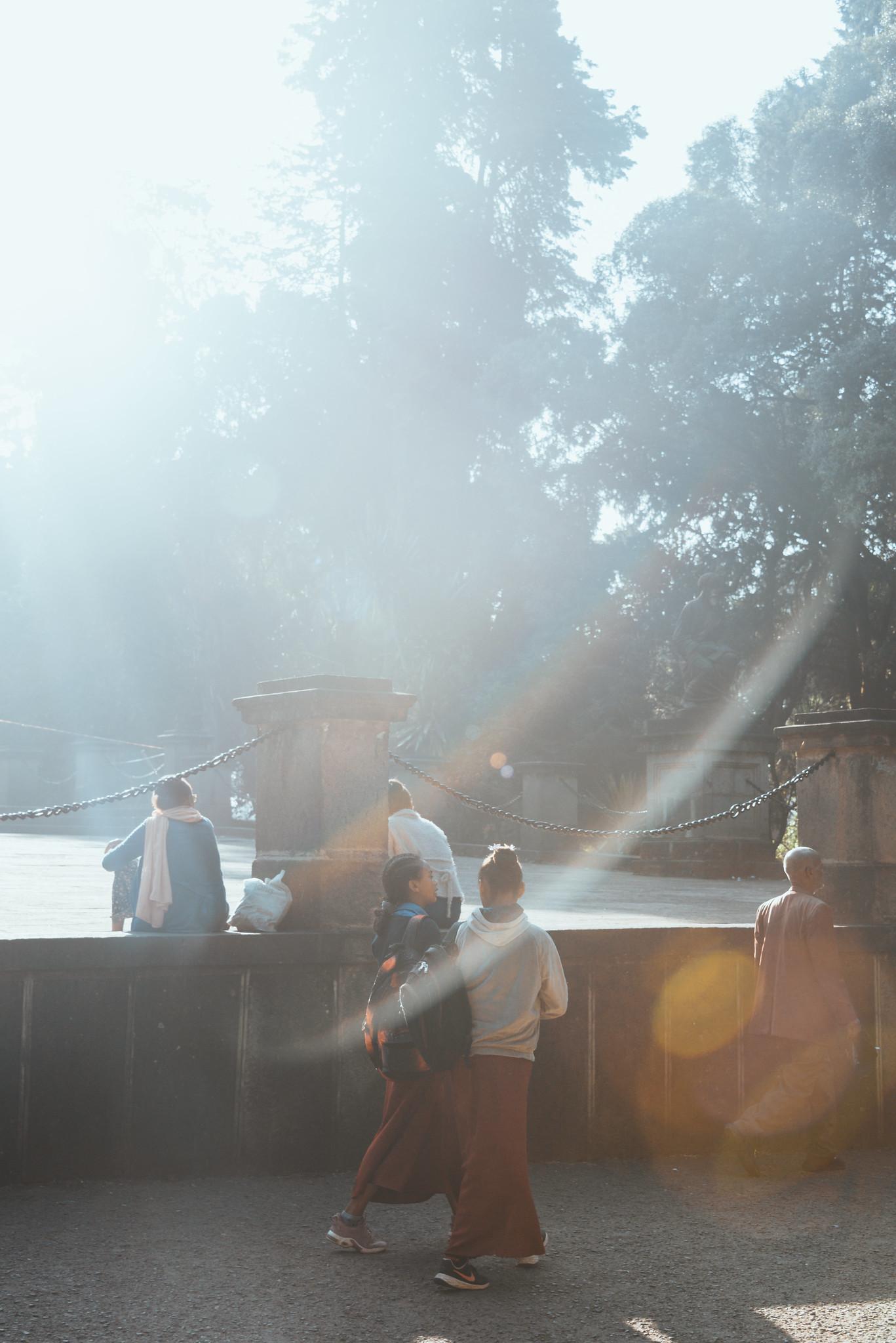
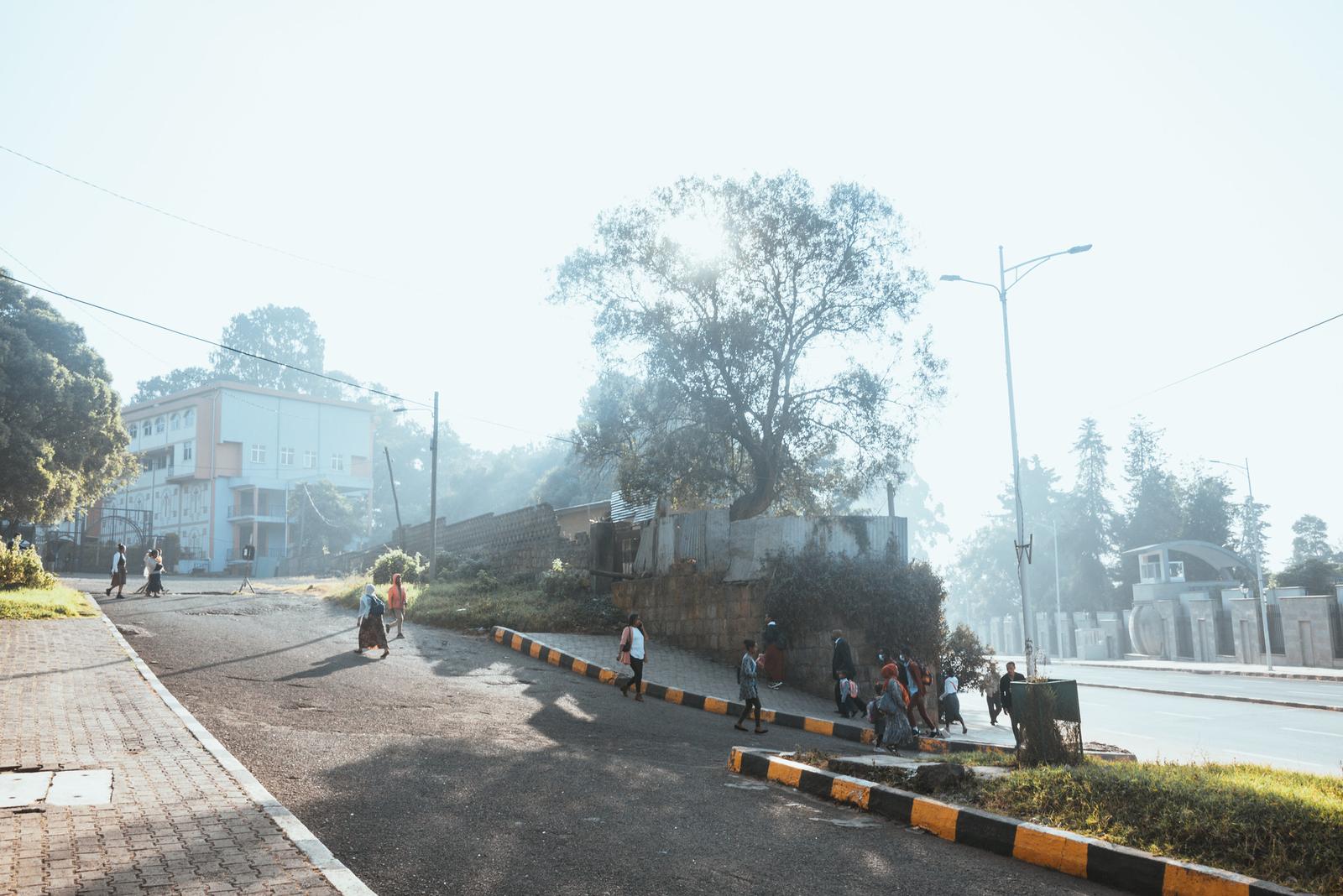
And that’s when I could harvest lots of one-of-a-kind moments; but take my advice: you need to resist taking photos blatantly. The road leading to the cathedral’s main gate, as it’s near the governmental buildings, is the place photography is prohibited, and the locals will promptly inform you of that.
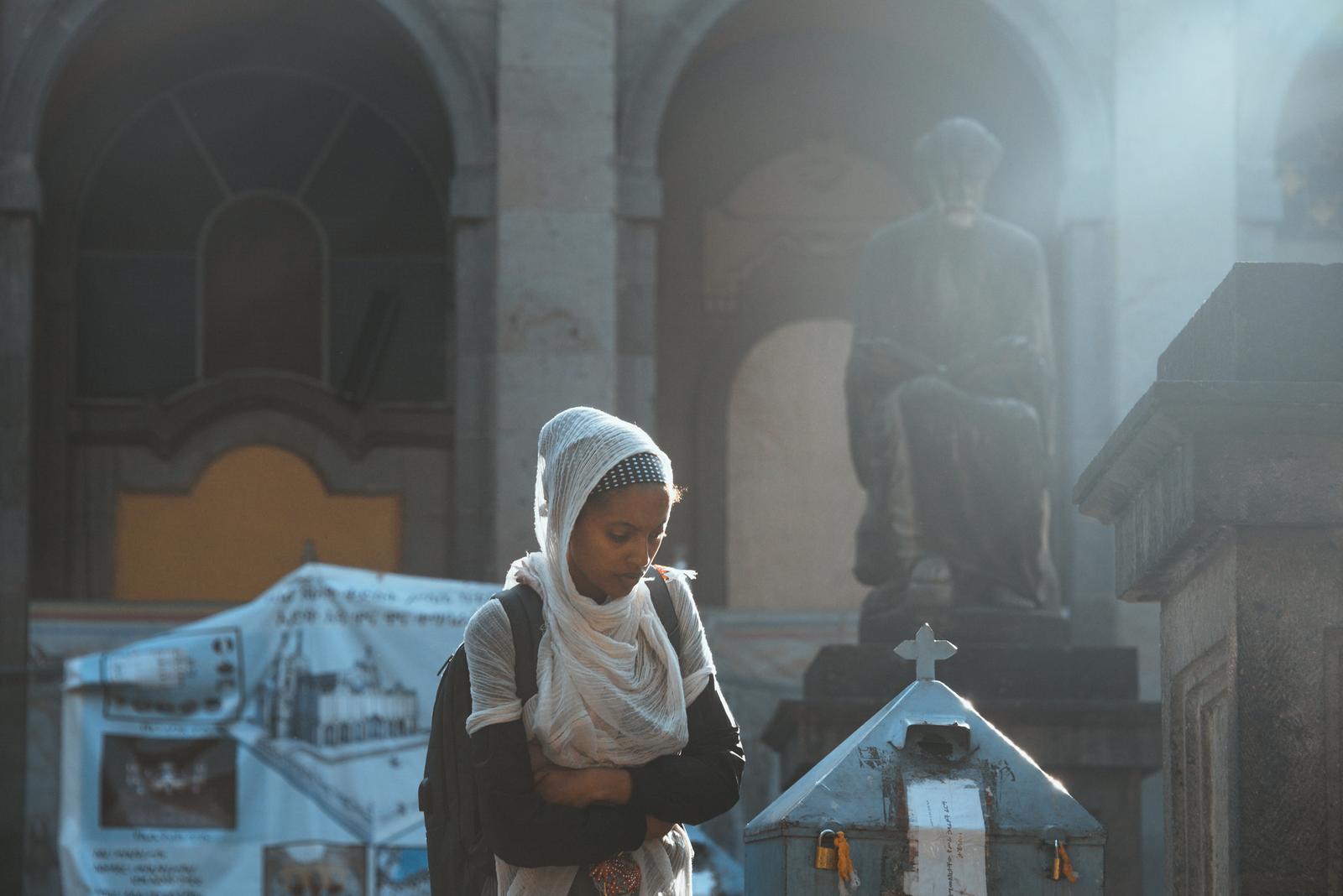
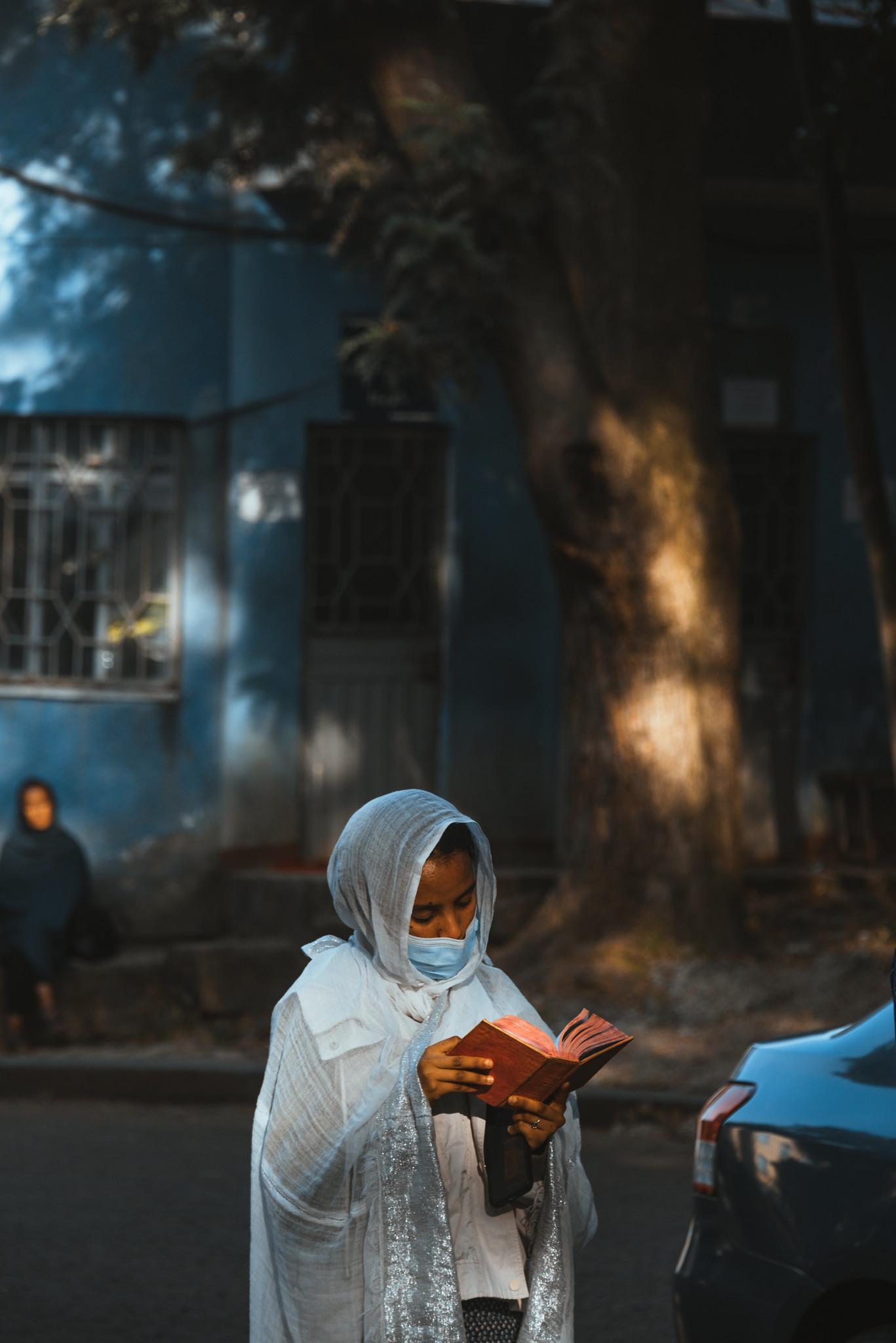
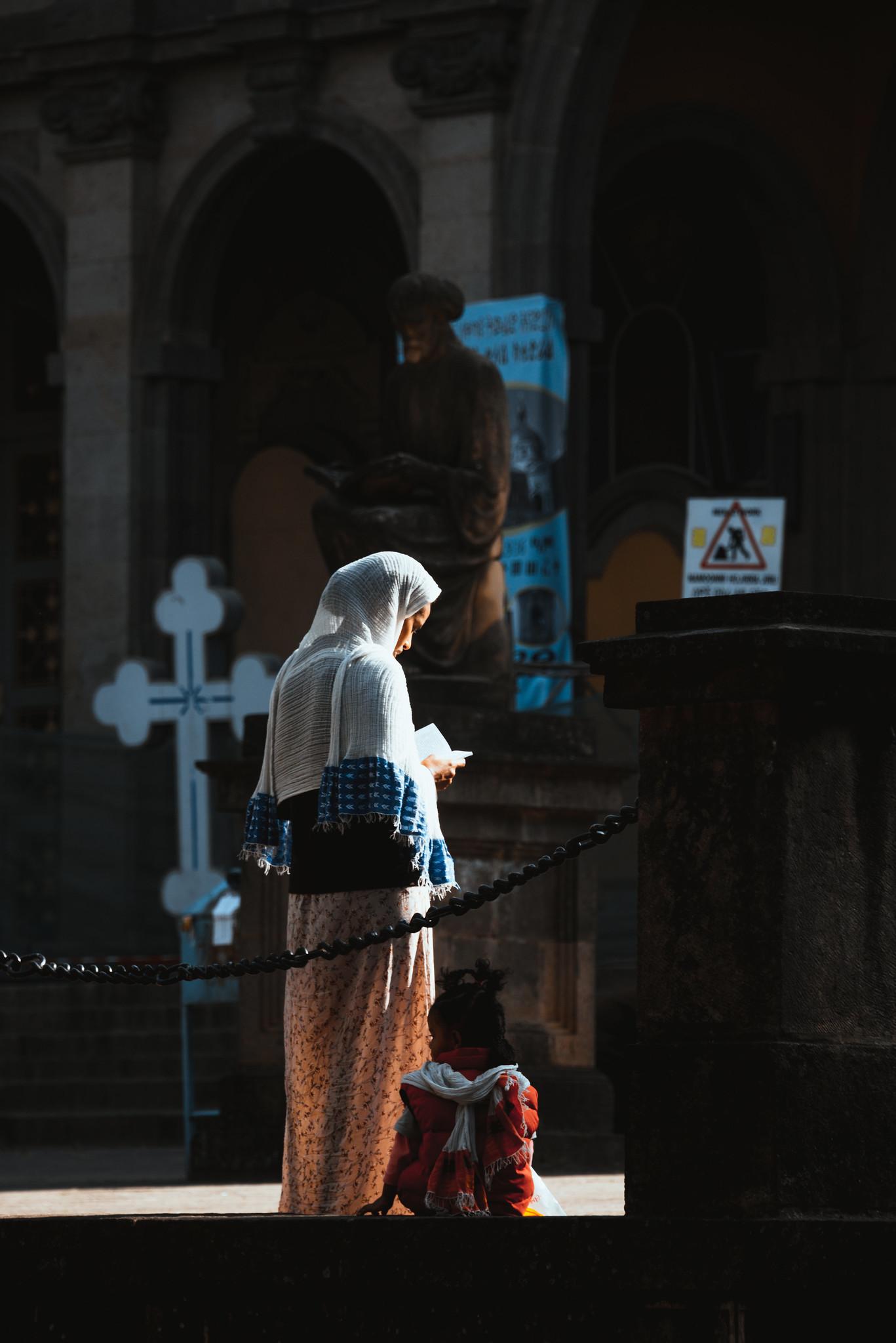
We might possess greater material wealth, but such heathen like myself could hardly conceive of their spiritual wealthiness.
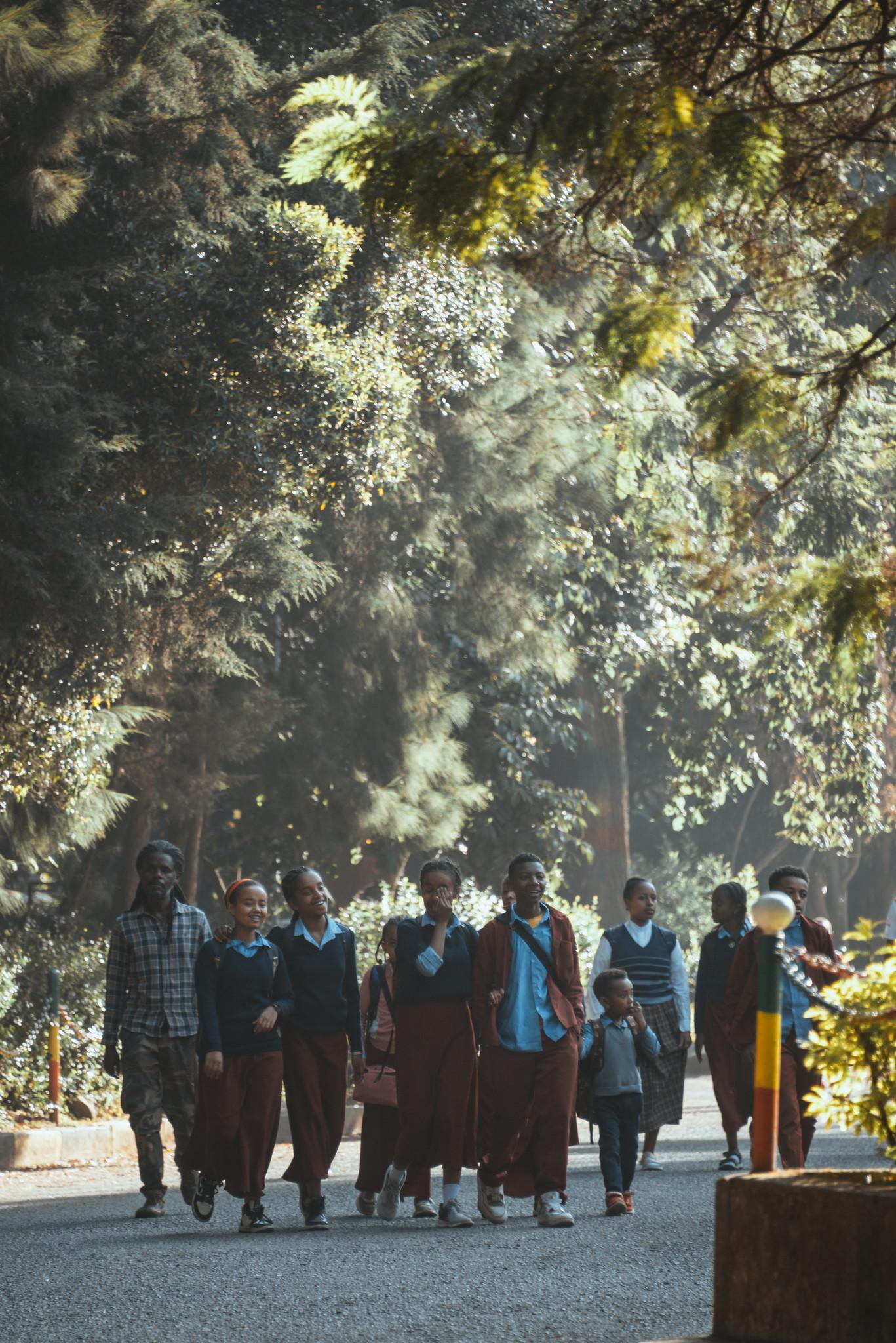
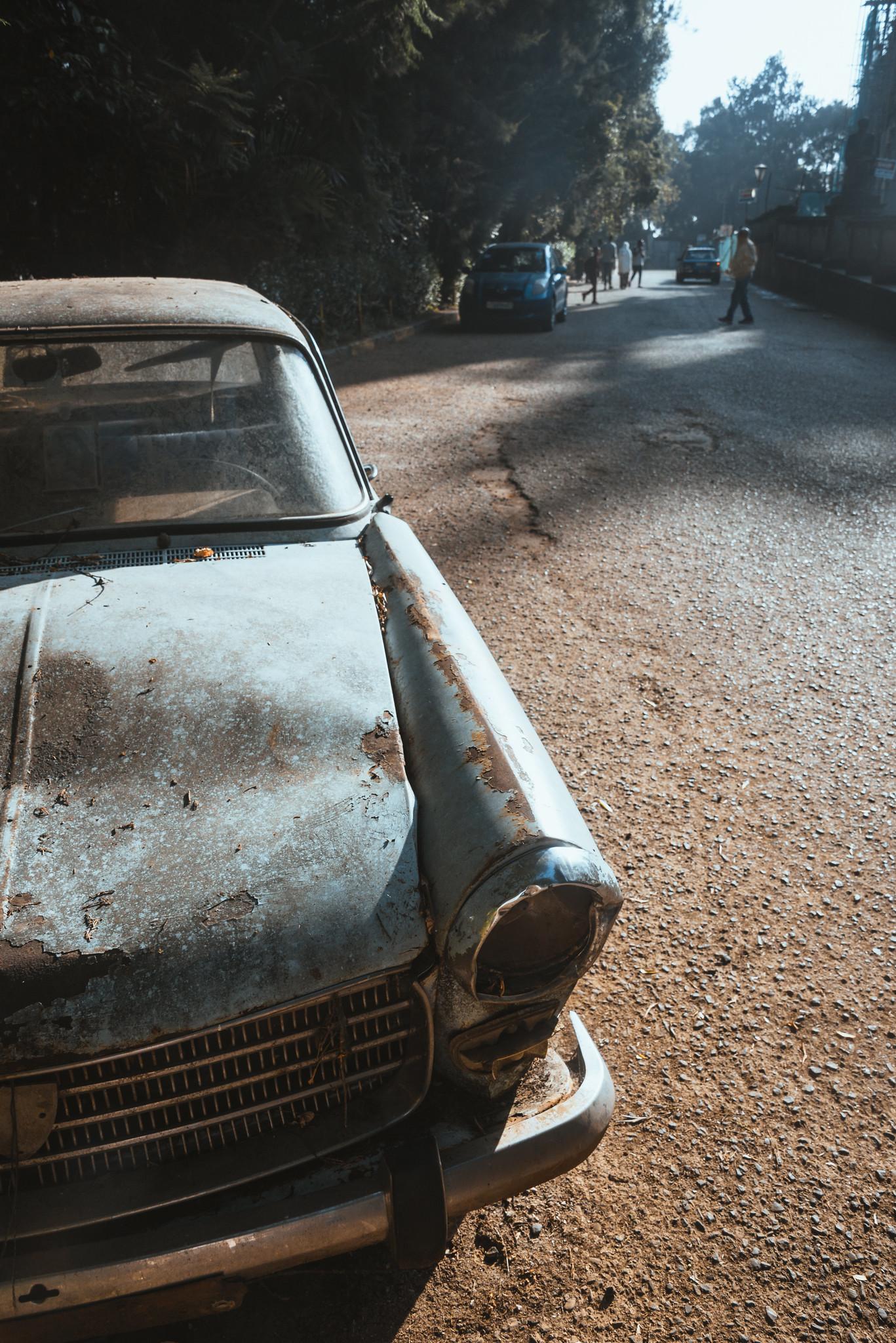
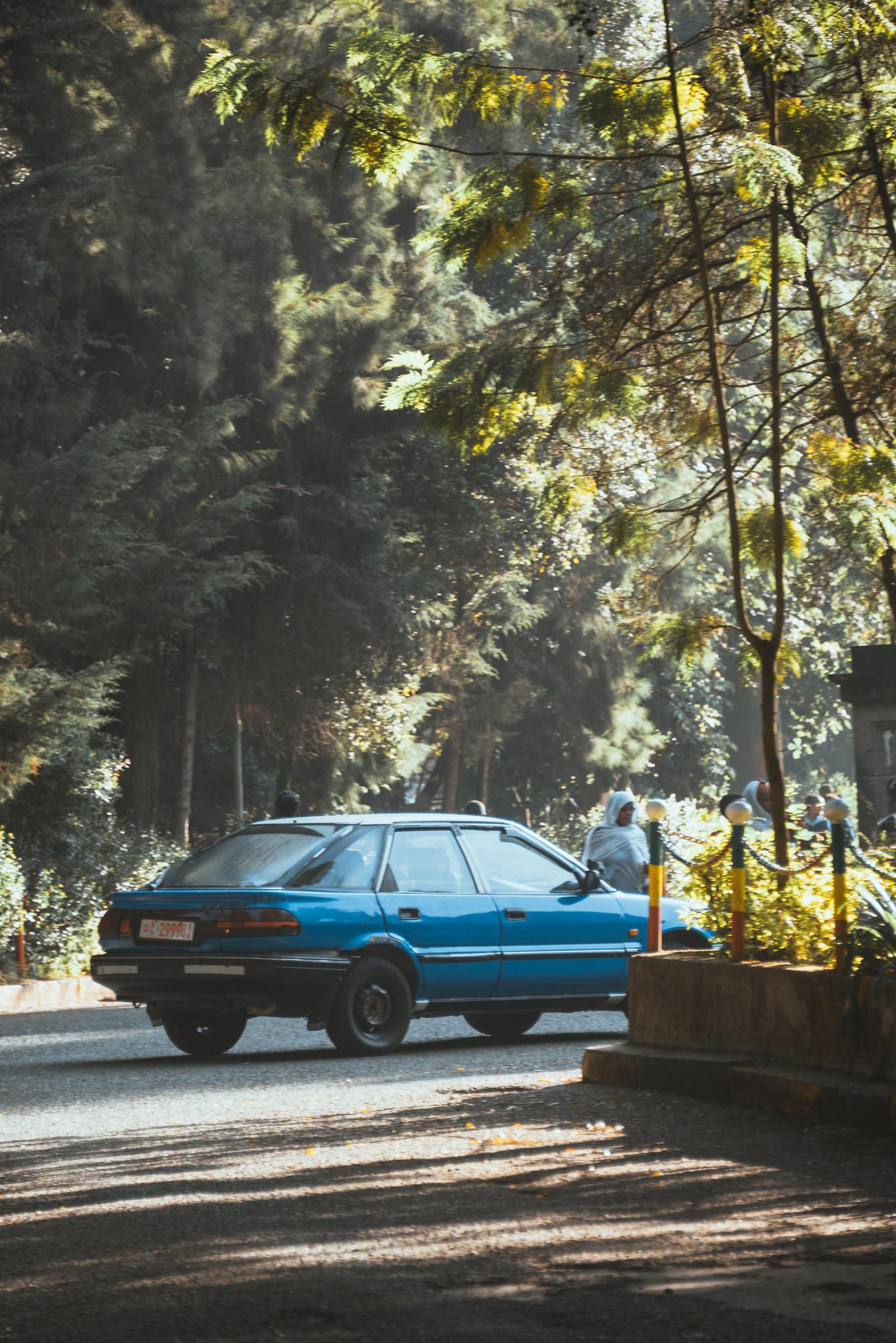
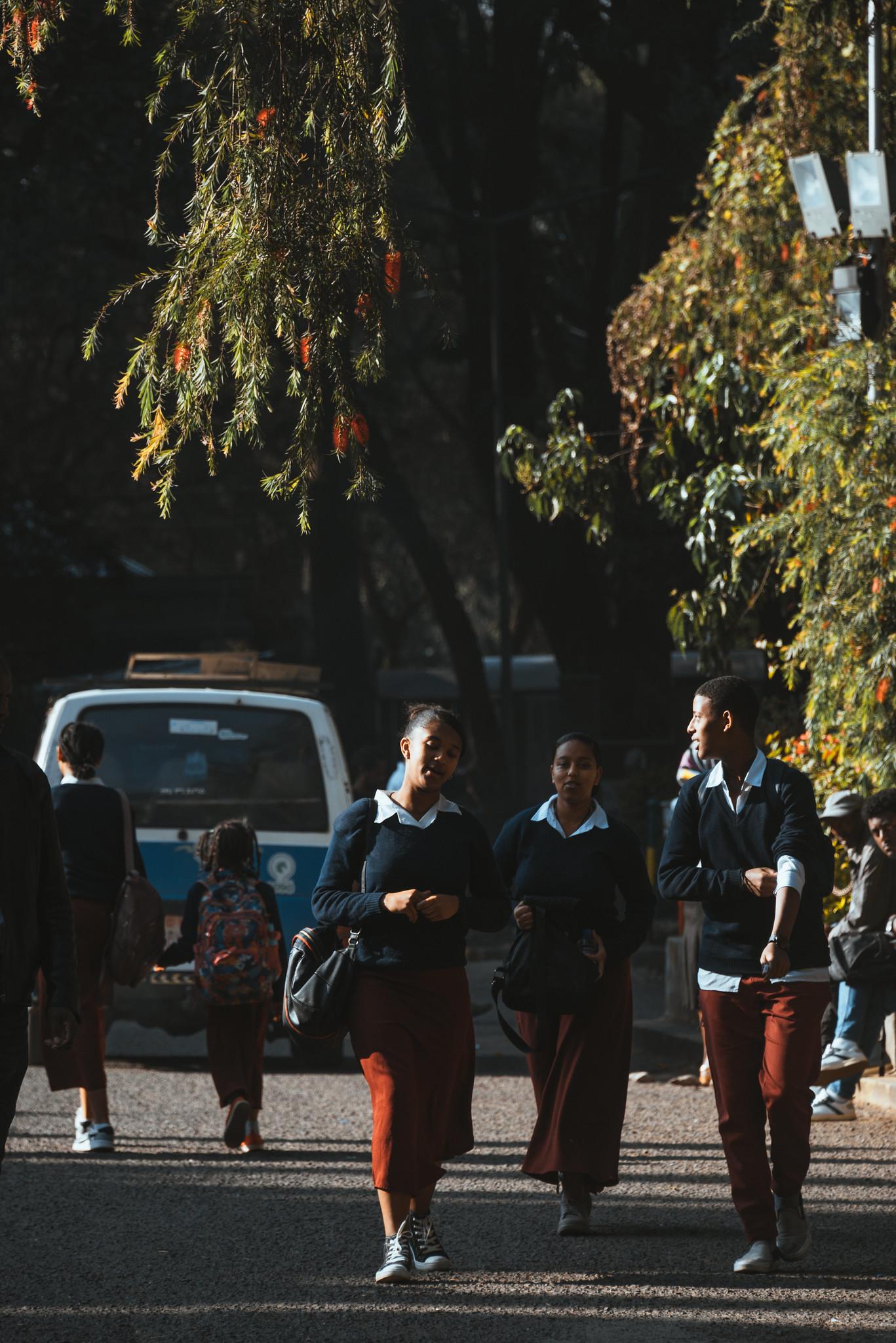
There’re three types of church building in Ethiopia, the first features contemporary style with boxy concrete walls as you have seen, the second is the rock-hewn church as found in Lalibela, and the third one is the colorful octagon-shaped church. Once exiting Holy Trinity Cathedral by the rear way, I came across an octagonal church named Holy Beale Wold. Amidst the jacaranda blooming season, enveloped by the canopies was this church where devotees stood praying by the walls.
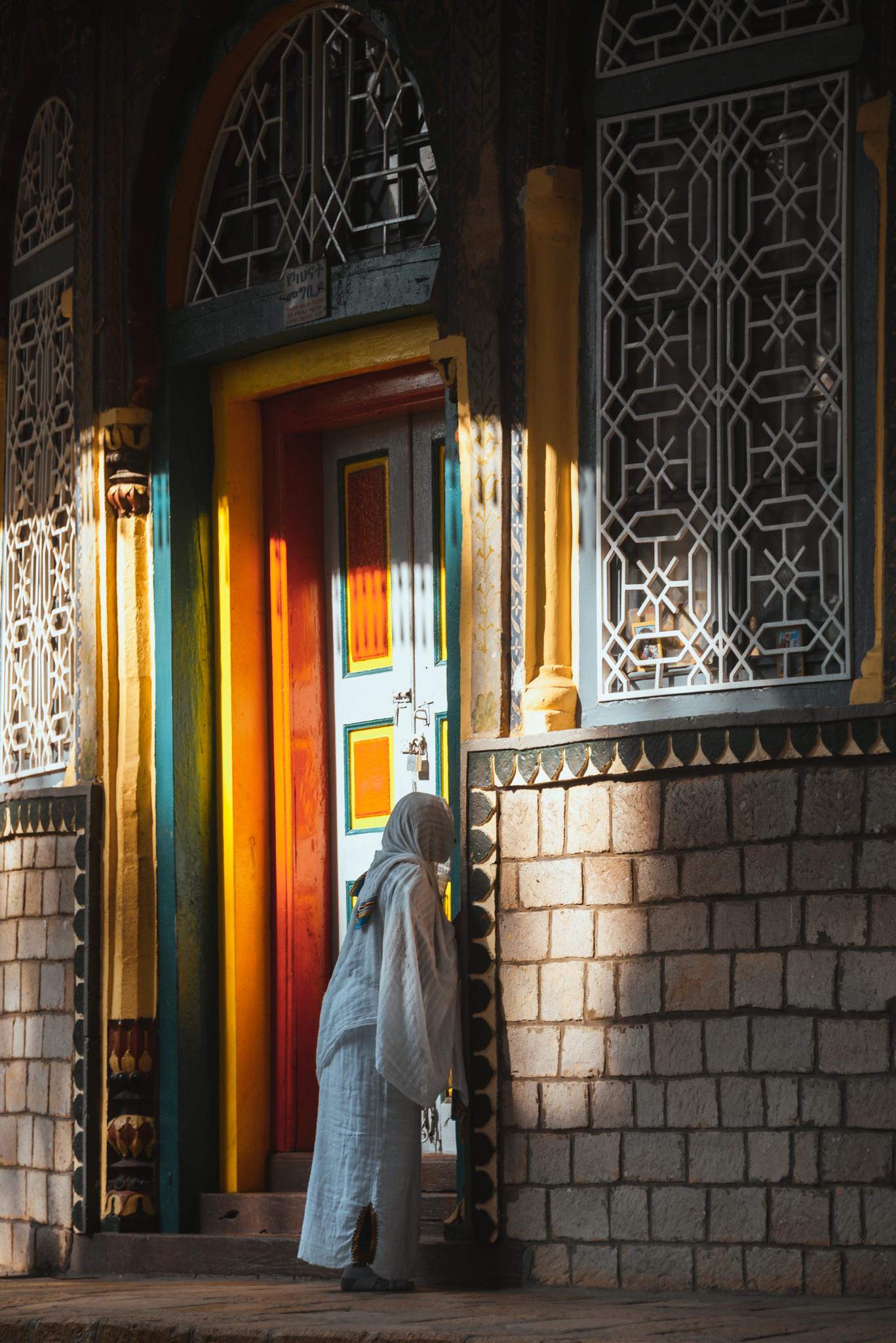
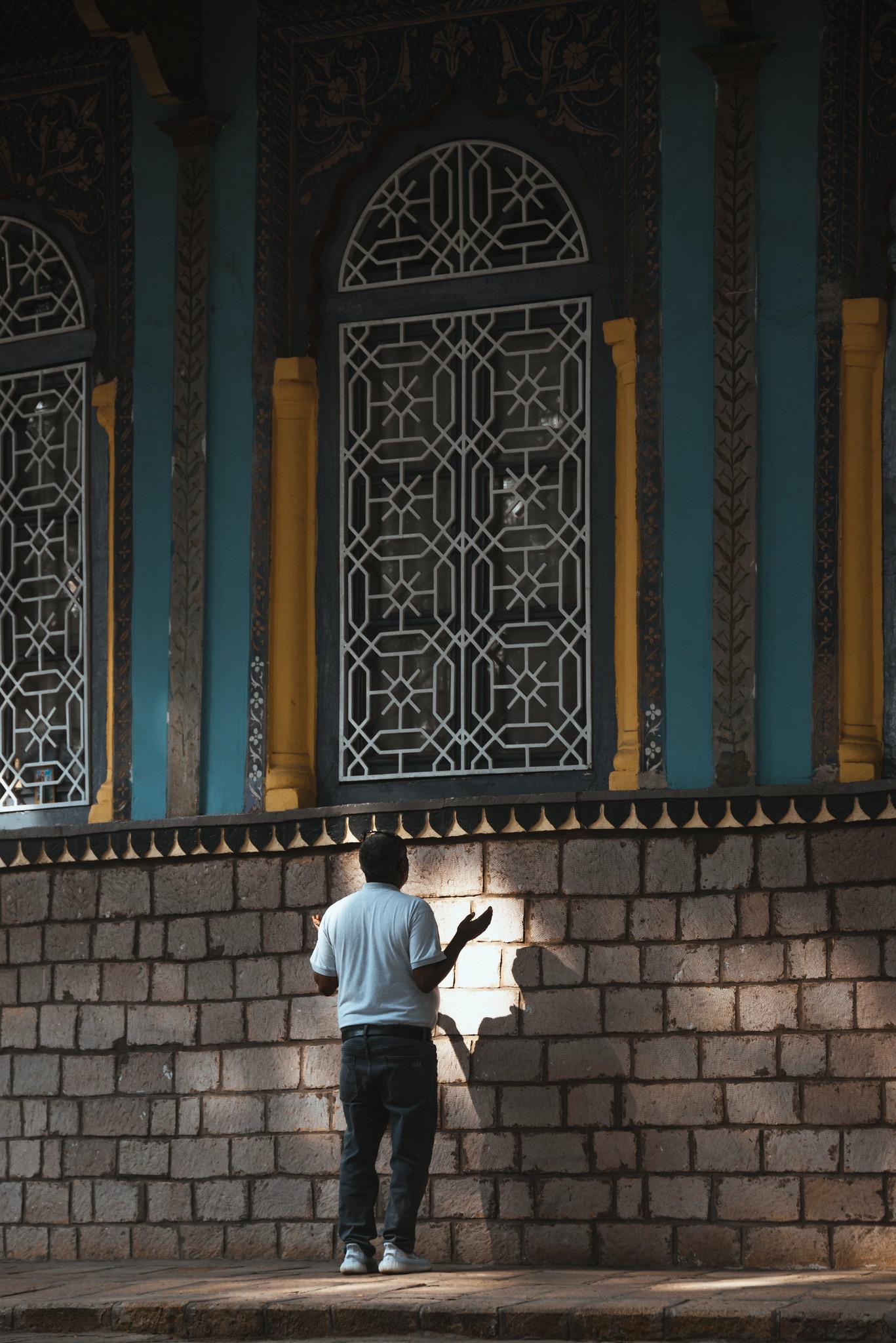
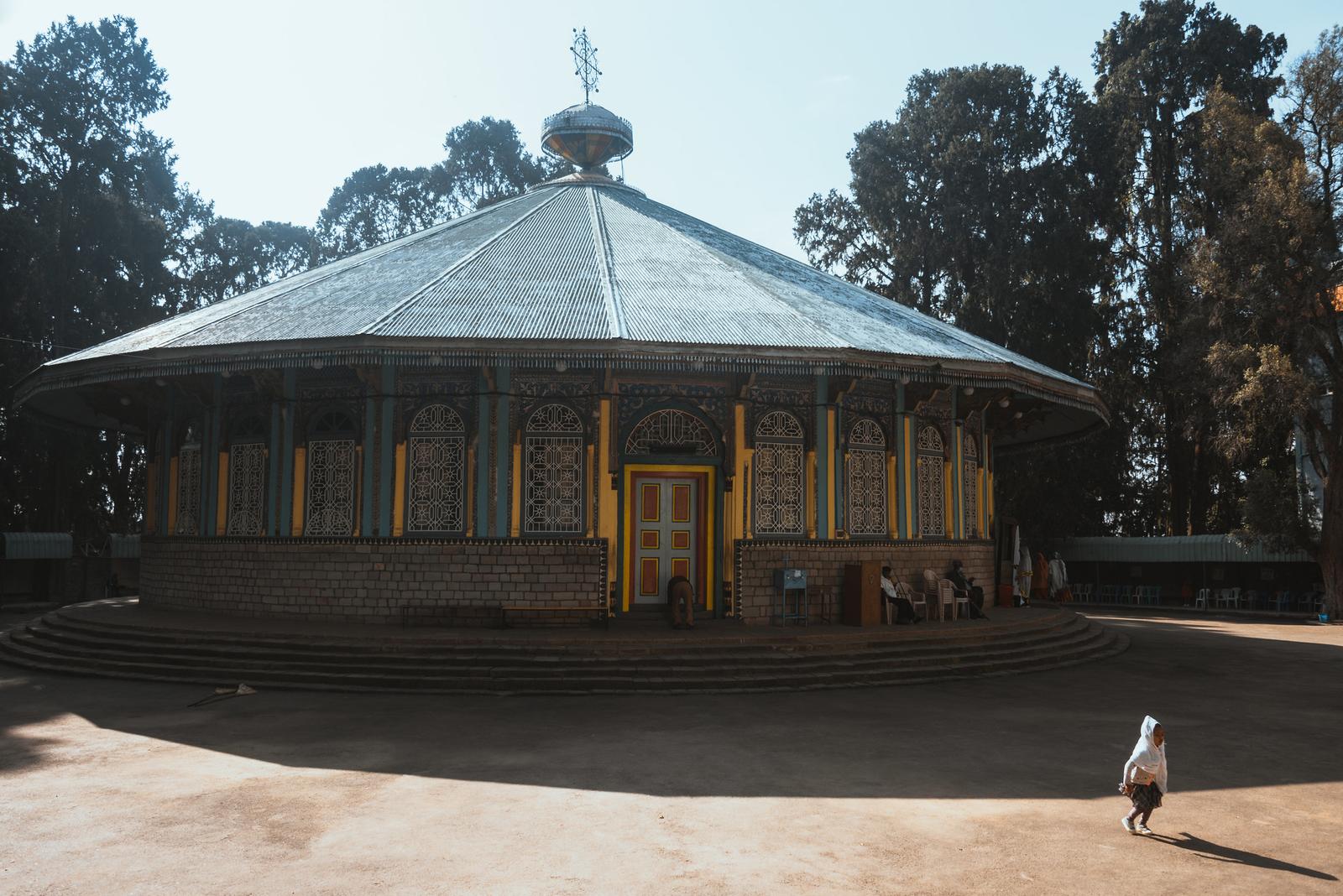
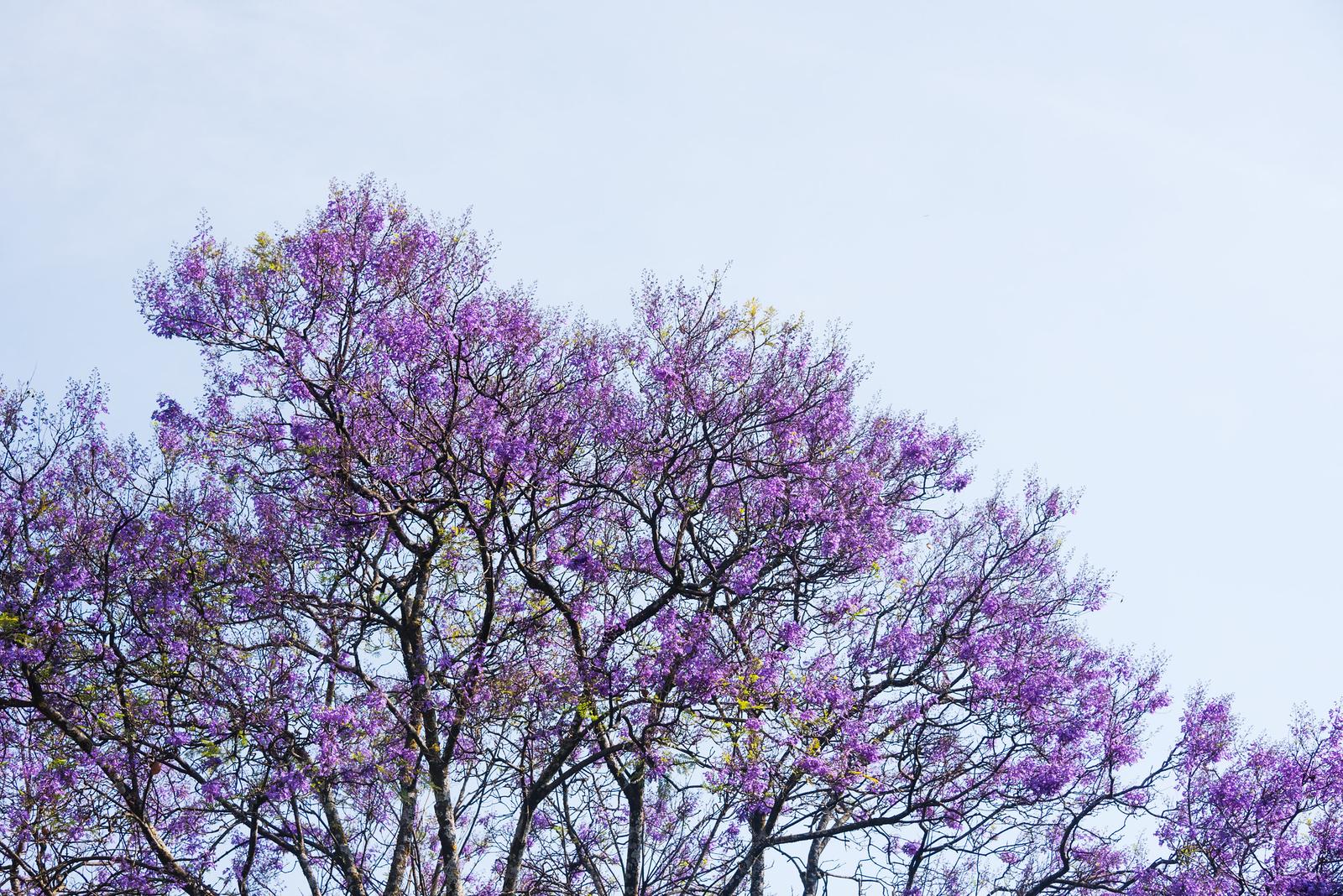
Addis Ababa City Life
Having left Beata Church, I savored my first typical Ethiopian lunch featuring injera (እንጀራ), a sourdough flatbread made from teff (ጤፍ), eaten with colorful and flavorful portions of vegetables and meats. Injera has a sour-ish taste and the side dishes are richly spiced (like Indian food), so it’s recommended to pair the meal with some drinks. Ethiopian cuisines use onion rather generously, and the spice mixture berbere (በርበሬ) is the key ingredient of flavor.
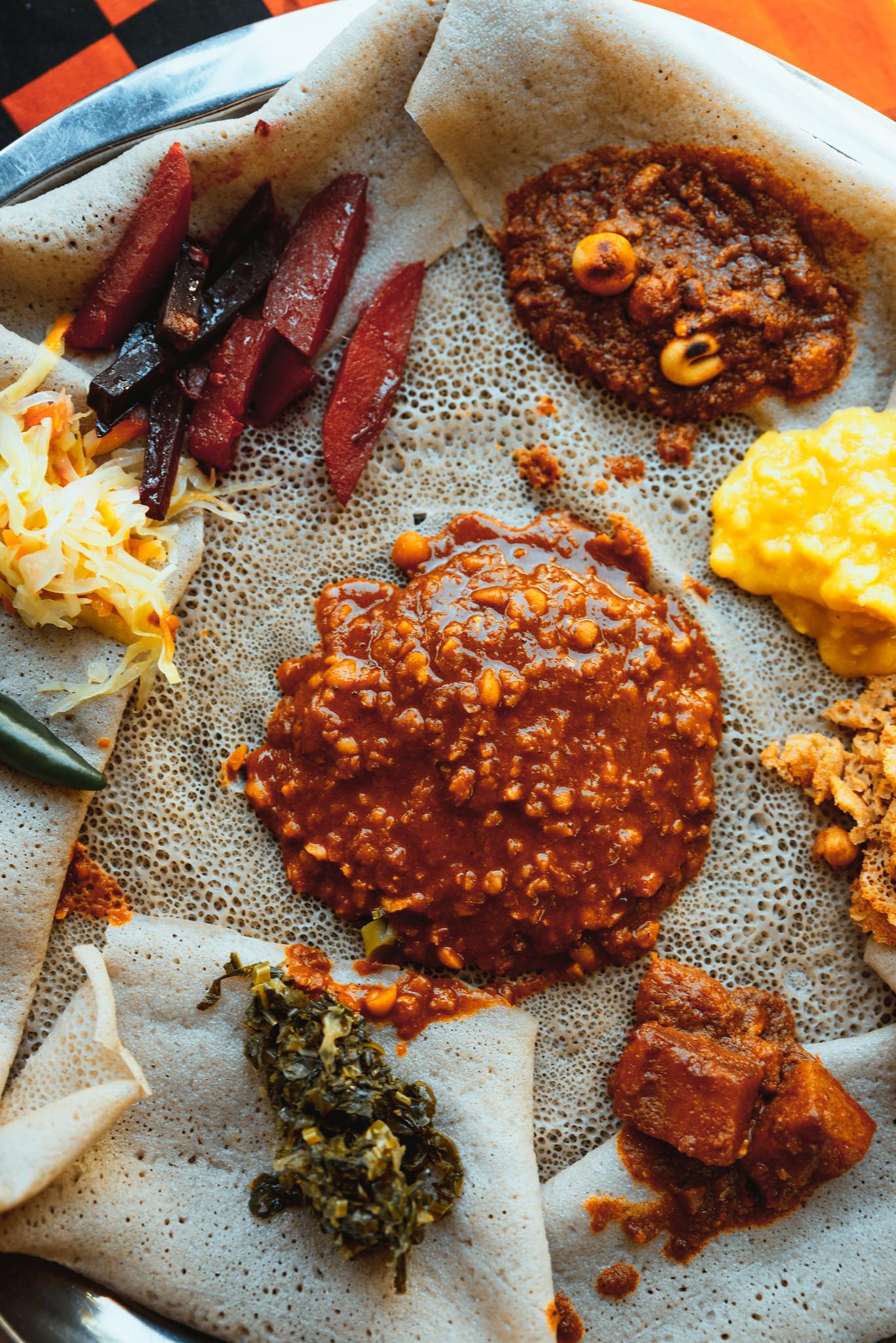
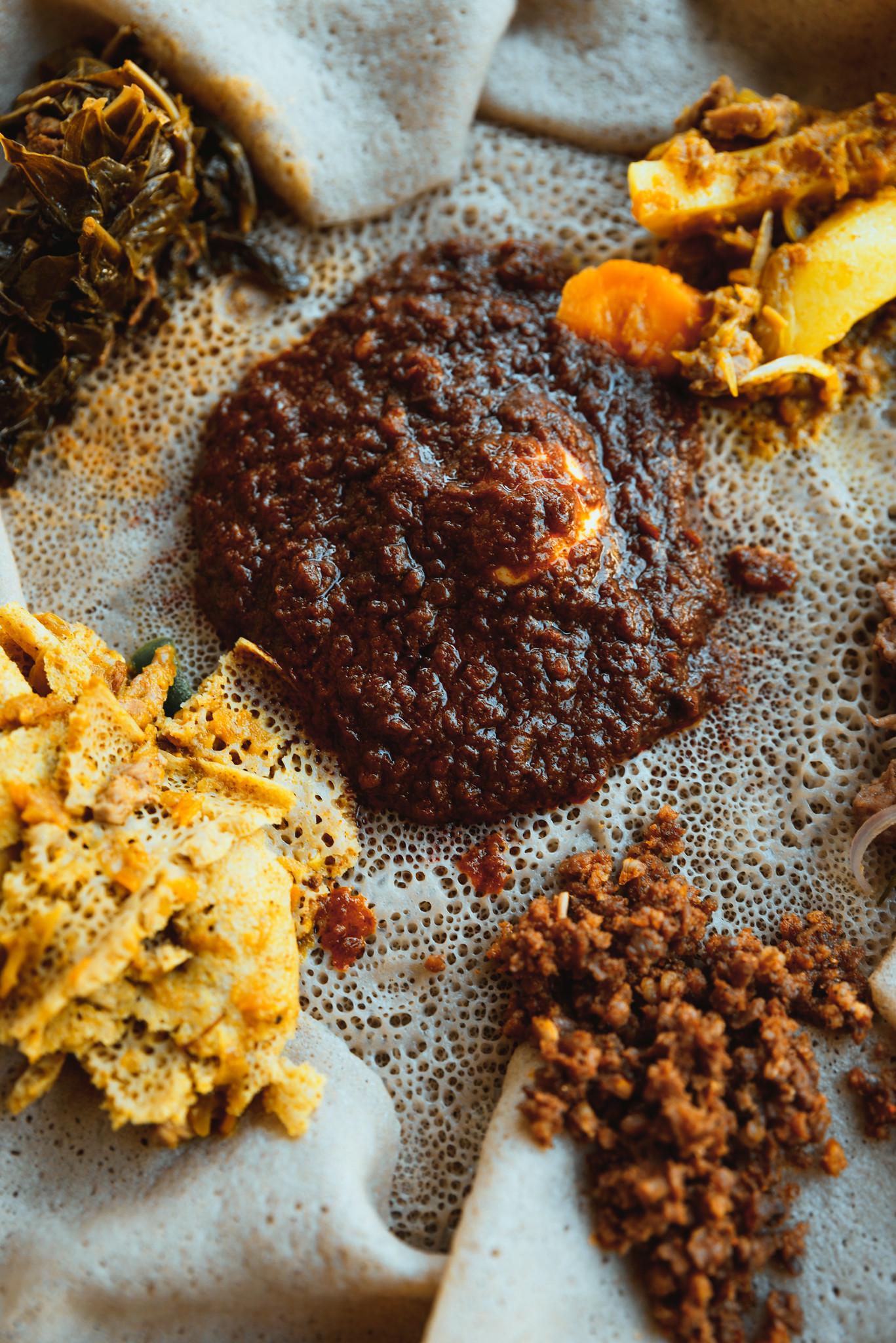
After lunch, I had some chill time at a local coffee shop. I had the chance to observe the Ethiopian coffee-making process right here in the birthplace of coffee, and it’s such a fascinating experience. Called buna tetu, the process is similar to a Japanese tea ceremony: coffee beans are roasted over an open fire, ground using mortar and pestle then poured into a traditional clay flask with long spout (jebena (ጀበና)) with boiling water and left to brew for several minutes; finally, it’s poured into small cups and flavored with tena adam leaves, where you can optionally add some sugar. Without sugar, Ethiopian Arabica coffee has a sour (acidic) profile with fruity notes.
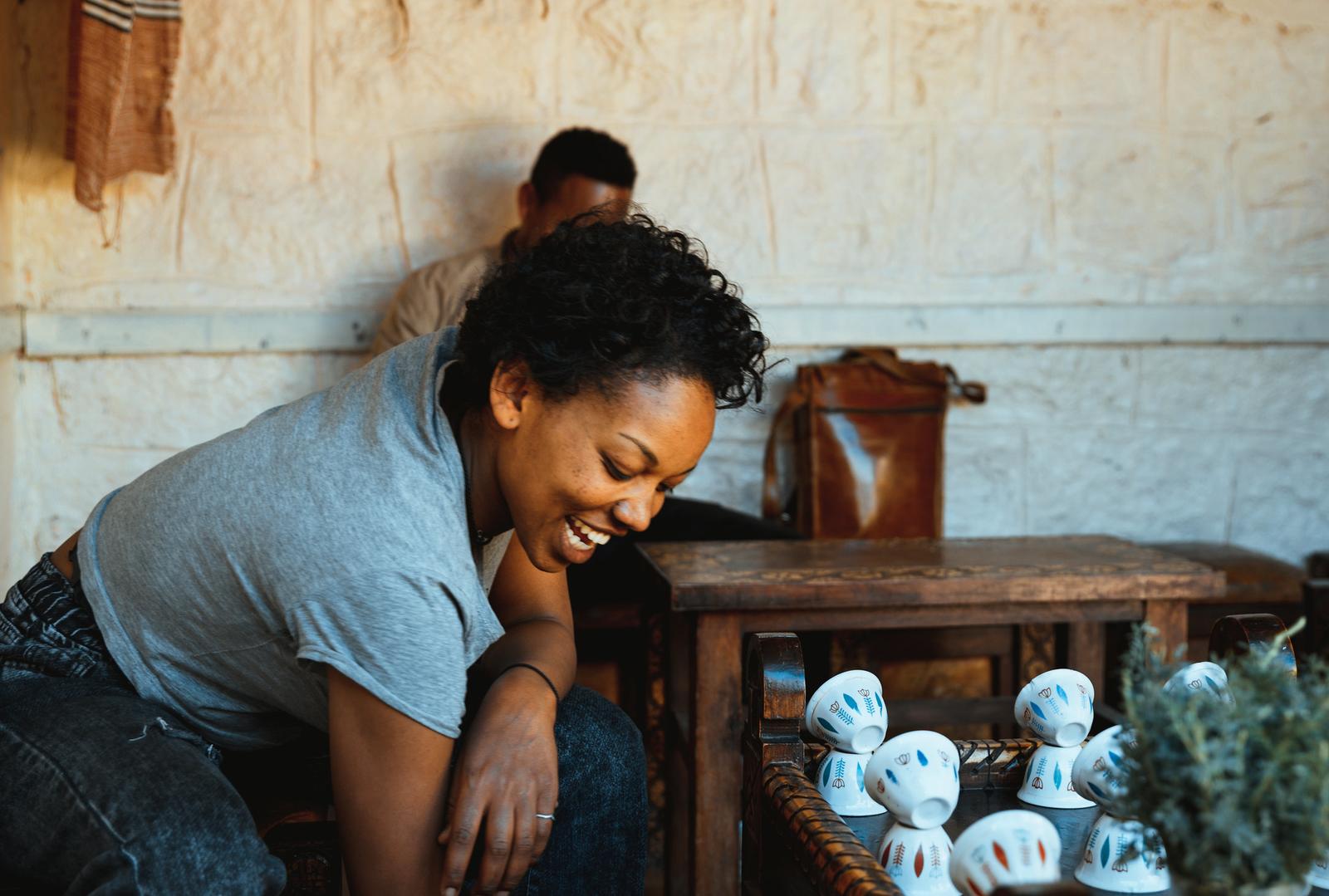
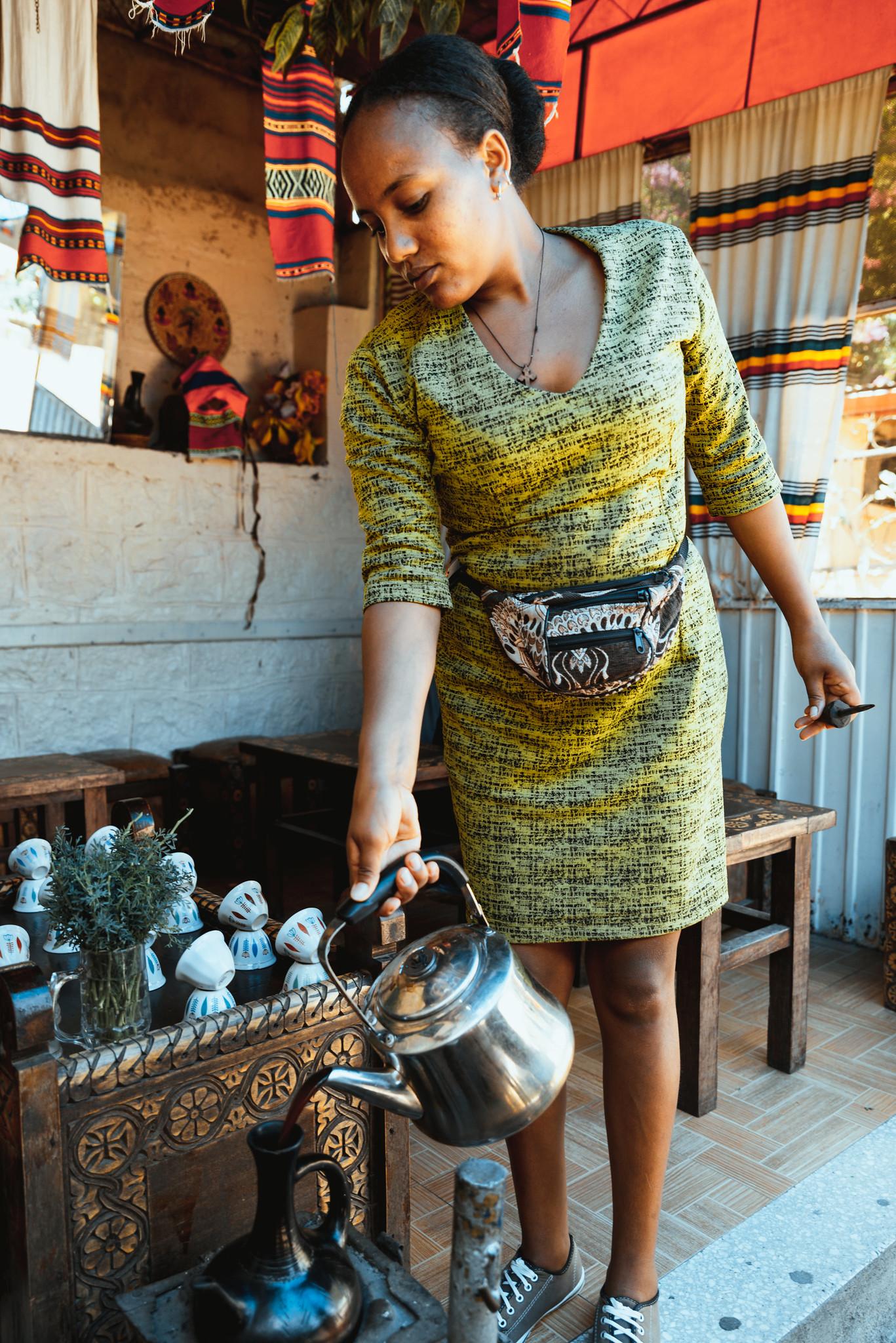
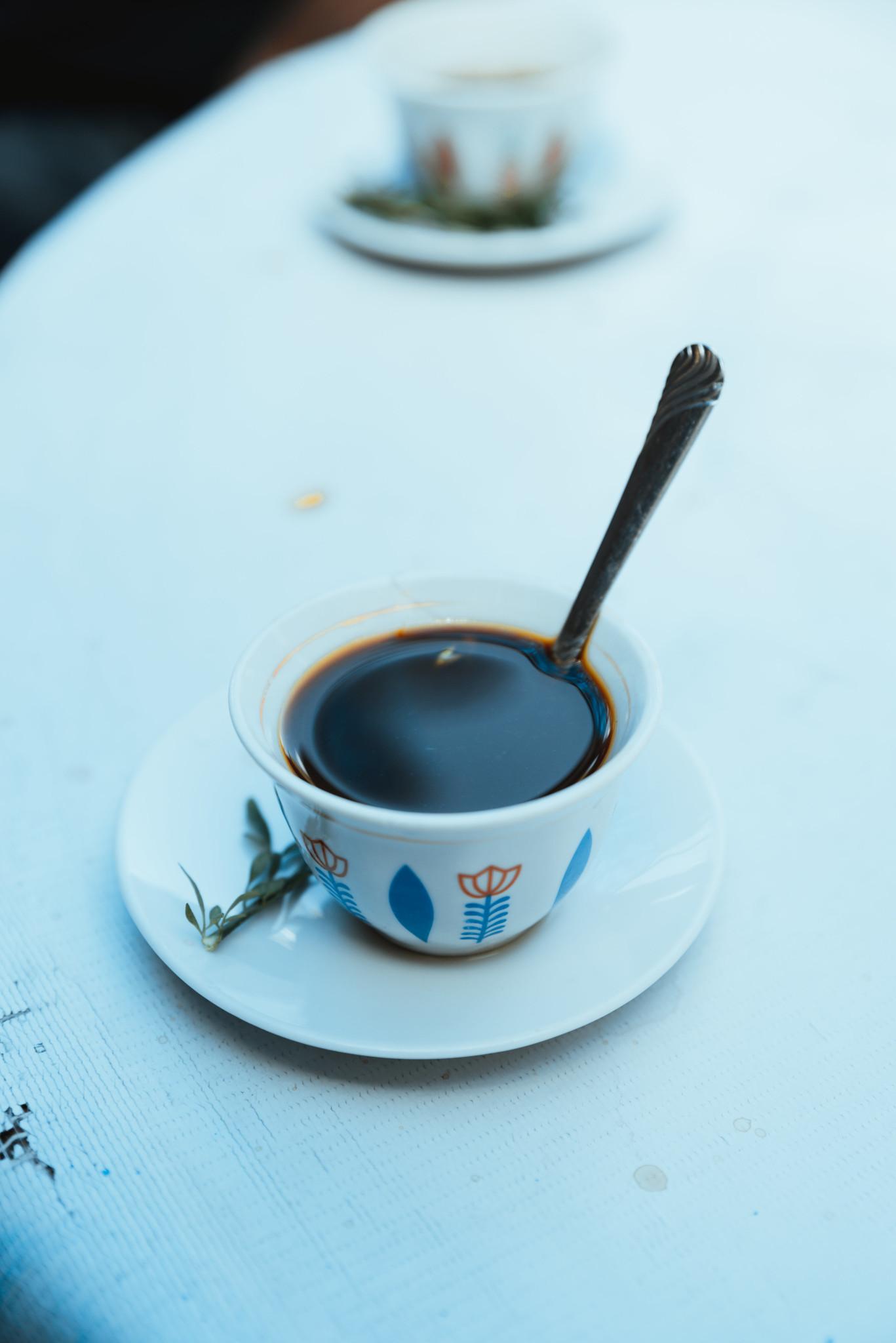
The citizens are friendly and eager to pose for photographs, in contrast to the challenges of taking street photos of people in privacy-conscious countries. Here I had opportunities to meet the young photography enthusiasts at Friendship Park, the joyful kids selling fruit along the road back to my hotel, or the random workers riding on trucks.
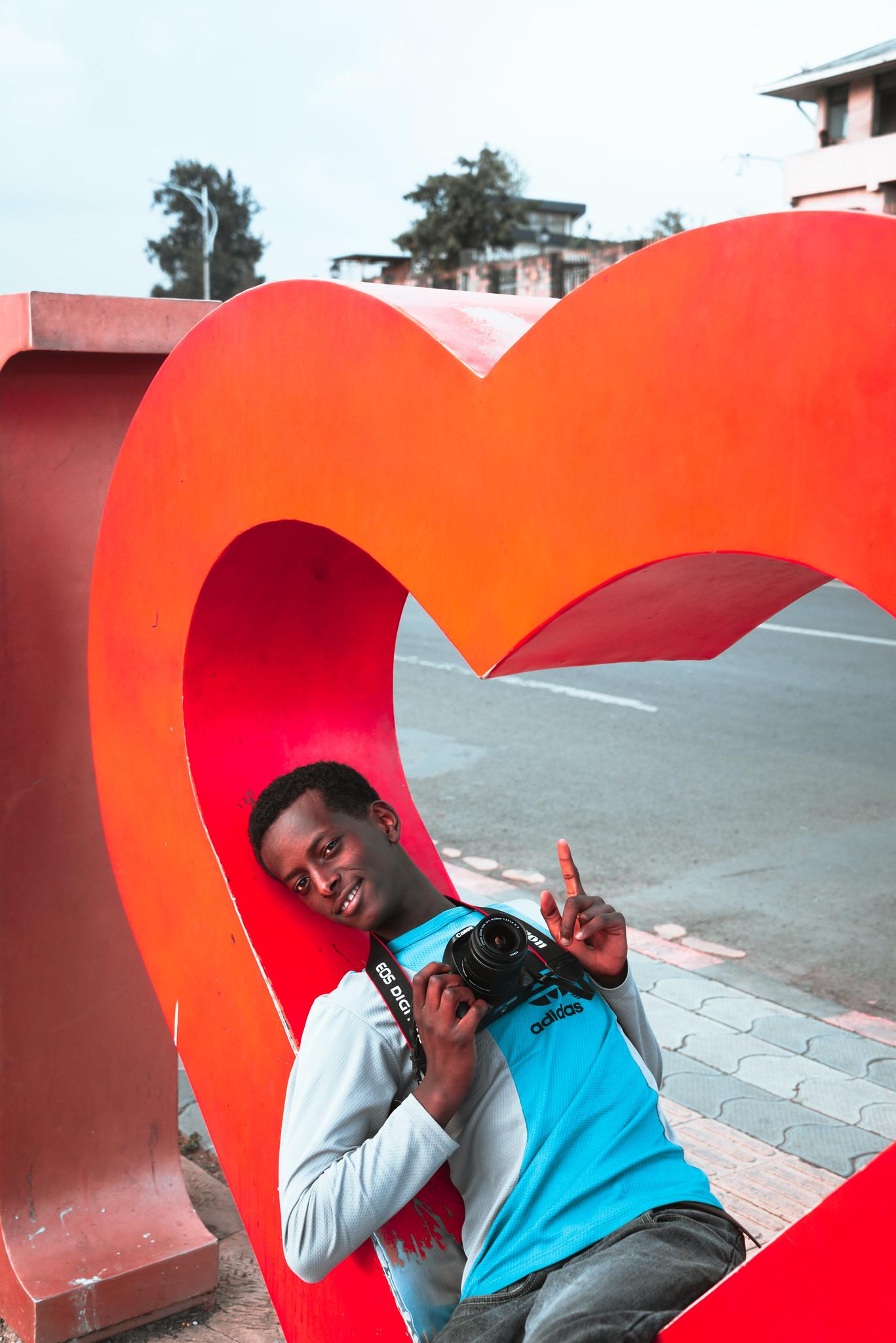
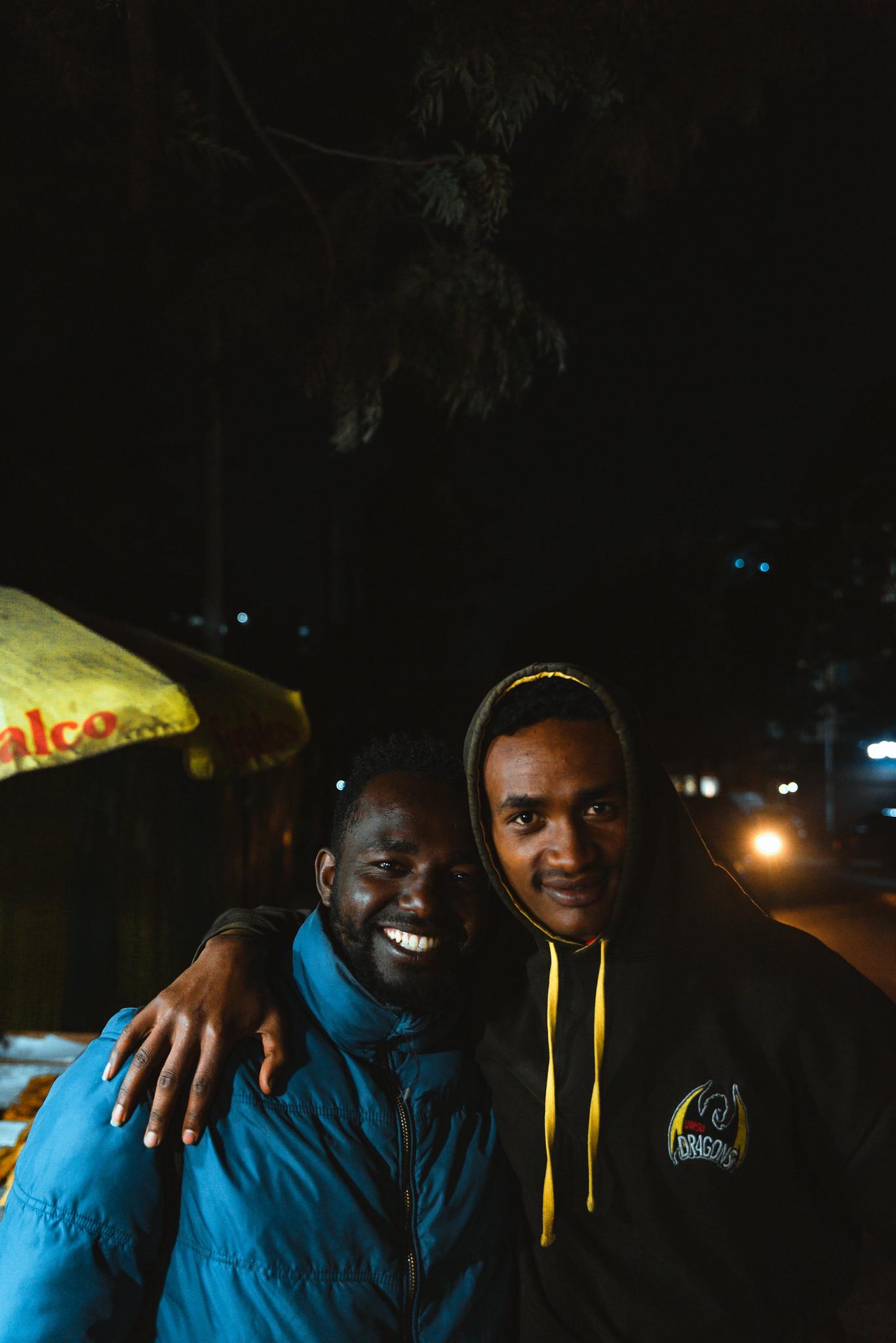
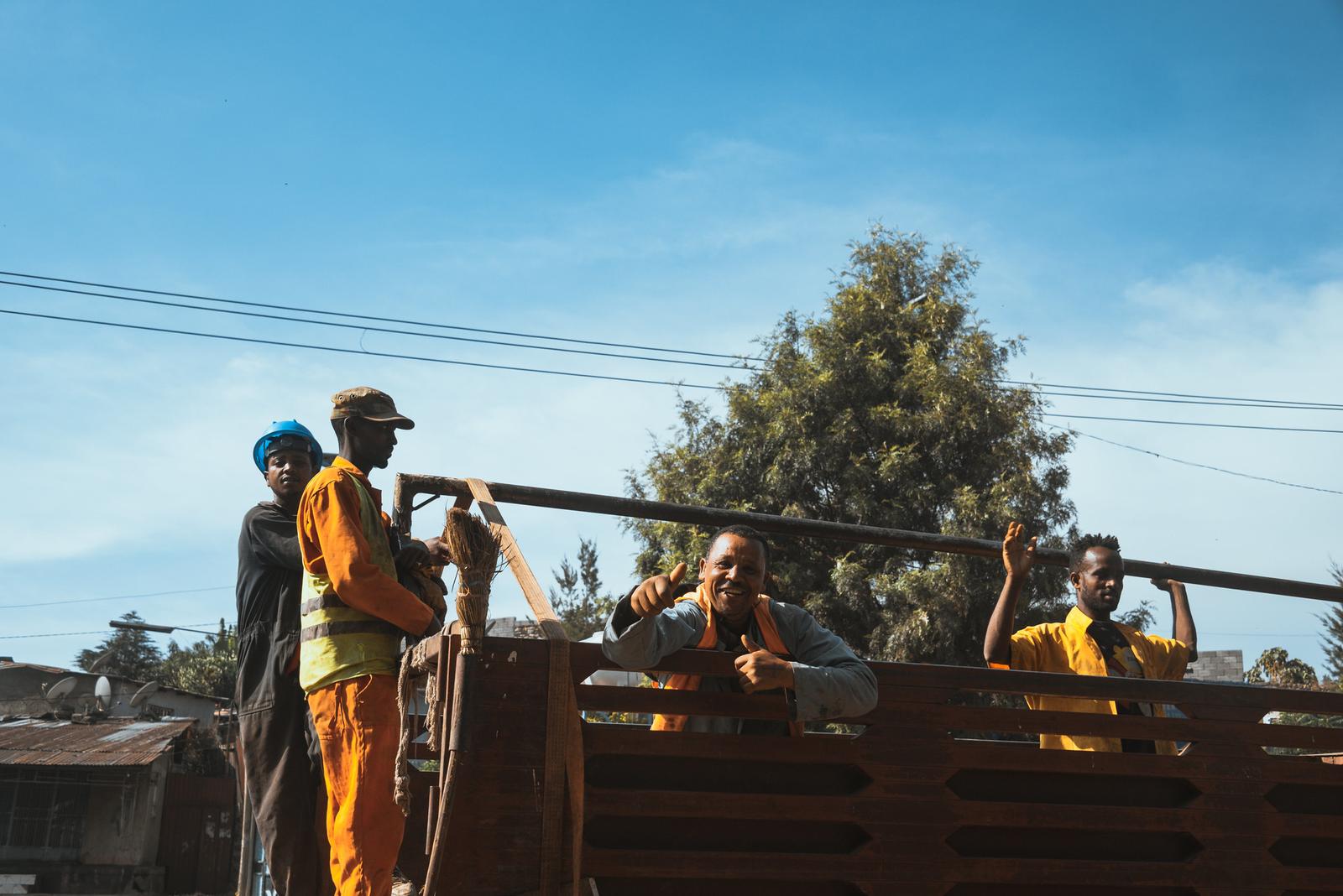
Of course you’d better avoid wandering after twilight, it’s the first survival tip. I recall an incident when I was walking back to the hotel, a man by roadside feigned a sneeze so he could approach me to ostensibly clean my jacket, but actually his intention was pickpocketing. Fortunately I managed to grab my phone back. For female travelers, you certainly shouldn’t walk alone in such situations. Beside pickpockets, travelers should be wary of people demanding money with menaces, as they try to follow and engage you in conversation over long distances.
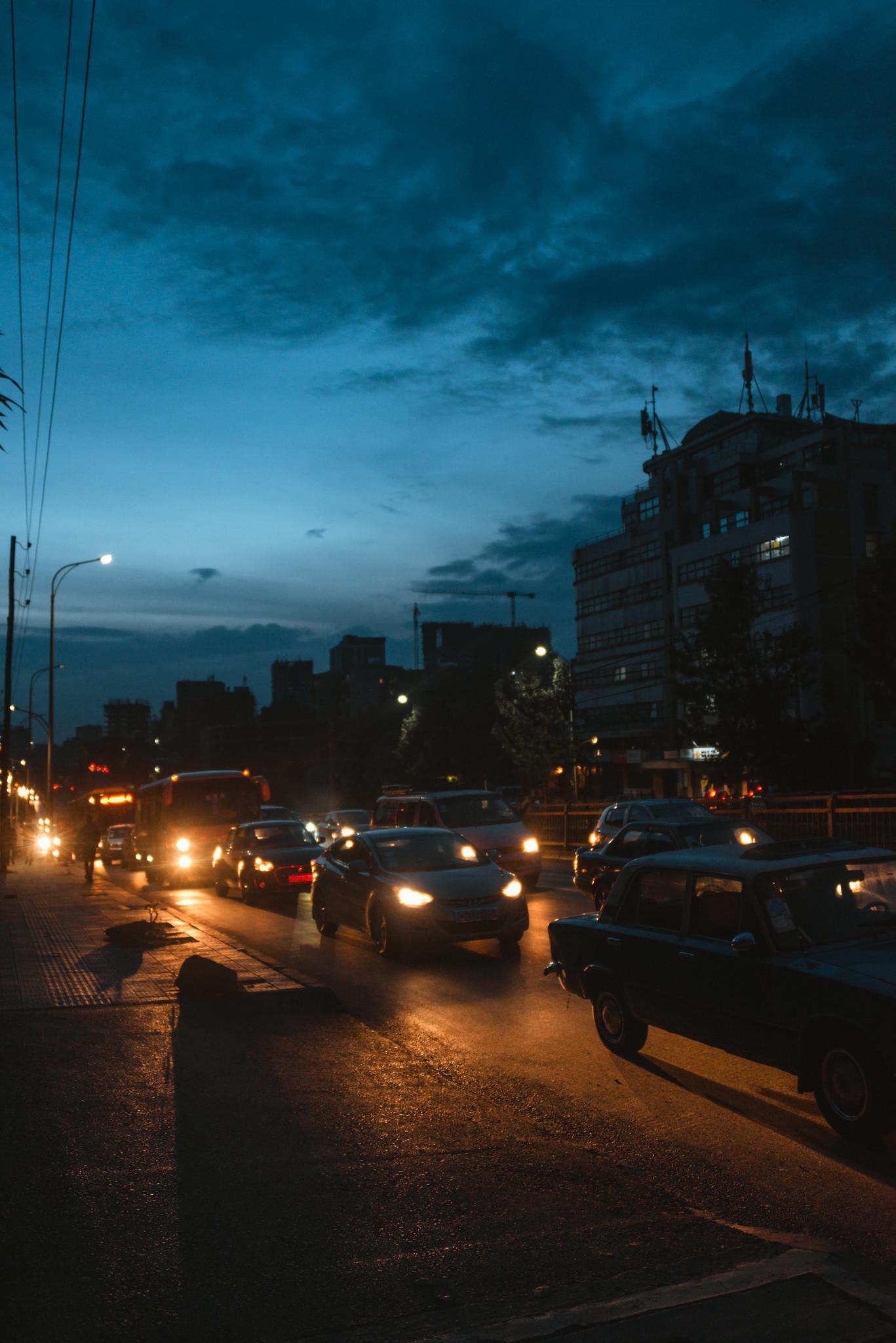
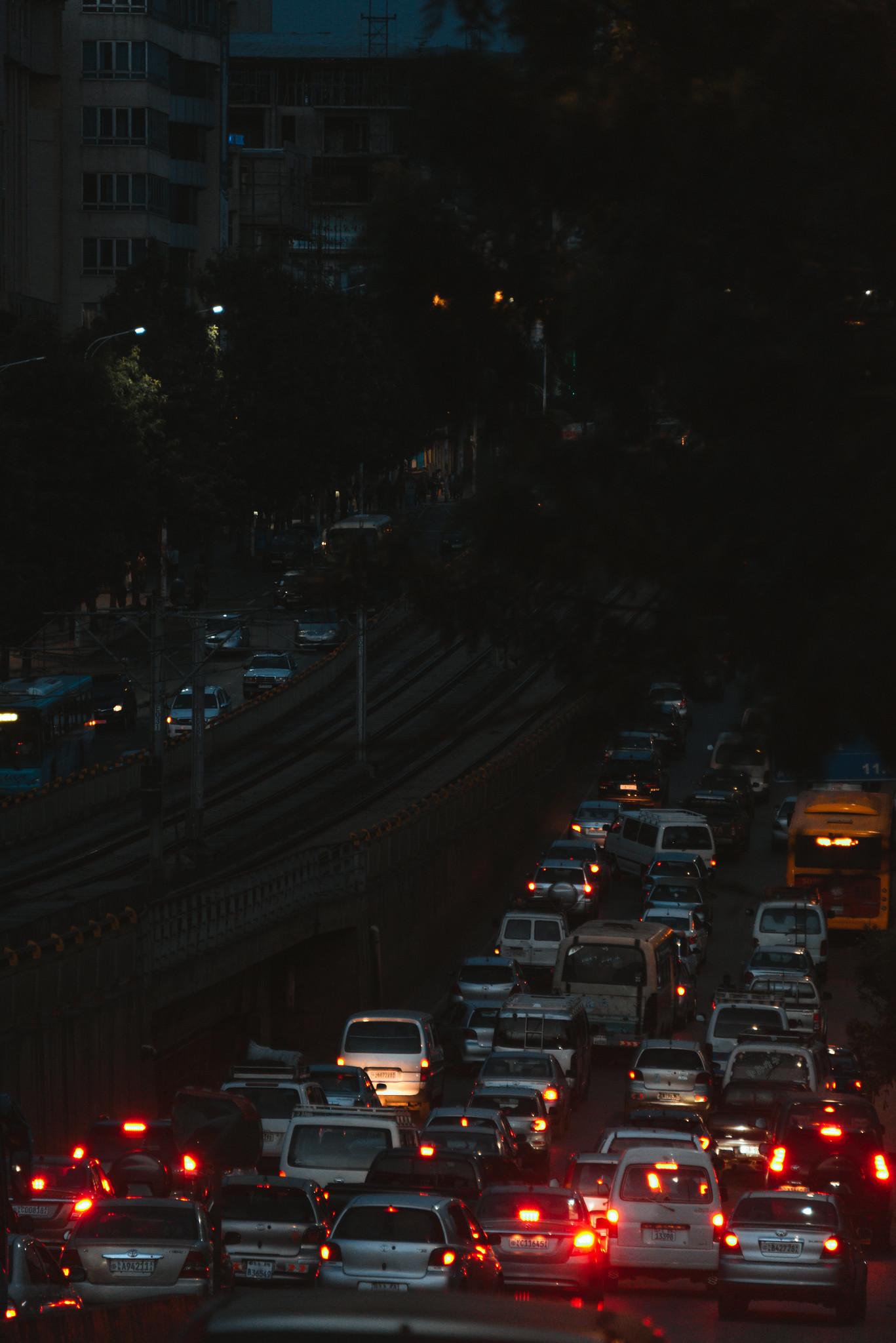
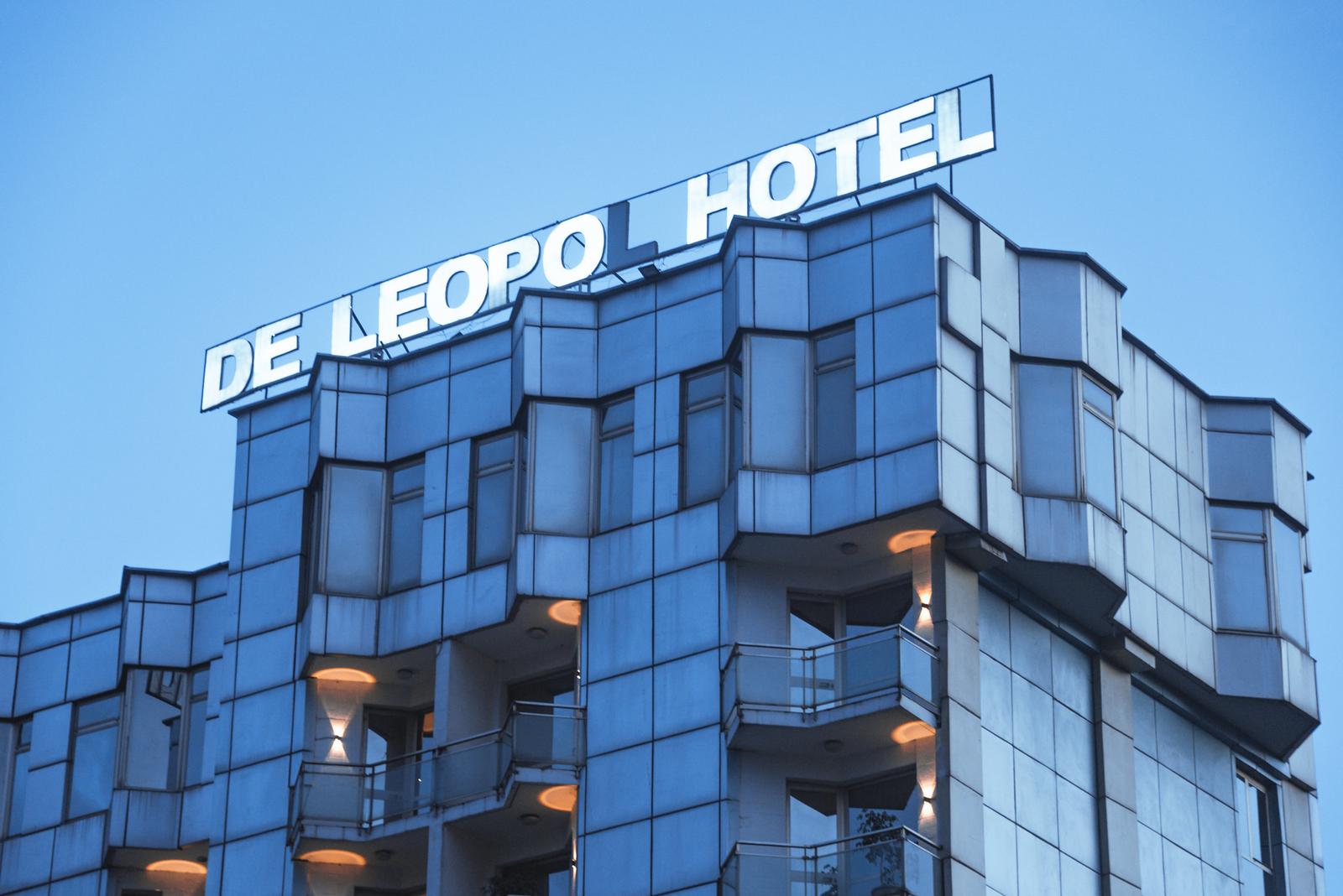
A special aspect of this city is residents here ride buses very frequently, as I could encounter long queues by roadside waiting to board the buses. When walking outside around 8am or 4pm, you can see lots of students dressed in uniform or netela-draped women packing the streets, which is very enjoyable.
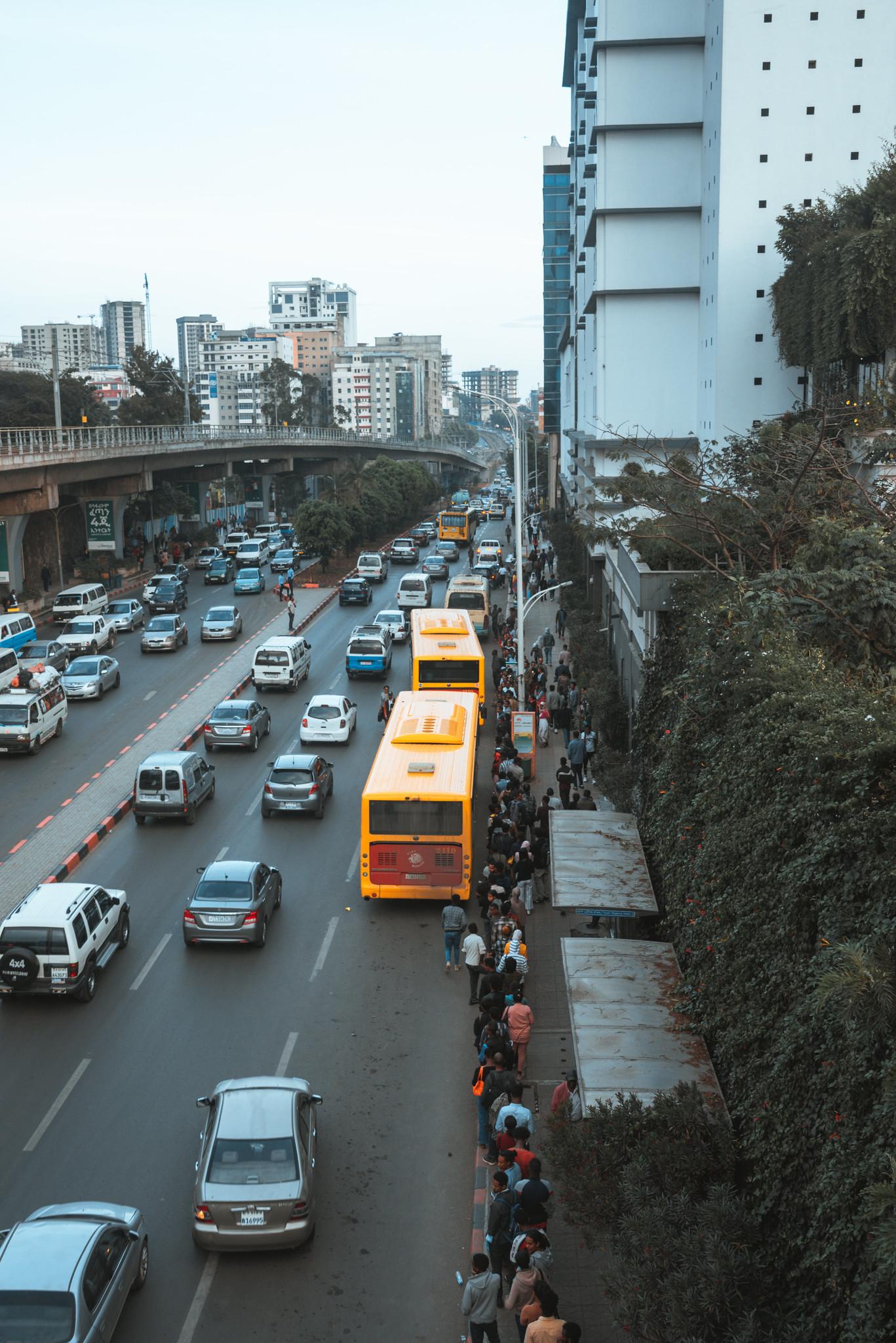
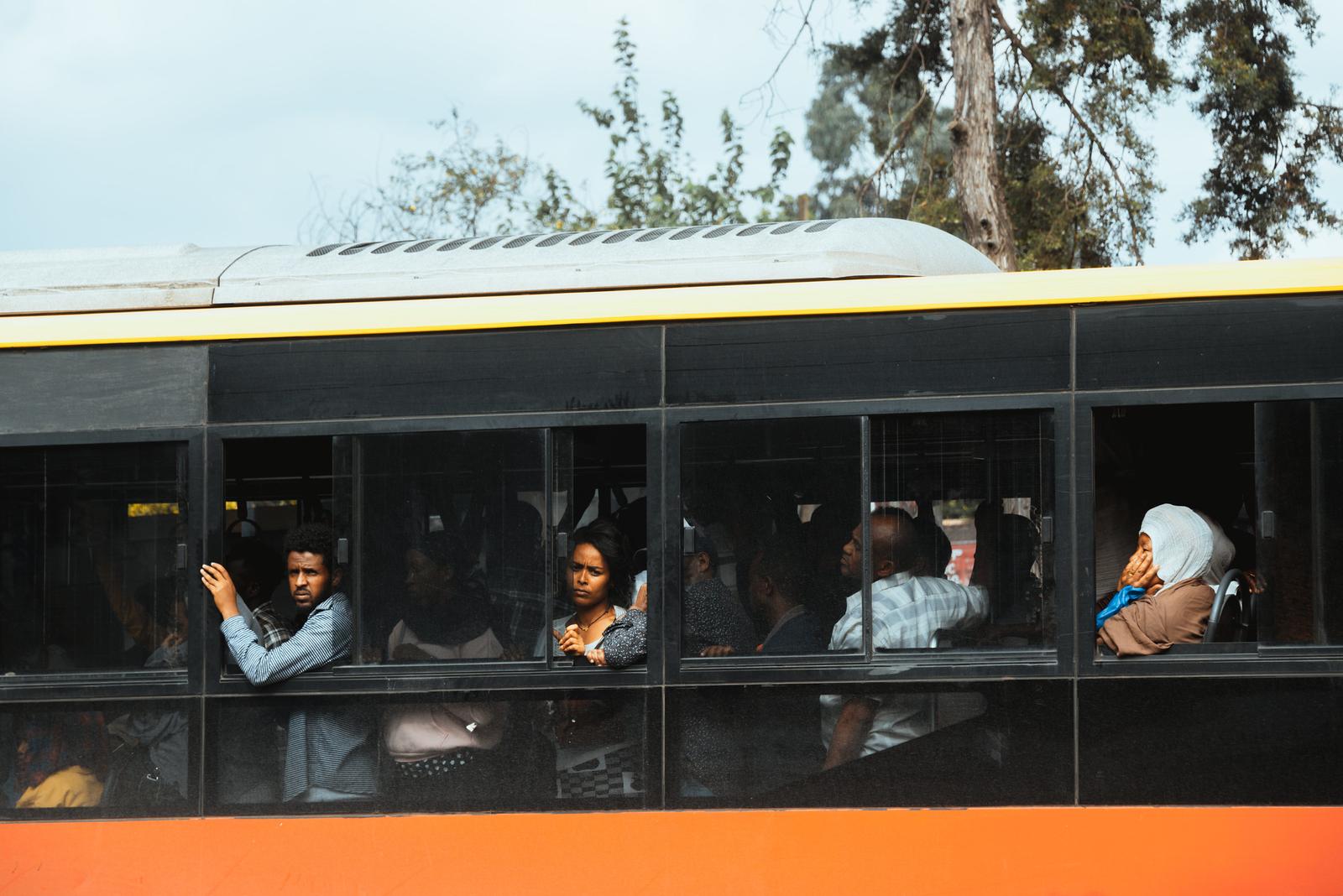
However, cars are aplenty too, but they adhere to disciplined traffic manners, and they can be stuck in traffic jam like any other cities in the world. Cars look pretty old, similar to what I had observed in Khiva.
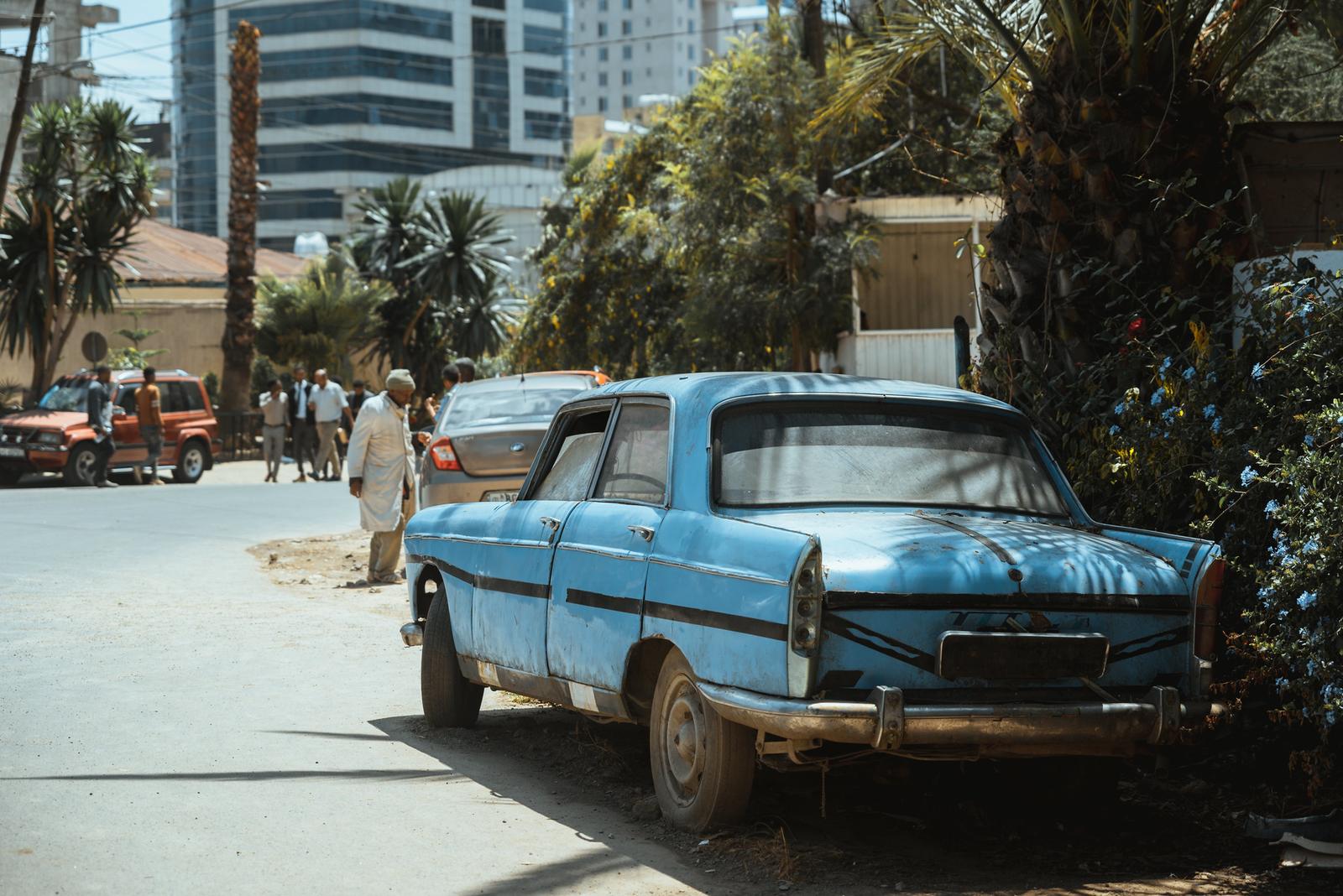
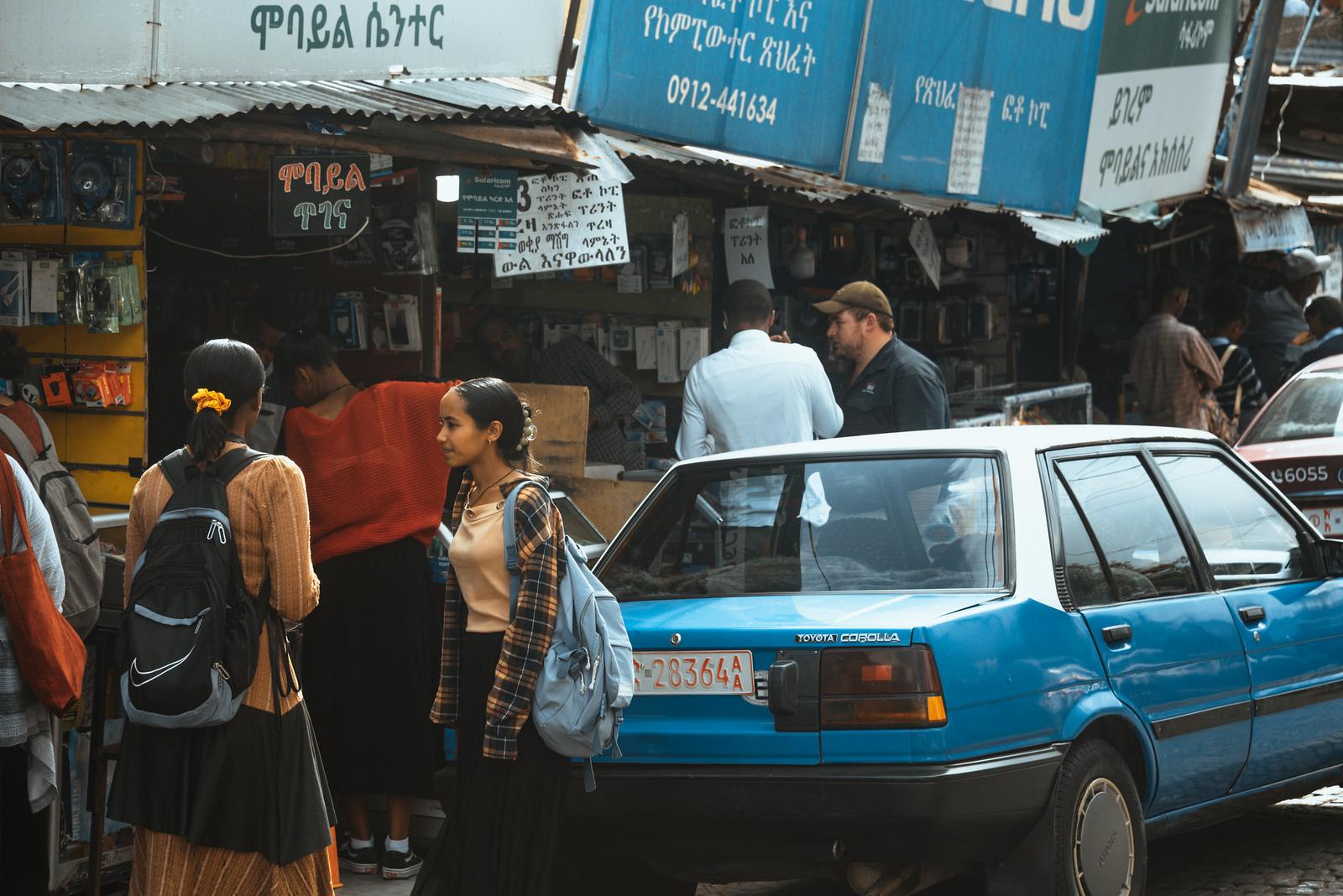
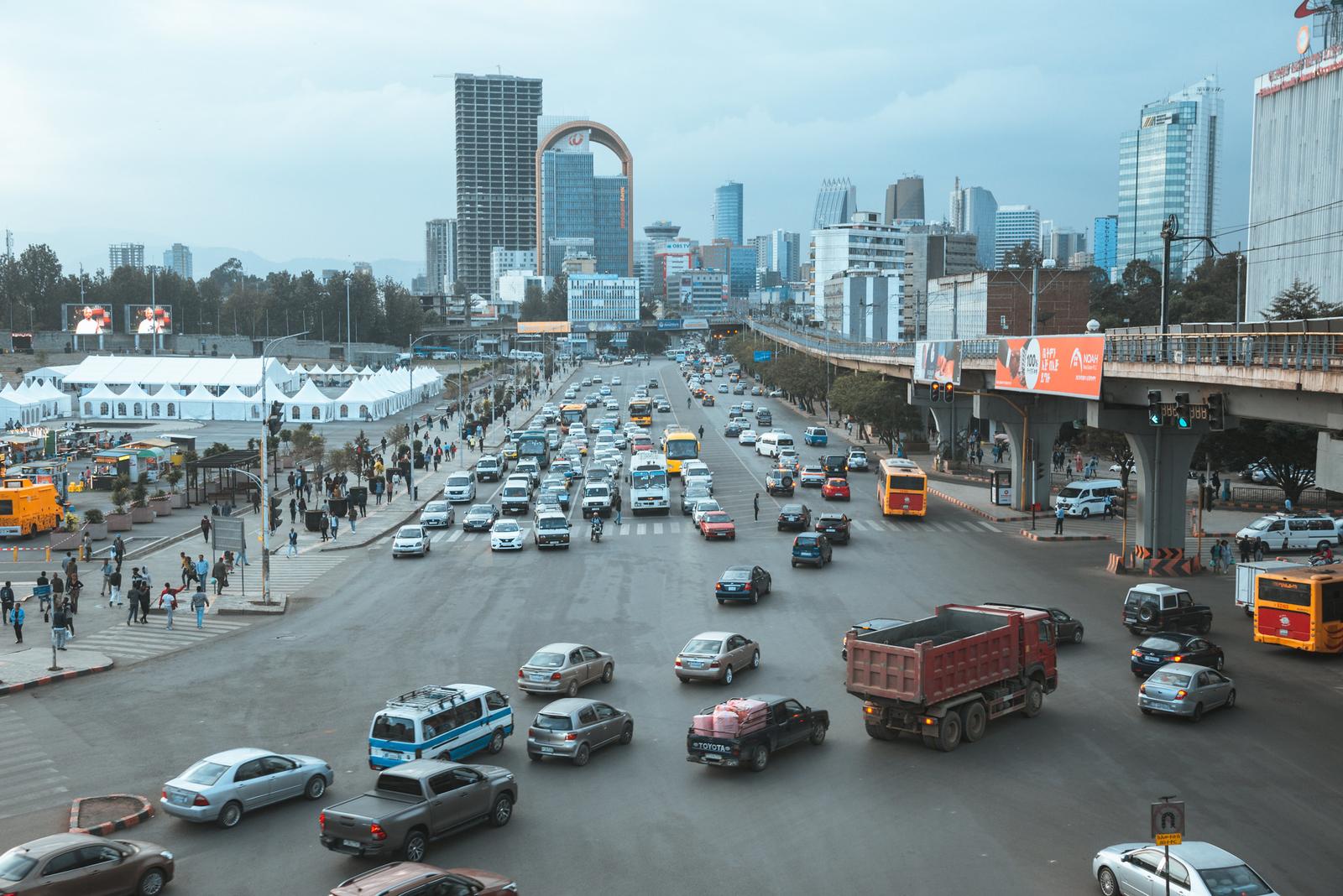
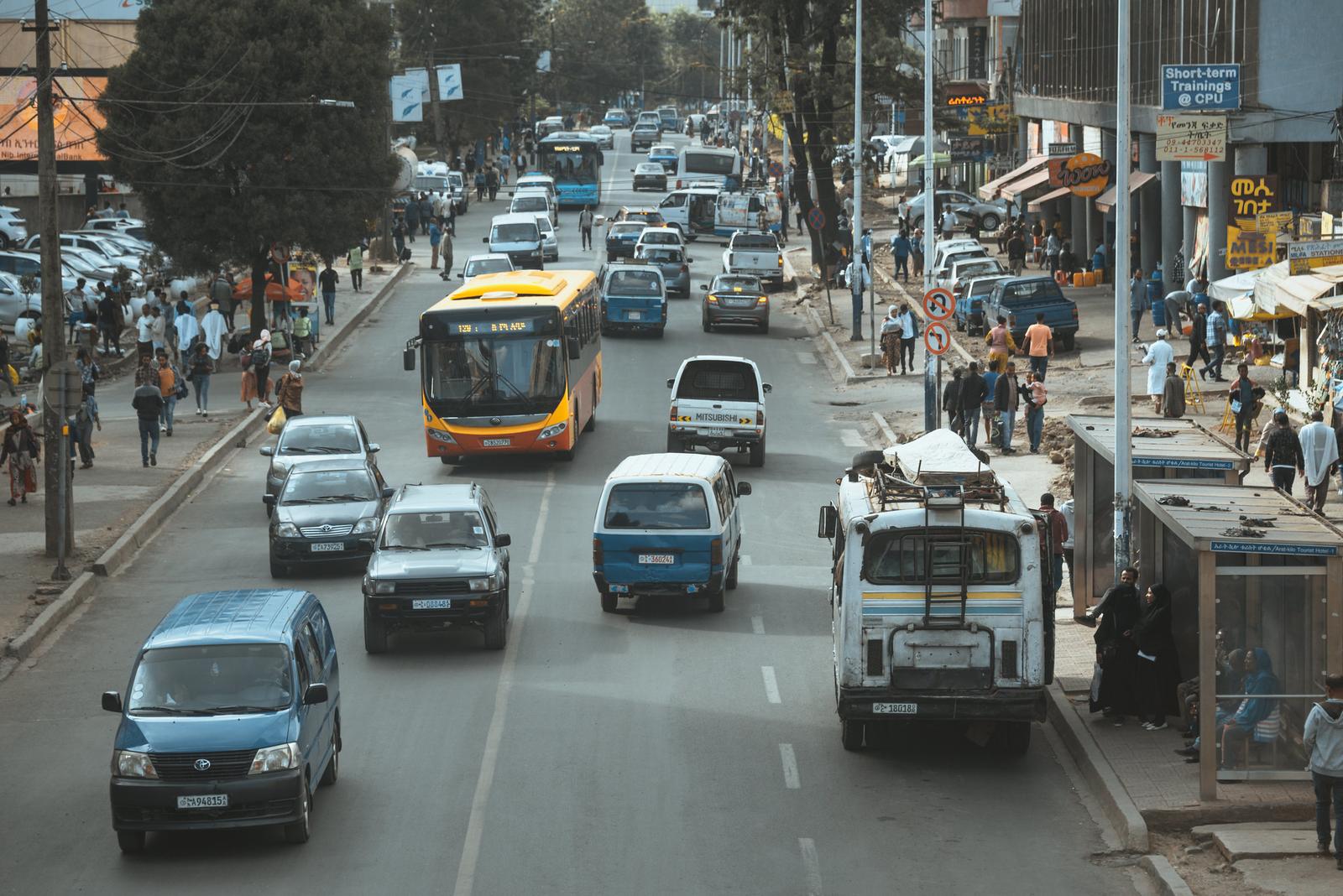
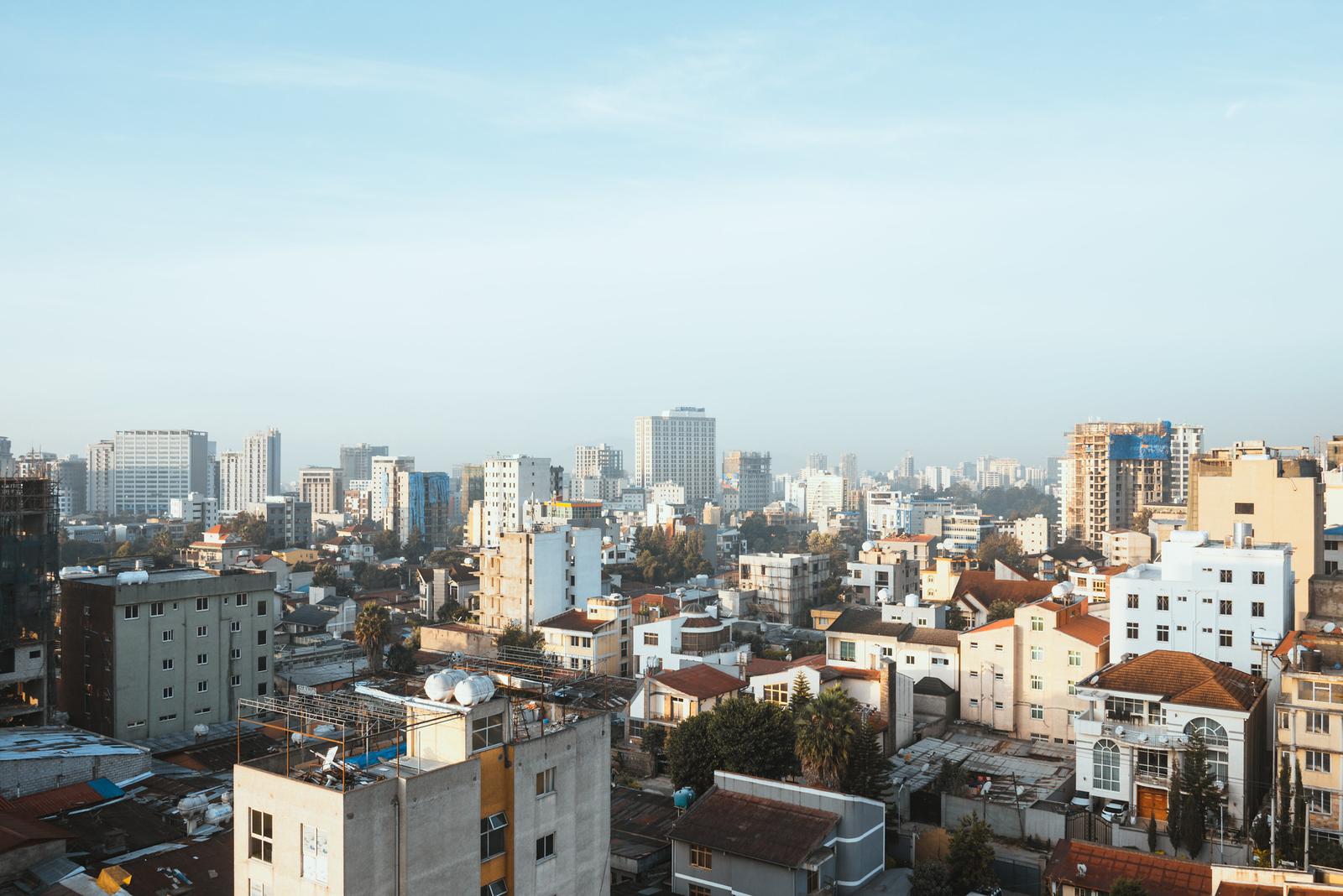
Wandering about the City
The Central Area
Addis Ababa, an energetic city, serves as the headquarters of many UN organizations in Africa, standing on par with any other modern cities. While strolling through its streets, you may easily be overwhelmed by a multitude of buildings in construction, and it comes with a cost: dustiness. Much of the investment comes from China, even the national routes spanning the entire country are being built by Chinese workers. So if you are an Asian taking a city walk, unsurprisingly you’ll be referred to as ‘China’.
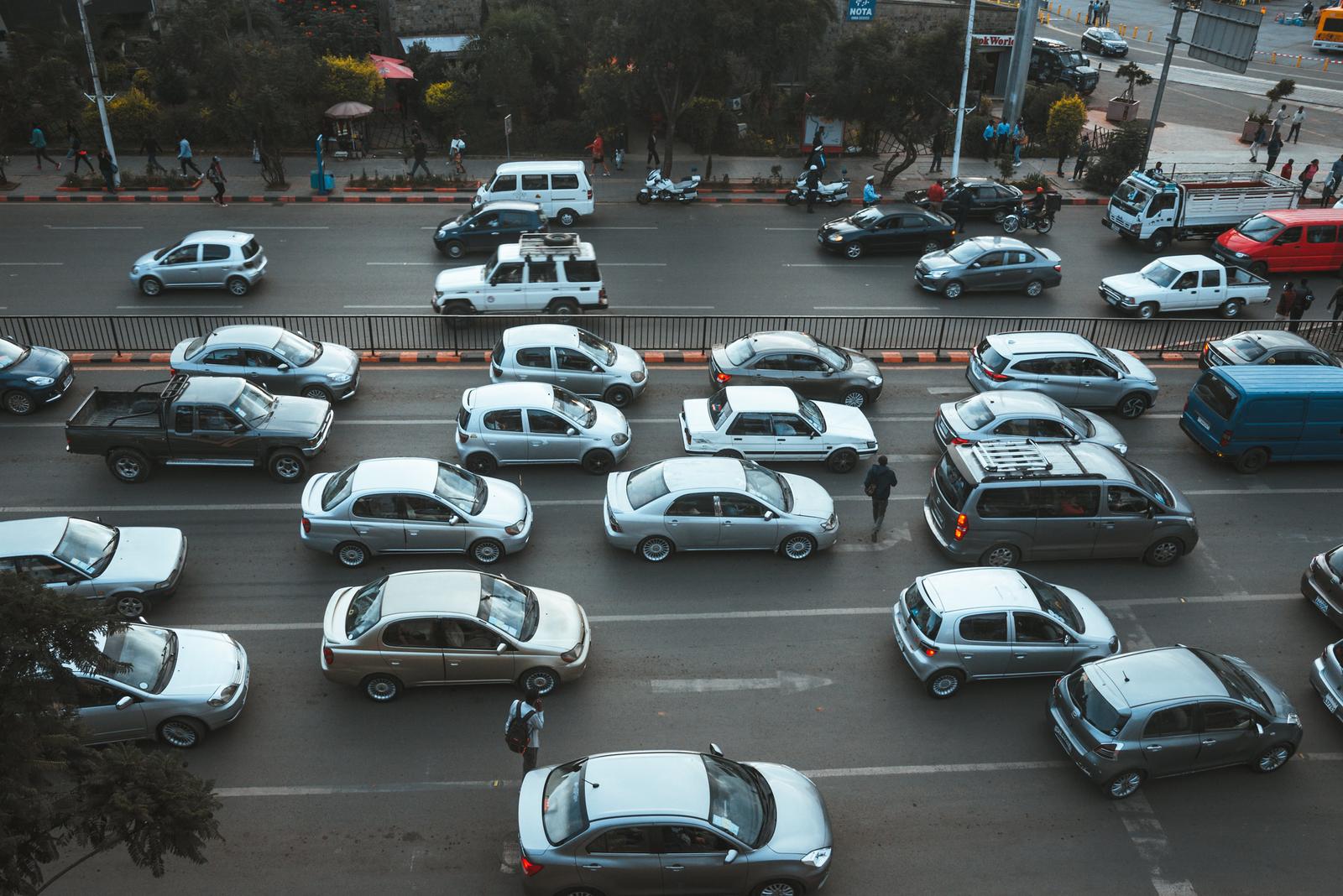
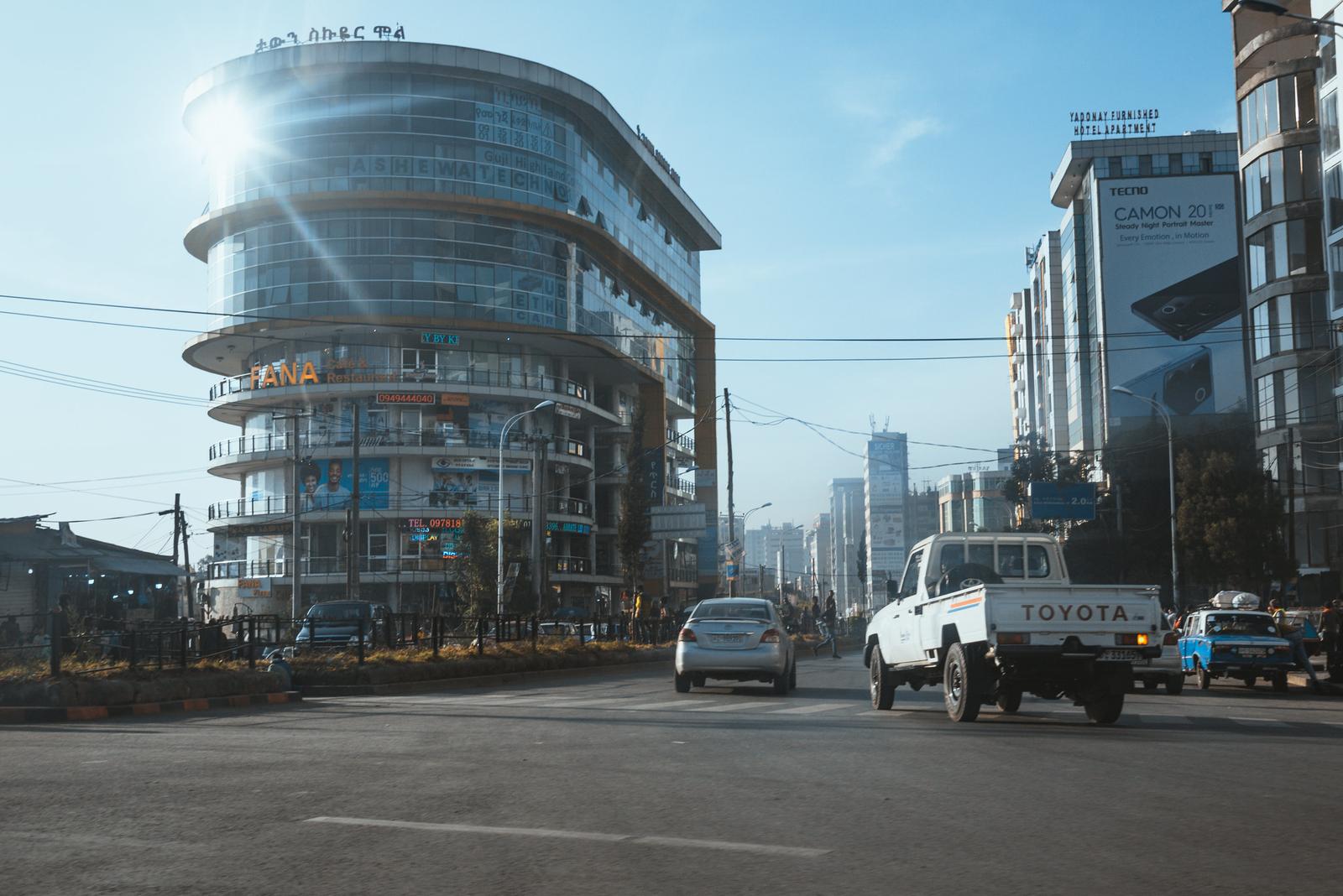
From the Chinese-built Friendship Park you can have an overview of Addis Ababa’s beautiful and magnificent CBD to the west. It’s once a shabby slum area just over ten years ago, but has now transformed into skyscrapers. However, the constructions are lacking advanced techniques, as evidenced by the absence of protective covers or sturdy scaffolding.
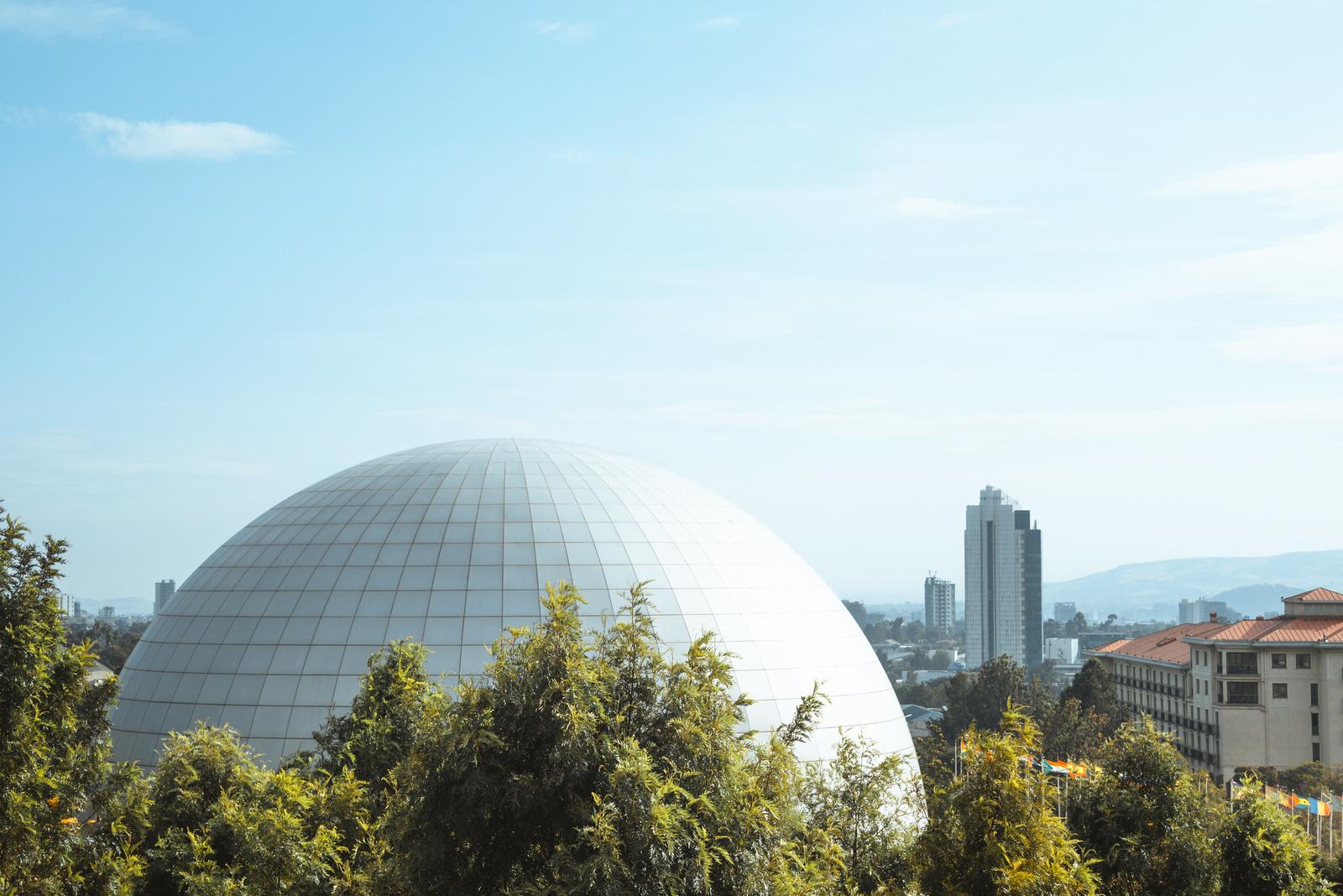
Of course we can’t miss the serene, charming alleys with luxury cars parked beneath the canopies like the one leading to my hotel (Social House Addis Ababa) branching from Mickey Leland Street.
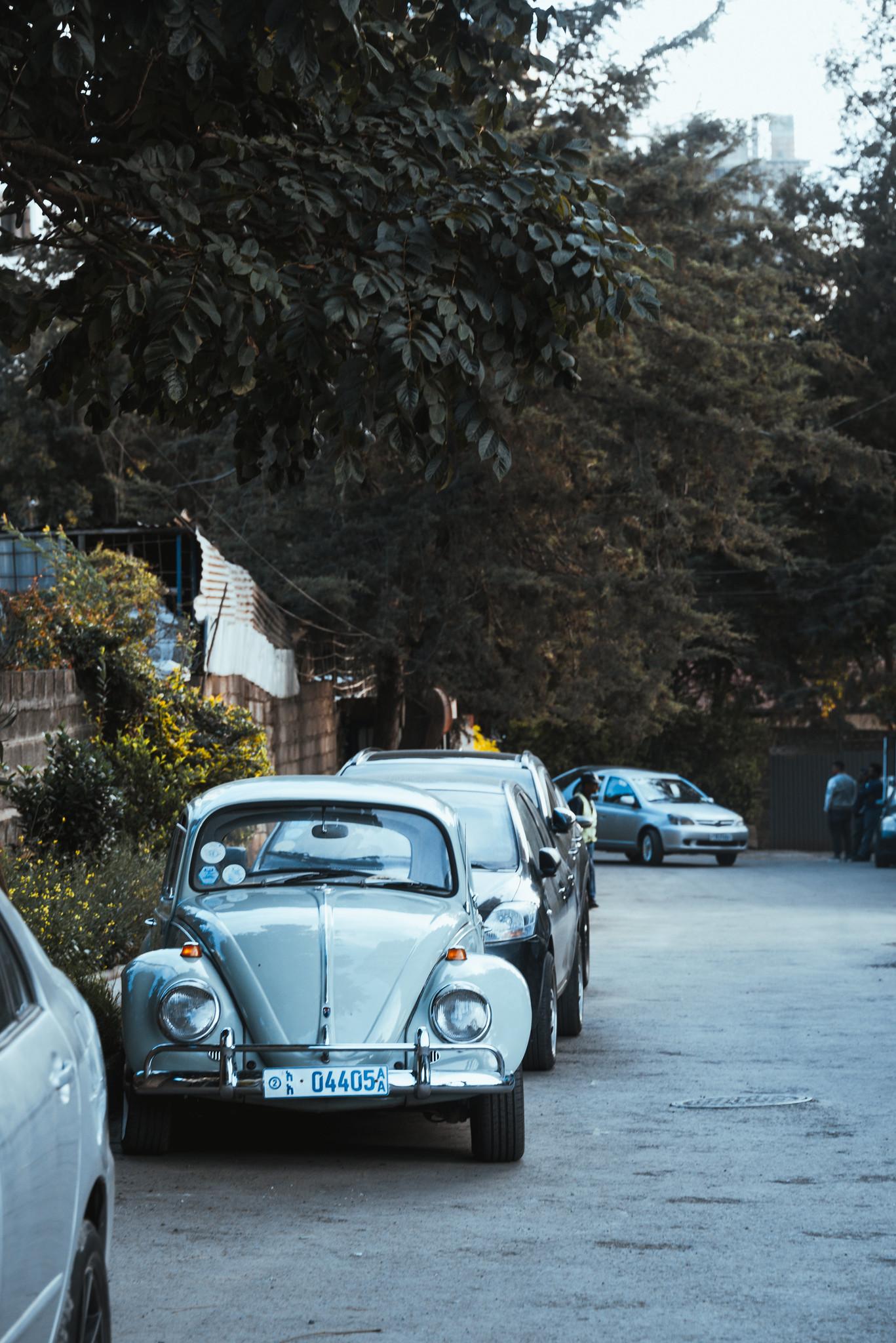
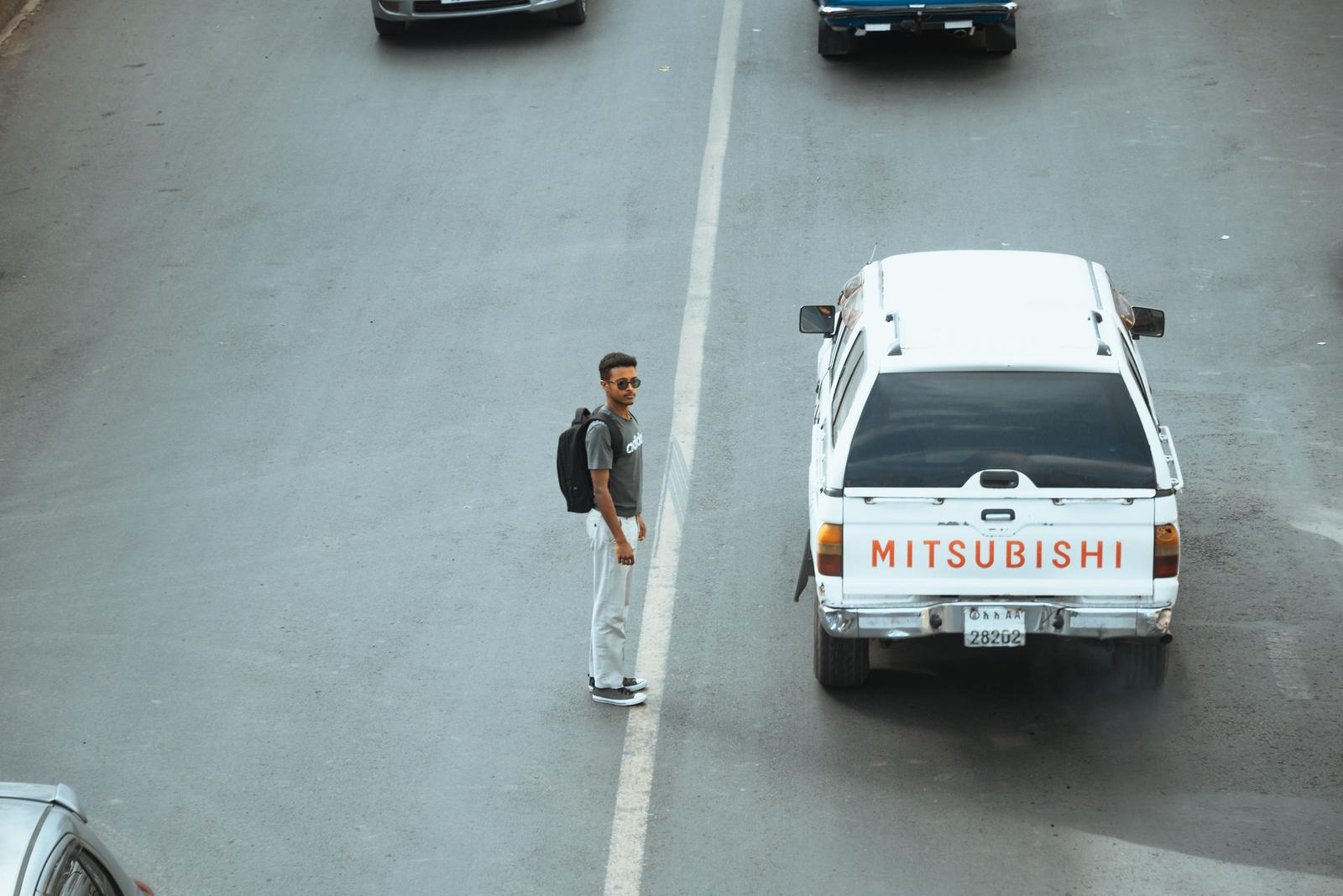
National Museum of Ethiopia
When exploring Ethiopia, we should be aware about the fact that this country is far from ordinary. It stands as one of the cradles of mankind, a rare African country with a written history, as well as it successfully evaded the Scramble for Africa in the Early Modern period. From the dancing Ge’ez script to its artworks and fashion, they all bear an unmistakable characteristic, a blending of Orthodox art (Coptic, Byzantine) influences with native African culture, within the context of Ethiopia’s relative isolation from the neighbor countries, both geographically and religiously.
And of course, National Museum of Ethiopia is an ideal place to have a thorough view of the country’s culture and history. (If you visit alone, you’d better avoid those self-proclaimed guides at the museum’s entrance, they may rip you off.)
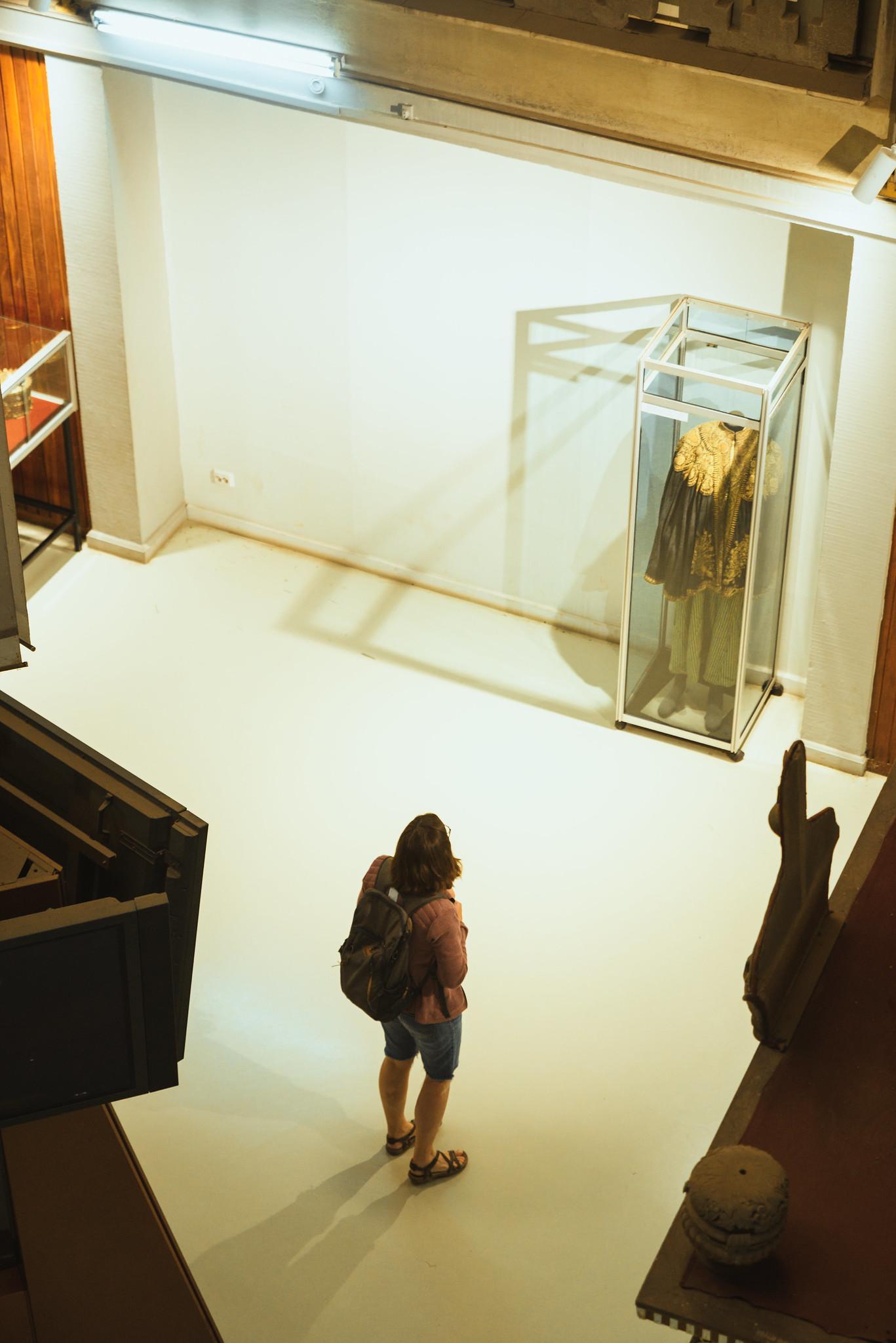
There’s one entire floor dedicated to hominoid and homininan’s fossil displays, the most famous among them is Lucy (also known as Dink’inesh (ድንቅ ነሽ)) dated to about 3.2 million years ago, an Australopithecus fossilized collection of bones. Lucy was discovered in the 1970s and brought back to Ethiopia in 2013, and what are displayed in museums worldwide (including this one) are merely casts of the original fossil.
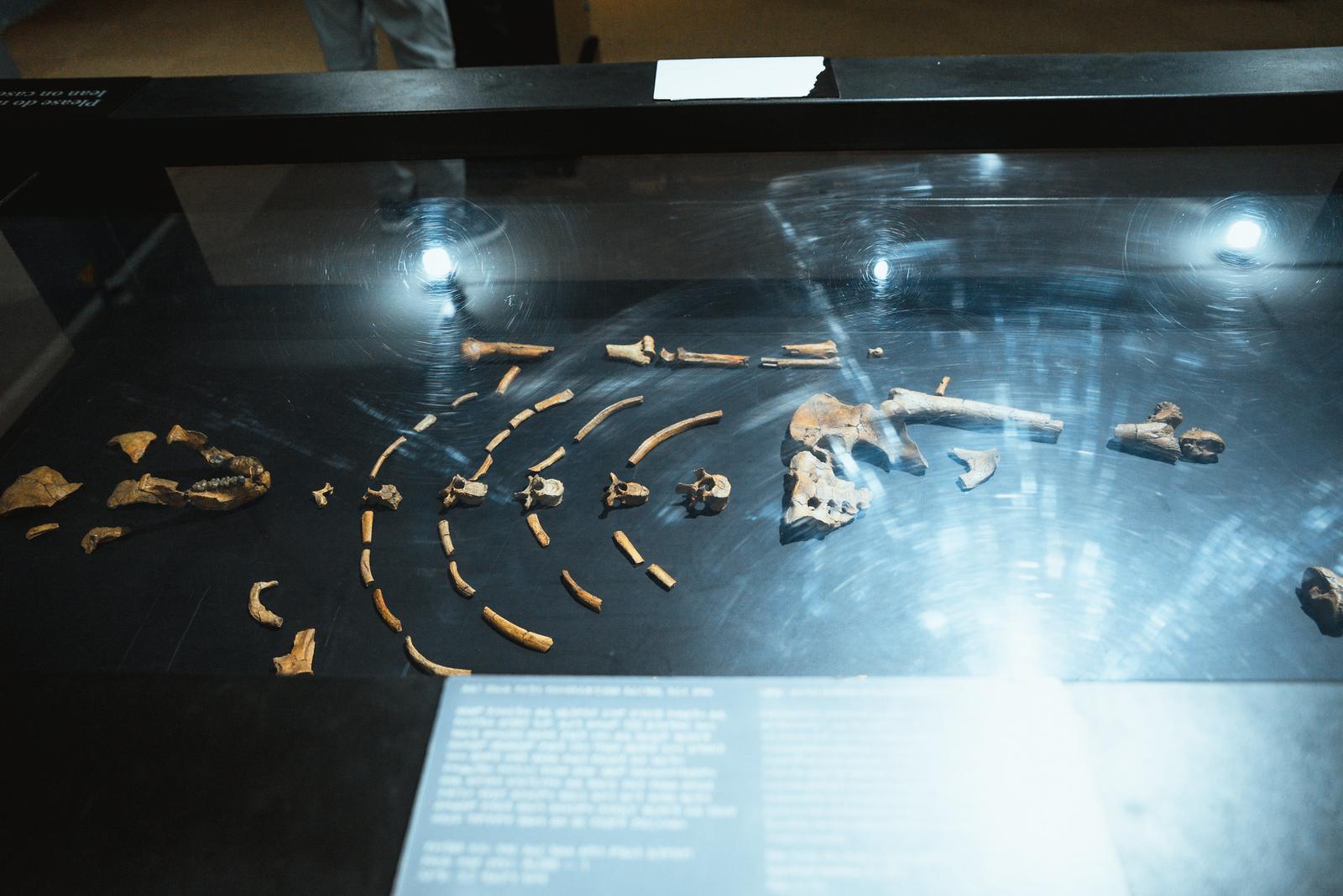
The Ethiopian paintings hold profound historical and religious meanings and are influenced by Byzantine art, with simple body shapes, vivid colors, large eyes, halos and brown skin. You can easily recognize them on church facades, or even in printed religious artwork placed above car steering wheel.
Mercato Market
On my last day in Ethiopia I made a brief visit to the famous market Mercato (መርካቶ). To be honest, hailing a cab using the app was quite expensive too. Everyone would assume the cost of living in Africa to be low, but it’s not true; expenses for dining, accommodation and transportation are on par with those in developed countries.
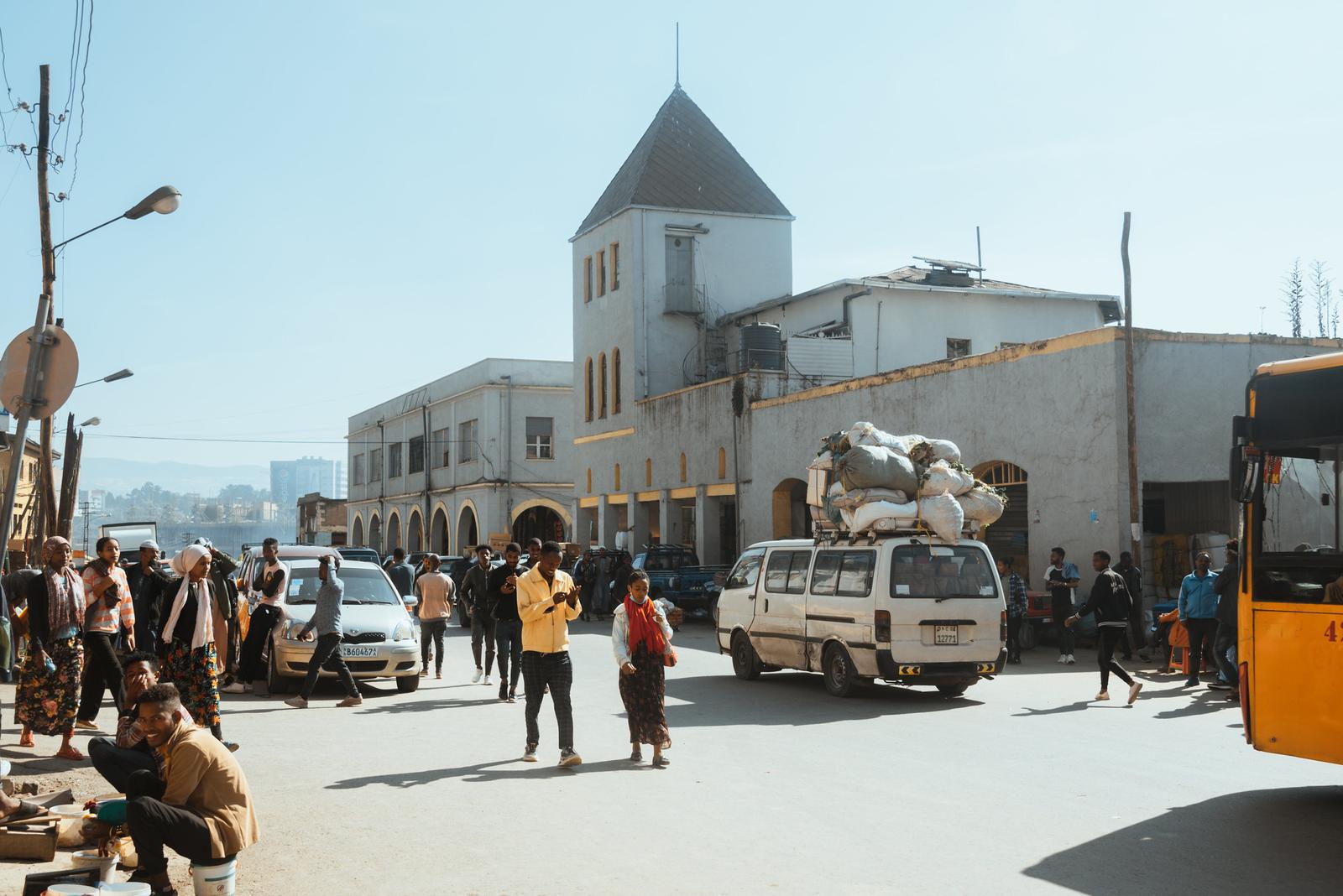
Addis Ababa weather was cool enough to provide relief from the smoky air outdoors; here they even herd donkeys and horses on the streets.
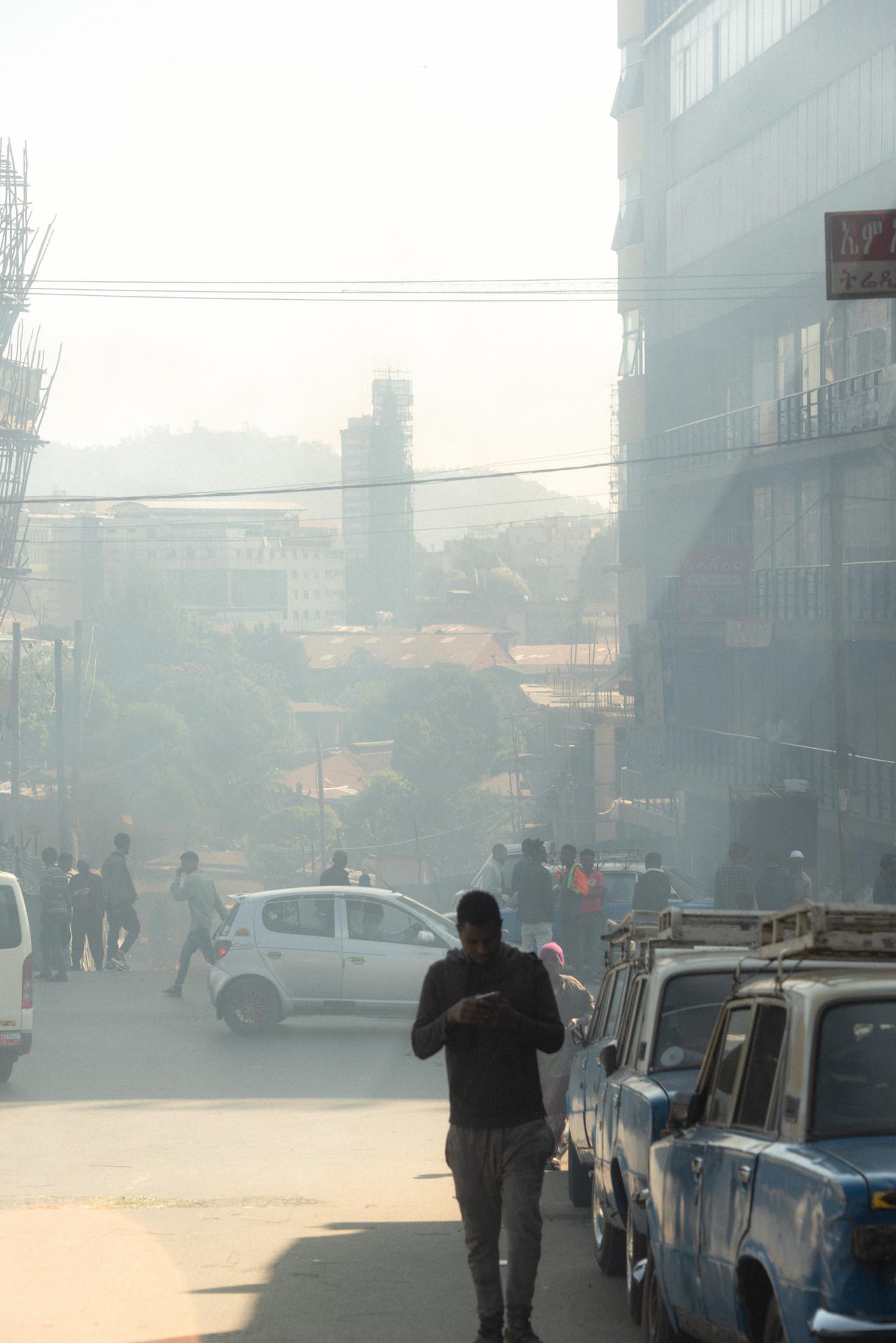
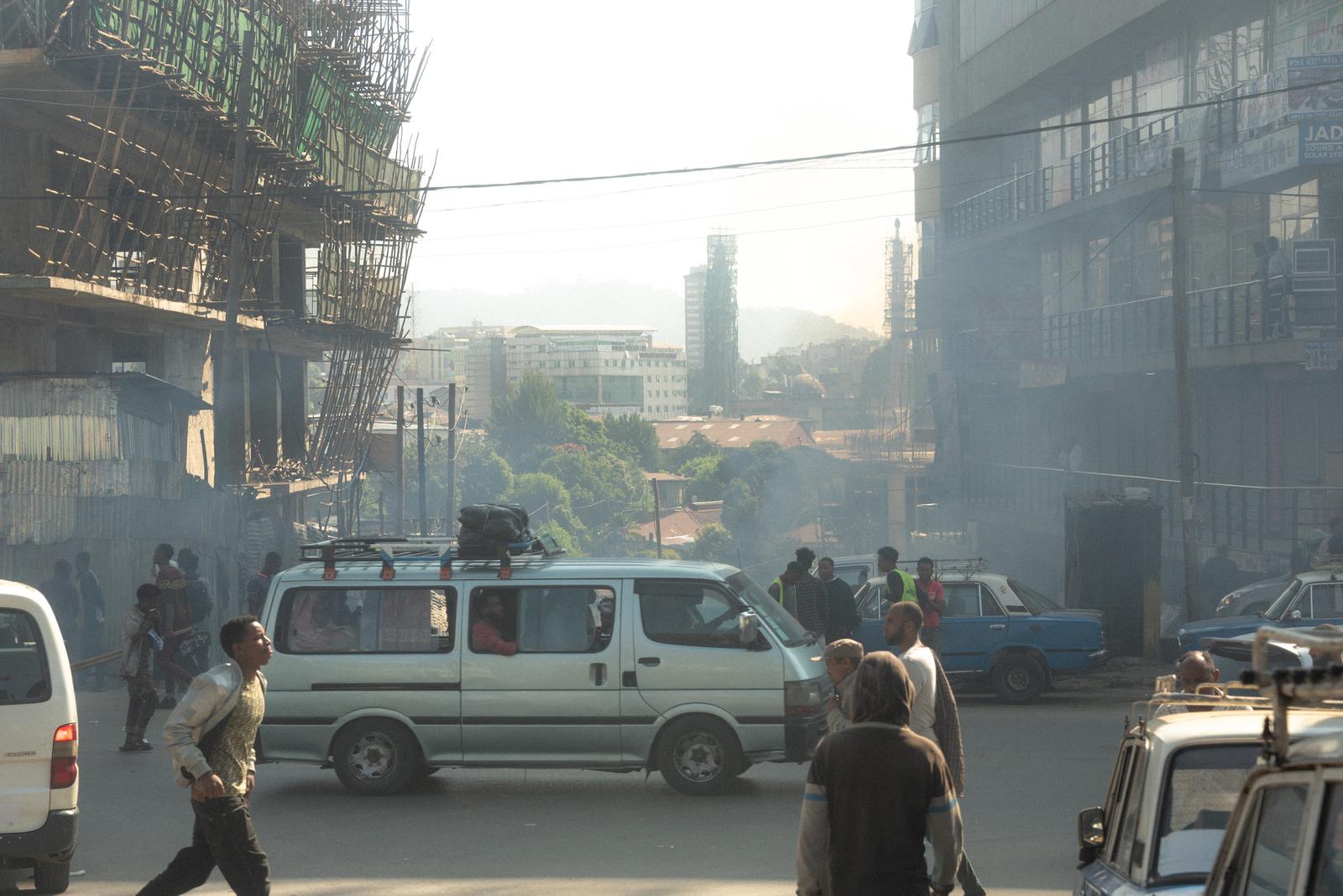
Due to the chaotic and dusty nature of the market, I only wandered a few rounds; it would be better if I was accompanied by some local guide. When it comes to souvenir matters, purchasing from the market might not be the best choice, as you can buy it directly at the airport with transparent prices and beautiful packaging (the most renowned ones are Yirgacheffe and Sidamo coffee), alternatively you may just drop by a Tomoca coffee shop in the city. You need to spend all of your exchanged money, because you can’t exchange the leftover back to foreign currency, so it’s recommended to just exchange a sufficient amount of cash for the whole trip.
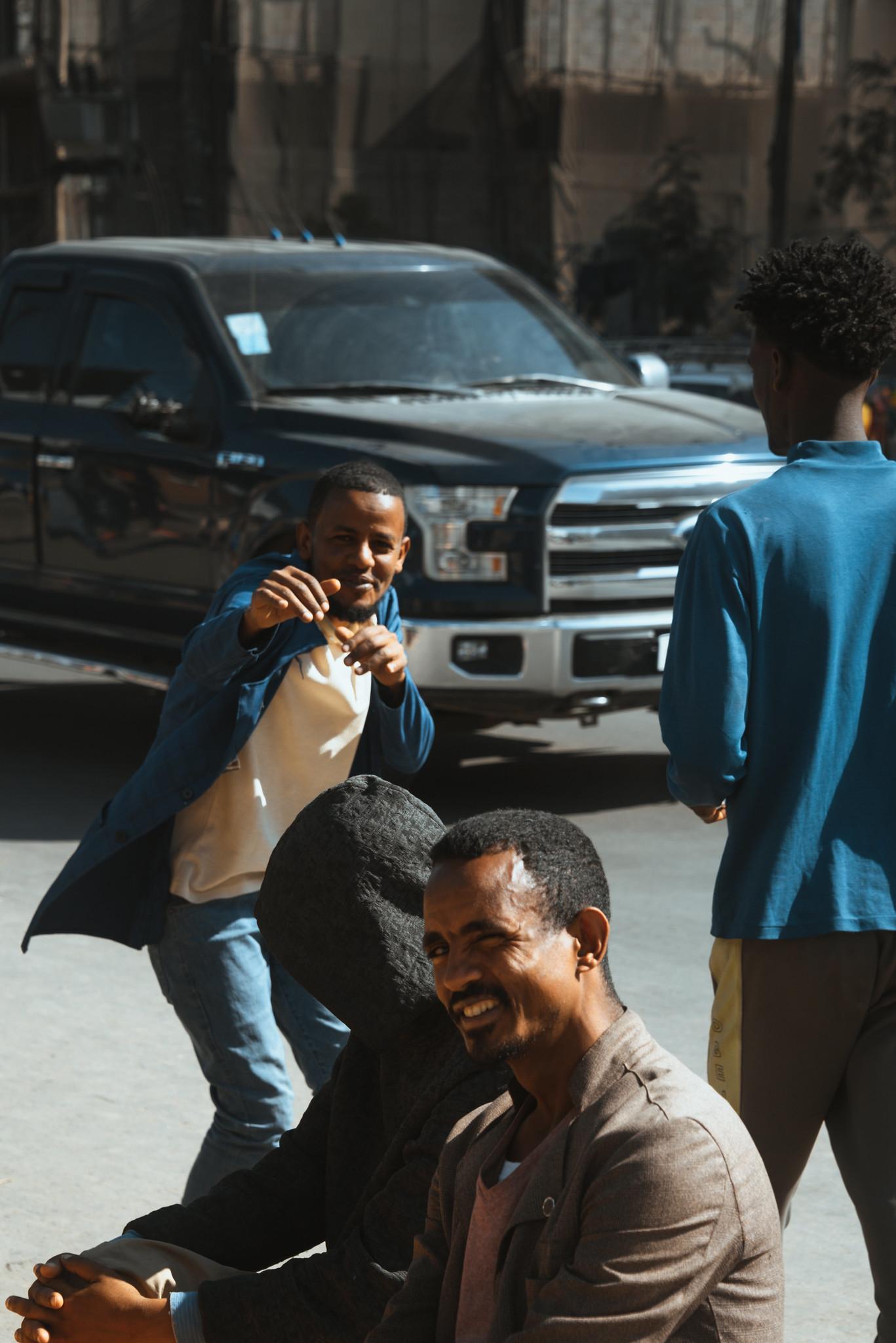
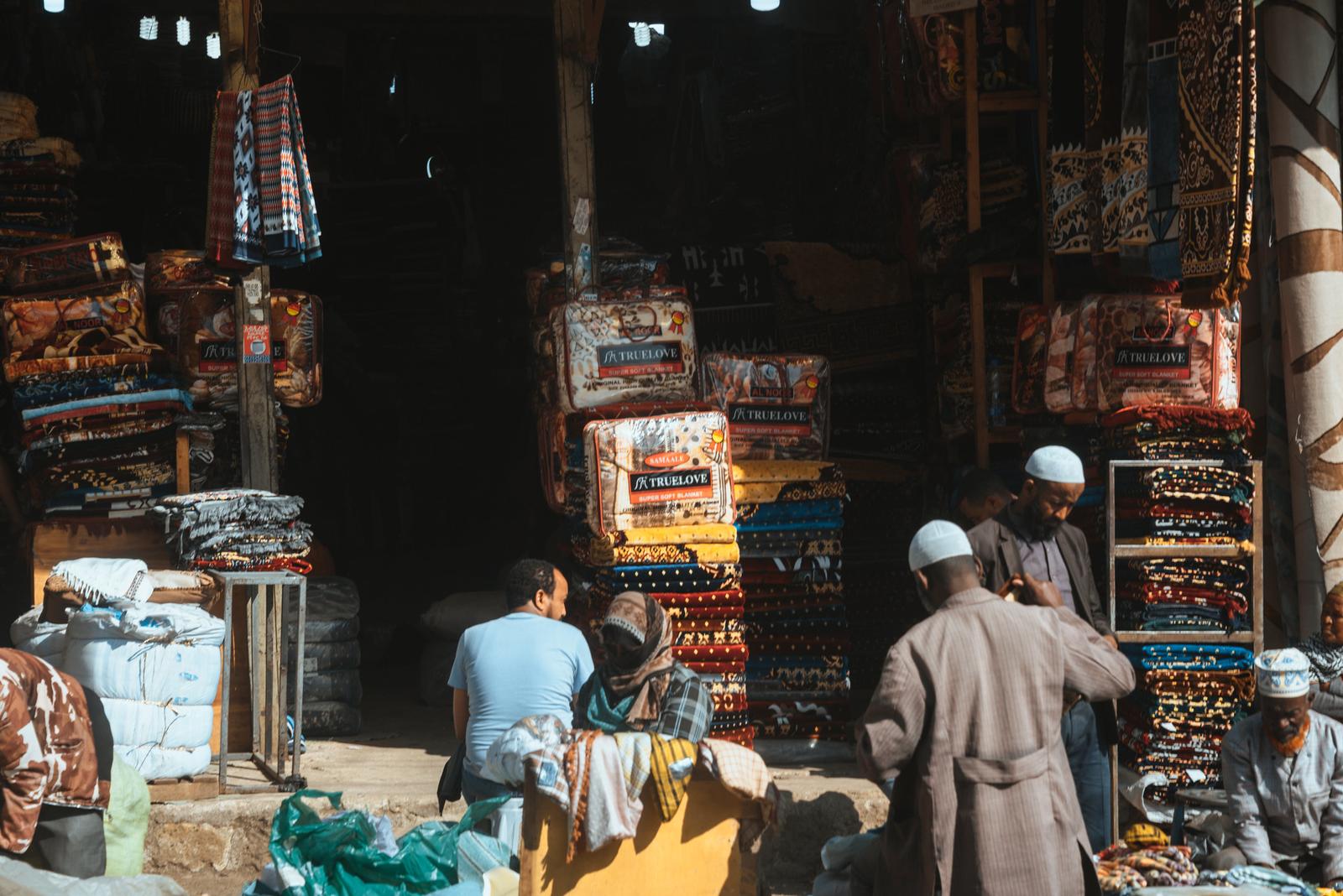
Mercato Market was also the last visited destination before my departure. It wasn’t a smooth journey as it’d been expected to be, as at the last minute the flight connection system had some glitch resulting in incorrect update of departure time; luckily thanks to my early arrival at the airport, the issue was resolved in time. It’s also a valuable lesson: when traveling to countries with underdeveloped services, always beware of unexpected hassles.
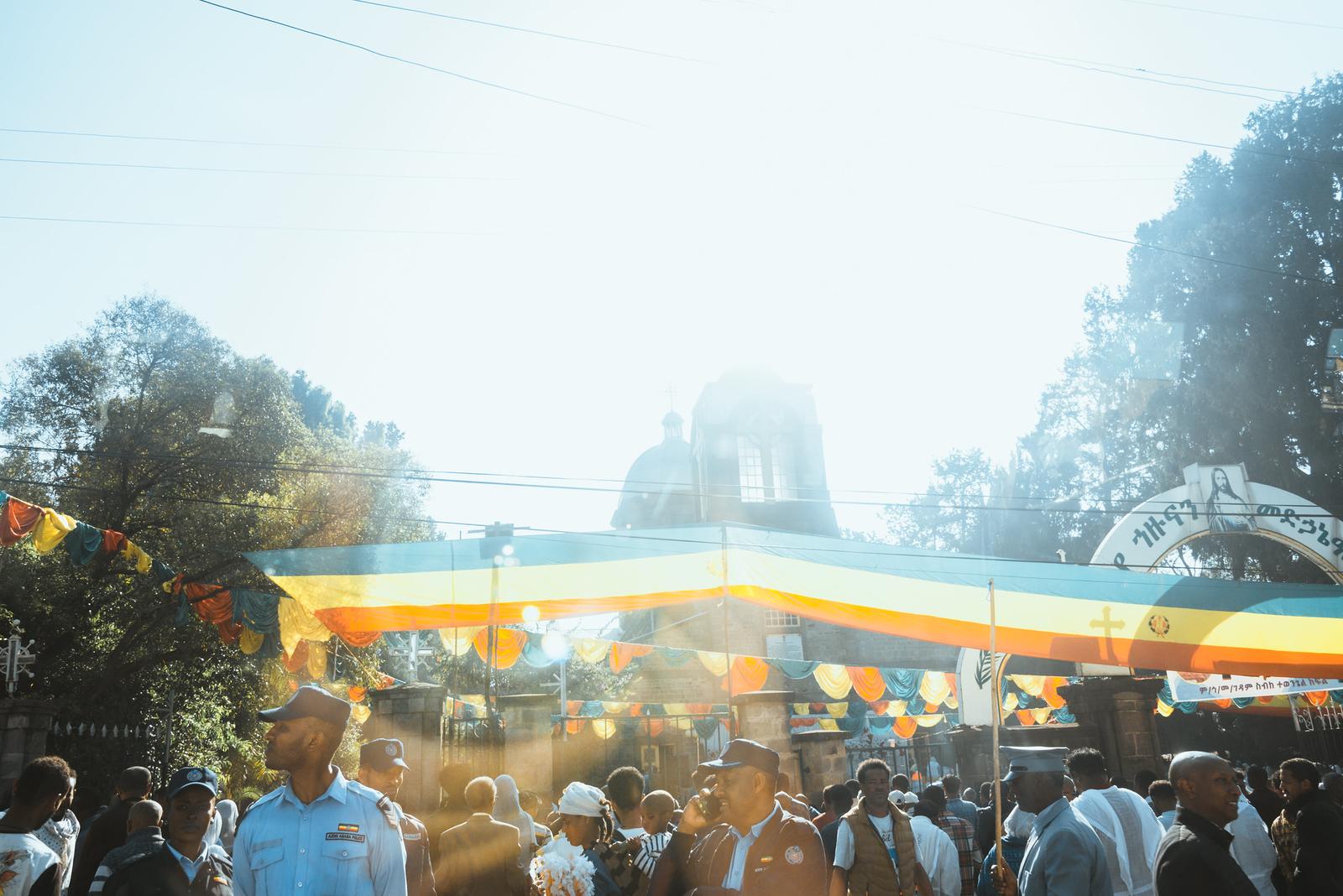
Comments
This post is a part of the Ethiopia series.
© Zuyet Awarmatik
About
Zuyet Awarmatrip is a subsidiary identity within the personal ecosystem of Zuyet Awarmatik, focusing on travel and photography.
A Vietnamese usually regarding himself as a carefree solo Eastern backpacker, alongside with his main profession as a UX engineer. Neither being a freelancer nor a digital nomad, this website is built for the purpose of recording his life experience and happenings instead of letting them go into oblivion. He hopes these photos here shall always deliver the colorfulness of this worldly reality.
I was once again meandering on the distant roads, yet it's my fleeting springtime that wouldn't return.

